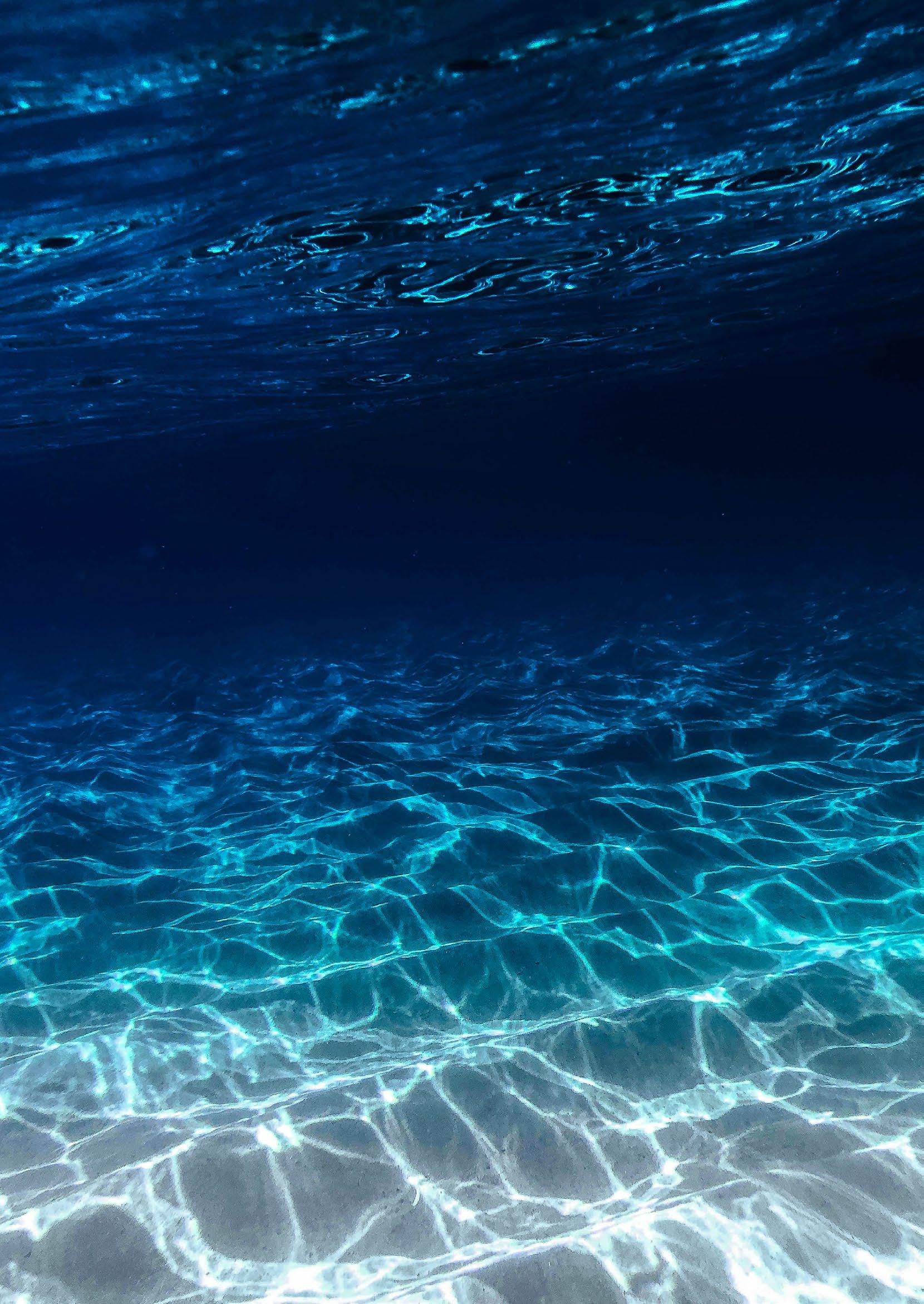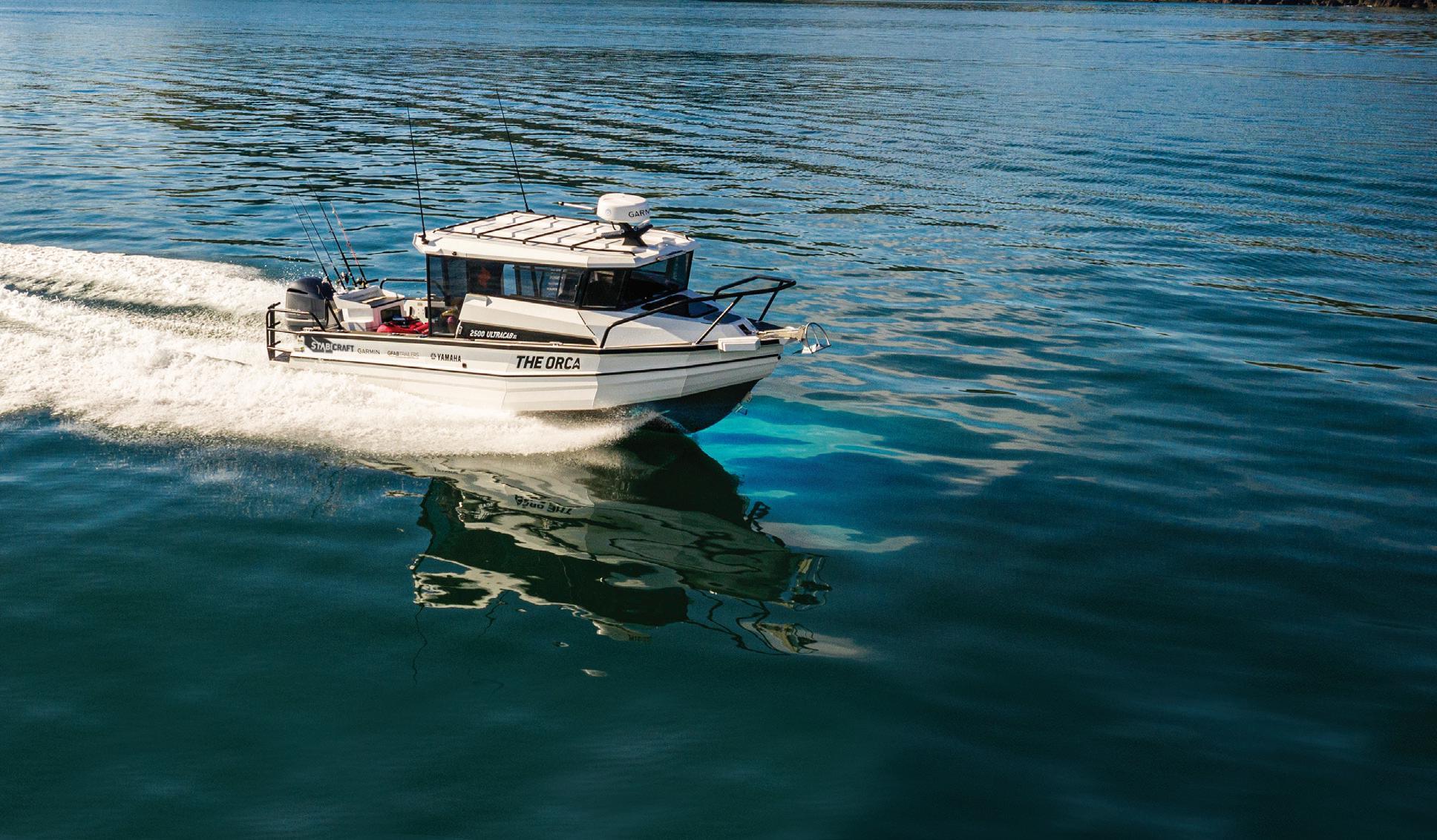Winter 2023
BIG CITY
SEA TROUT
BONUS COMPETITION
WELCOME TO THE TUNA CHAMPIONS

RIG RECYCLE
TANGAROA BLUE FOUNDATION
INCLUDES
MAGAZINE









Winter 2023
BIG CITY
SEA TROUT
BONUS COMPETITION

RIG RECYCLE
TANGAROA BLUE FOUNDATION
INCLUDES
MAGAZINE








Same compact features as the Next Gen Mirror




Even more compact design looks great on smaller vehicles and vehicles with service bodies
Larger mirror surface than the average OEM mirror
Large convex mirror design ensures wider visibility and safety
Choice of Manual Fold or Power Fold base*
2 in 1 Category 5 LED indicator. Installation requires hard wiring if not a standard feature. Category 6 LED indicator available as optional extra
*Options may vary depending on make, model and year of vehicle
While winter may be the time that many fishos go into hibernation for the coldest part of the year, especially those in the southern regions of Australia, there are still many that will brave the cold and the wet in the hopes of landing a trophy or two. One such angler is new Spooled contributor Damon Sherriff of Tasmania, who shares a few tips and tricks on tackling winter sea trout with bait in estuaries and rivers. Keep an eye out in future issues as the knowledgeable Tasmanian takes the time to pass on what decades of fishing Tassie waters have taught him.
Starlo is back with some invaluable info on finesse fishing our beaches and rocks during winter. Make sure to check out his videos, which are once again loaded with hints on how to get the most out of your time wetting a line.
As anglers, two of our biggest responsibilities are the environment we use and the sustainability of our industry. We have all witnessed the consequences of not promptly and properly responding to crucial information. That is why we at Spooled couldn’t be more excited about having the Tangaroa Blue Foundation and The Tuna Champions on board as regular contributors. Both come armed to the teeth with scientific backed facts on how we can all help to maintain that which we value so much for years to come.
Cheers.
Spooled is dedicated to providing content that is not only entertaining but focused on being current, relevant, informative and educational. All content contain within the magazine remains the property of Spooled must not be copied without permission.
Editor - Shane Mensforth
Advertising Manager - Rob Maya

Video Editing - Dillon Bryan
Contributors for this issue:
Steve Starling
Damon Sherriff
Tuna Champions
Tangaroa Blue
Marian Miller
Don't forget the new Spooled App is available NOW to download for FREE!

Simply tap here
Congratulations to our competition winners from last issue, Matthew McAuley (NSW), Craig Sinclair (QLD) and Ric Wimmer (WA), will all receive their prizes from Predator Lures.
 Production Manager - Simon Bryan
Production Manager - Simon Bryan
Fish can’t resist ‘em...




Australia’s best Spinnerbait, made by anglers, for anglers!



DAMON SHERRIFF PROVIDES ALL YOU’LL NEED TO KNOW TO CATCH TASMANIA’S WONDERFUL SEA TROUT.

The Author with a beautiful North East Tasmanian Sea Trout.

Growing up in Launceston, Tasmania, was one of the best experiences of my life. As a young child I was as obsessed with fishing, as I still am today. I loved fishing the two main rivers that run through the estuary in the middle of Launceston city. In my early teens I was a fanatical trout fisherman, using bait, lure and fly to catch sea trout from both the North and South Esk Rivers.
I started branching out and tying my own whitebait flies to target the estuary and sea trout that lived at the headwaters of the Tamar River Estuary. The beauty of all this fishing was it was right at my doorstep; I could walk or ride my bike to most of the good fishing spots if my parents could not take me in the car.

Once a Sea Trout has been in the estuary for a few weeks, they return to brown trout colouration.

By my late teens I really started targeting the sea trout that visited the headwaters of the Tamar and would run up the two Esk Rivers as far as they could go. I used to haunt the local tackle shop, Terry Charlton’s Sports Store, back in the ‘80s. They had a photo wall of fish caught around the local area, and I was in awe of the sea trout pictures up on that wall. Some of them were in excess of 5kg. I had big dreams of catching one of my own like that one day.
Over the years I fished pretty hard with all methods, and I found some of the best fishing was after dark. My friend and I used to fly fish the Cataract Gorge in the heart of Launceston. It was a young person’s game, as you had to climb down a steep cliff to cast to the sea trout, which where feeding on the whitebait under the huge flood lights along the walkway. We caught some lovely fish there up to around 3kg; it was all sight fishing, and we often did not make cast until a fish was spotted darting in and out of the light from the shadows. This was great fun, and I have some fantastic memories of fishing there, but that big fish was still what I really wanted.
As a young man I decided to put in more time bait fishing for them, as most of the big fish back then were nearly always caught on bait. I started fishing the Trevalyn Power Station, an out-flow that runs into the Tamar, which is a bit of a hot spot. Huge turbines cut up eel, redfin and small trout that come out of the pipes and create a bit of a feeding event for the city sea trout.
Although this sounds good, it is still very challenging fishing. Normally, long hours are involved between fish, but it makes it very rewarding. I have fished here for many years, but still haven’t caught the fish I longed for. Others did though, and I saw sea trout up to 7kg caught. Being a fish taxidermist, I got to see a lot of the big trout caught from there, which was a real eye opener, and only made me hungrier for a trophy sea trout.
I spent hours and years at the Trevallyn Tailrace with no success. I caught plenty of trout up to 4.1 kg, so I sort of lost interest in it after a while and concentrated on my snapper fishing — also in the Tamar — until one of my sons showed interest in the area. Jack had recently moved to Riverside, a suburb of Launceston and only a short distance from the Trevallyn Tailrace.
He started putting in many hours fishing the Tailrace in hope of that trophy fish. He had a lot more success than me as a young man 30 years before, and one recent season was an absolute cracker, producing many big sea trout between 3.5-4.5 kg; still not the fish he was after, but some very respectable trout nonetheless. Jack has spent a few more seasons since then fishing the upper reaches of the Tamar for that elusive monster city sea trout. Unfortunately, it has eluded him, but he’s still there and still fishing.
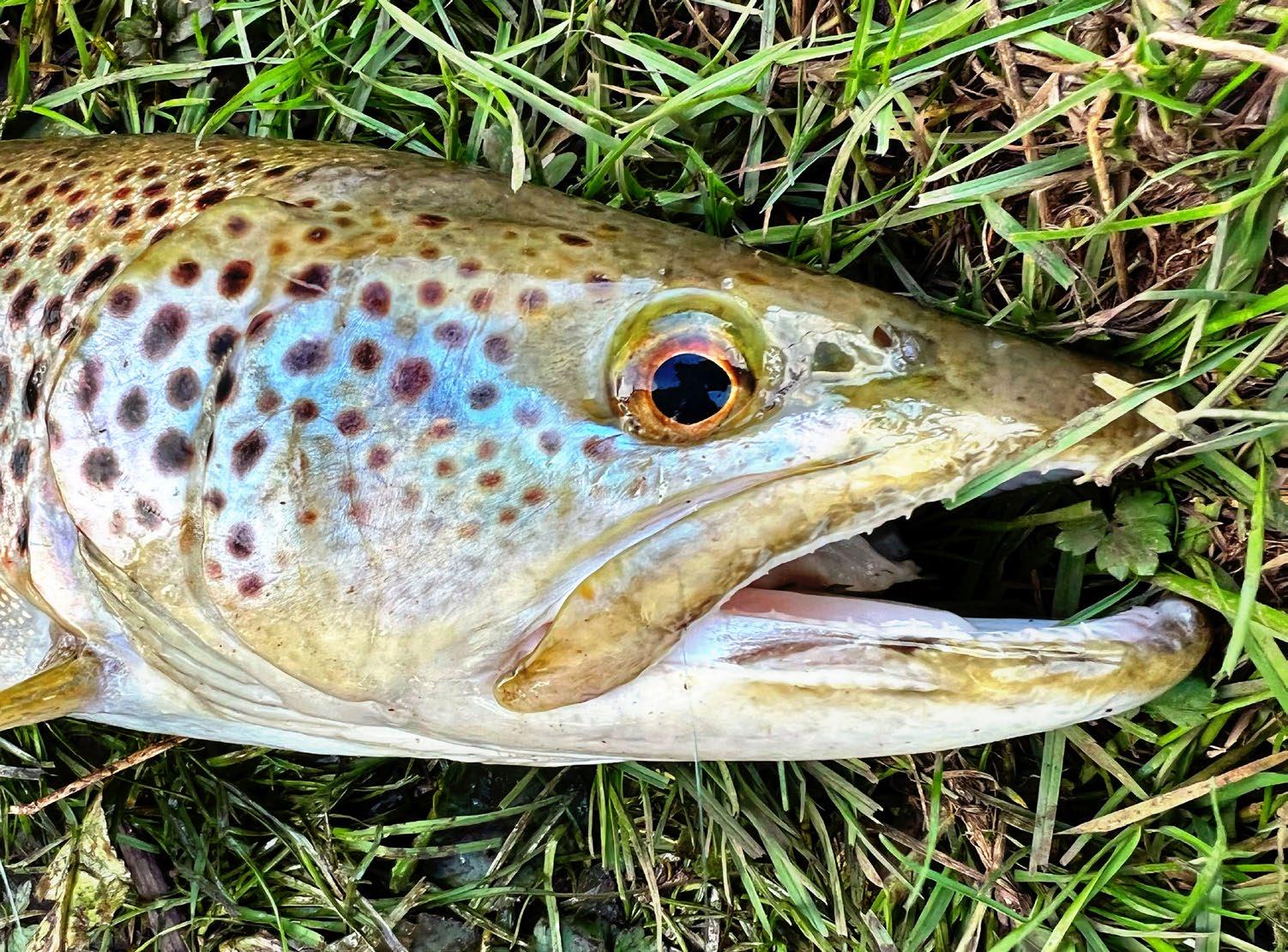
My hobby and now business is fish taxidermy. I have been creating skin mounts and replicas for around 30 years on and off. Over the years I have had customers bring me some mega sea trout from the Tamar to mount, which has been a bit of a tease. I always get reinvigorated when I see one of these beasts. The biggest from the Tamar I have mounted for a customer was a 7.5kg male. It was a massive fish with a huge, hooked jaw — just how a sea trout should look.
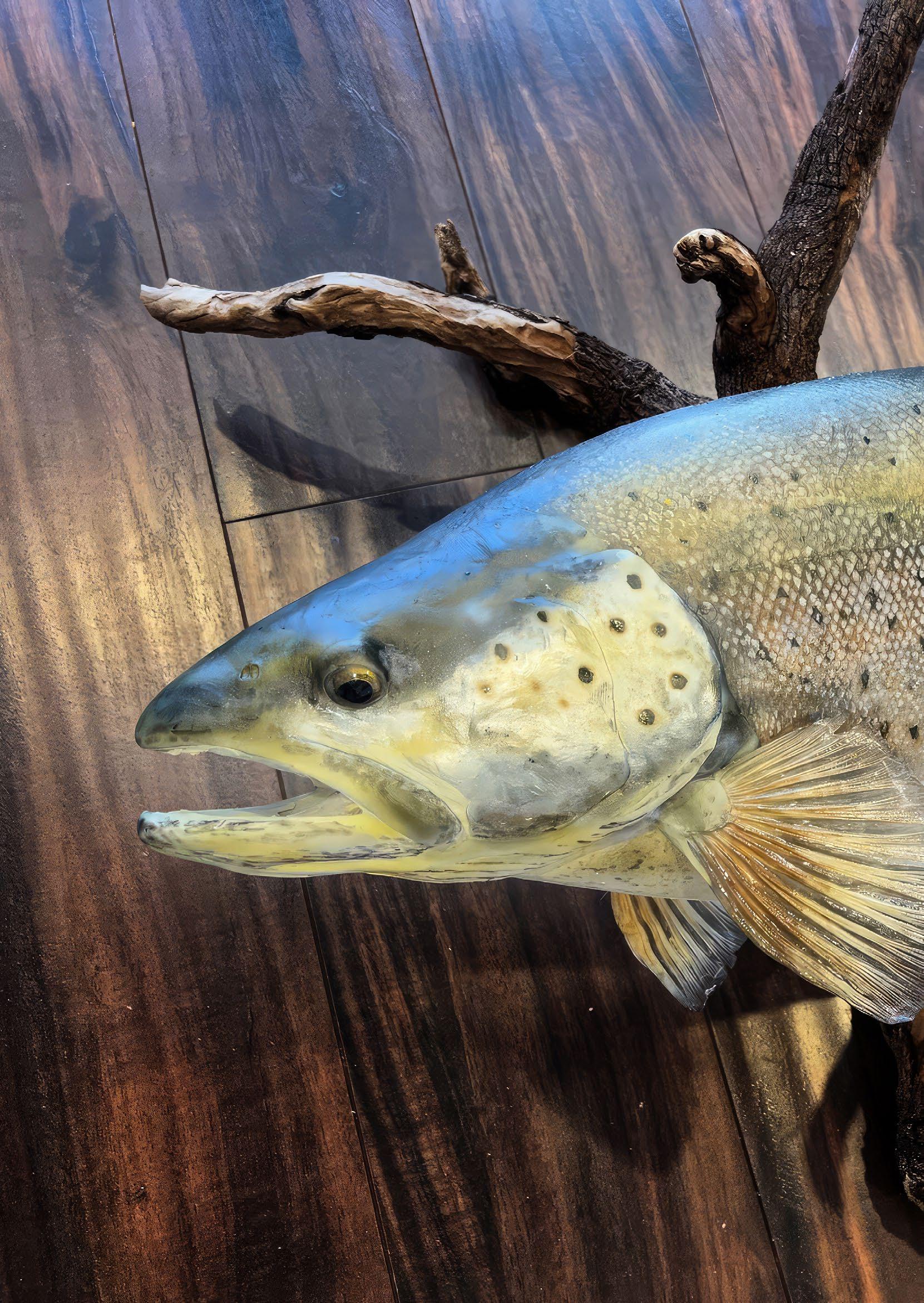
The author’s latest work of art is this magnificent 4.5kg sea trout taken from the Huon River. To see more of Damon’s work, visit Tasmanian Fish Artistry by tapping the button below.





The biggest sea trout I have mounted overall was a female, caught out of a river from the West Coast, by famous TV presenter, Peter Morse, from the show Wildfish. It was a truly beautiful creature — huge and incredibly fat. Another big sea trout I have been lucky enough to see, and is in my freezer at the moment, soon to be mounted — is a 7.8kg female caught from the Inglis River in the state’s north-west. So, the Tamar is not the only location to chase sea trout. They are in most northern estuary systems. We just fished the Tamar because it is our home ground.

Trevallyn Tailrace is a power station that, like most power stations around Australia, creates fantastic fishing. Often, fresh or salt water is pumped into the power station through large pipes, sending water through large turbines, then into the estuary. All the small and medium fish that get sucked up from the headwaters get chopped ups or sucked through, so the pipes pump small live fish and chopped fish into the Tamar. It’s like a massive berley machine. The trout get very well fed, with makes them quite challenging to catch at times. The main fish that are pumped through the pipes are eels, brown trout, redfin perch and tench. The big sea trout are often full off chopped or whole fish that has gone through them. There is also a large number of natural foods in the estuary that the sea trout will eat, including sandies, gudgeon, or freshwater flathead as they are known is Tasmania, whitebait, cucumber herring, or grayling, and galaxia.
There is only limited access to the shore of the Tailrace. A pontoon is the hot spot when there are fish about, but it regularly gets overcrowded during the good sea trout months. There is an old boat ramp just down from the pontoon that also is a good land-based spot. The Tailrace is man-made and is a muddy channel dug out by the Tasmanian Hydro Electric Commission. It has muddy banks covered in rice grass and sags, which makes angling challenging, so you have to be prepared for mud if you cannot get a good land-based spot.


Most of the baits we use in the Tailrace are fish. The Tailrace is classed as an indigenous fish area, which allows you to use fish bait legally for trout and eels, but you still require an Inland Fishing Licence to fish there. The best baits we use are sandies, eels, redfin and small trout. Purchased fish baits work quite well too, including tuna, pilchards, bluebait and whitebait. Bait seems to be the go for the big fish, especially early in the season. Once the water temperature rises, the trout are more likely to take lures. Most anglers start fishing for sea trout the first Saturday of August, which is the opening of the Tasmanian inland fishing season.
Some of the best Trout bait available in the estuaries, fresh Gudgeon and Eel.


I am just going to give you the basic rules in Tasmania, as most estuaries have different cut-off areas where it becomes inland water. You are not allowed to use fish bait in any inland water. Most of the tidal areas are OK for fish bait, but if you are unsure, it’s best to contact Tasmanian Inland Fisheries and they will tell you the image line cut-off point. Also, the Tailrace is a bit different to most estuaries; it’s in an Indigenous Fish area, so you do require a licence. You also can fish all year, but when the inland season closes, you can only catch Eels. Trout must be released unharmed. I know it’s a bit confusing, but if you are unsure, always call Inland Fisheries, who will be more than happy to help you out.
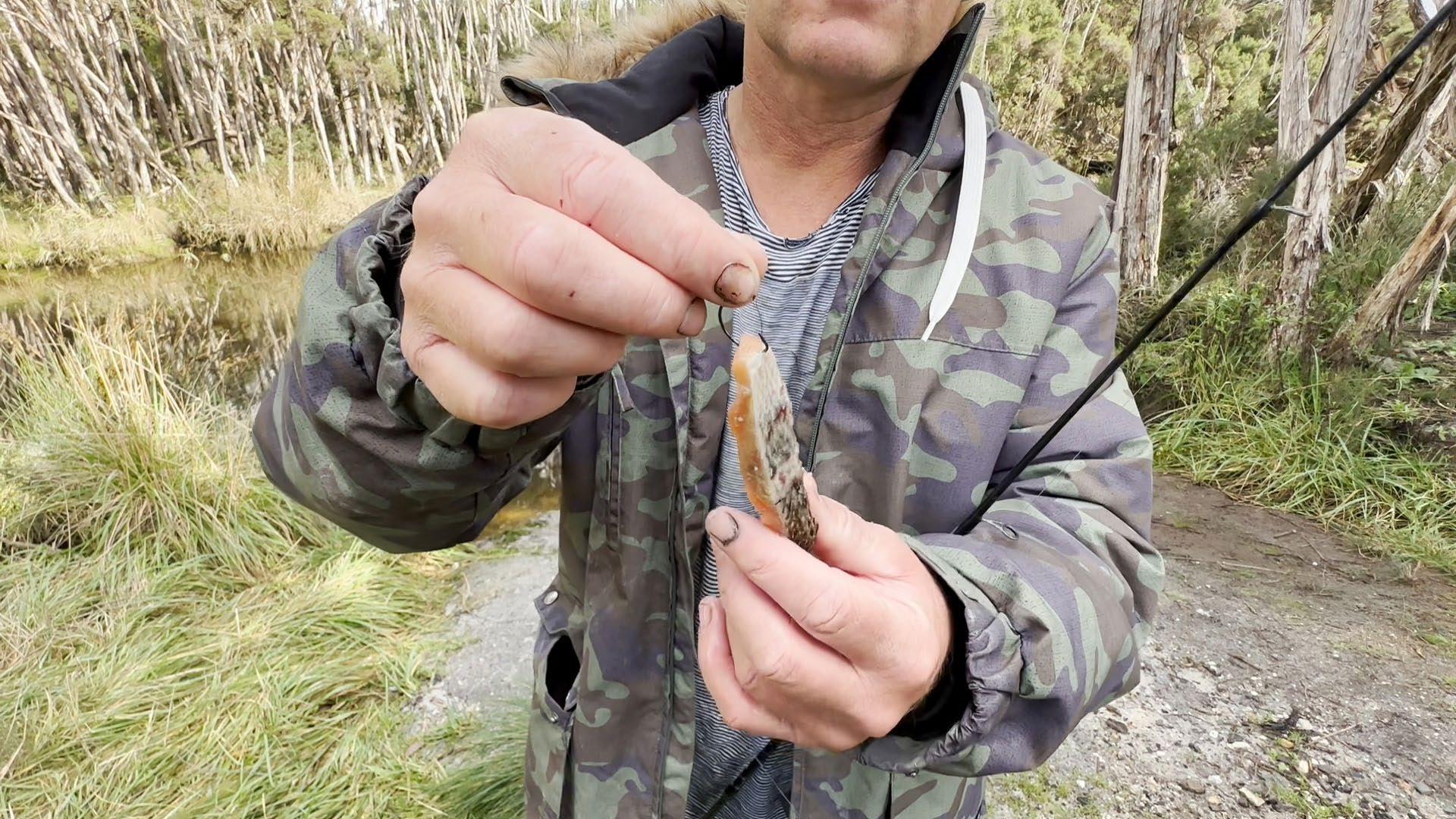

There is no rocket science to the best rig, as most anglers use a simple running sinker — no different really than you would use for a lake or river trout. A medium-size ball or bean sinker, a main line of around 5kg (braid or mono) with a leader of about 1 metre of 6kg mono will work nicely. The hook size really depends on what bait you have, but my favourite pattern is the wide gape, and just for a rough guide, size 4 will cover most situations.
Waiting for a bite by the Little Forester River in the States Northeast.

It’s not a rich man’s game. A simple inexpensive outfit from your local tackle shop is well and truly capable of landing you a trophy sea trout. The rod is best at around 7 feet long with a light to medium taper. A nice soft tip is preferable to detect the picky little bites big sea trout sometimes make before taking or rejecting a bait, and the rod’s best line class is 2-4 kg.
Baitrunner reels are ideal in conditions like that of the Tailrace in Launceston.

Reels are so cheap these days. Any of the leading brands make great reels between $60 to $100 that will easily undo a big sea trout. We like the small Shimano Baitrunners for this sort of fish. Because the current in the Tailrace can be pretty strong, it’s difficult to free-spool the fish once it takes the bait. The Shimano Baitrunner allows you to do this with the bail closed. There is a second free-spool drag at the rear of the reel that allows you to fish a very light drag when the reel is in the rod holder. Then, once you have a fish taking your bait, a click of the handle and you’re back on the preset front drag ready to strike the fish. These reels have been around for many years, and this feature is very valuable for the sea trout angler. Also, a large net is a must. I like to use my snapper net, which I find it perfect for big fish.

A lovely fresh run fish from the Trevallyn Tailrace in Launceston.
That about sums up the fundamentals for basic sea trout bait fishing. There are many other good locations around Tasmania, and my best advice is to get some local information. Most local tackle stores are up to speed on local sea trout spots and more than happy to help. Also, if you are not familiar with the estuary, make sure you call or email Tasmanian Inland Fisheries for all the rules on the area. Just don’t expect to catch a fish on you first trip. It’s not easy fishing and a lot of time and patience is required, but remember, there is a chance of a once in a lifetime fish in all of our estuaries.





LIKE MANY THINGS IN LIFE, IT’S THE SMALL CHANGES THAT MAKE THE BIGGEST DIFFERENCE. THIS HAS NEVER BEEN MORE RELEVANT THAN WHEN YOU’RE CATCHING TUNA. BACKED BY THE INSTITUTE OF MARINE AND ANTARCTIC STUDIES AND THE FISHERIES RESEARCH AND DEVELOPMENT CORPORATION (FRDC), THE TUNA CHAMPIONS PROVIDE VITAL INFORMATION TO GET THE BEST OUT OF YOUR CATCH.


Tuna Champions’ ethos is about taking care of and valuing your fish, whether you’re planning to release or keep your tuna. If you take to the water with the aim of releasing fish, good preparation is paramount. Studies show simple changes, such as switching from treble hooks to single hooks on hard-body lures, can improve the chance of a tuna’s survival by up to 23 per cent. The fish isn’t the only one to benefit from this change; you are also less likely to straighten hooks using a heavier gauge single — and we’ve all been there or been close — but an impaled single hook is much easier to remove than the classic treble. Other considerations before wetting a line include carrying the appropriate equipment, such as knotless landing nets to prevent handling damage and heavy-duty gear to minimise the fight time.

Yellowfin tuna average around 20kg but a mature one like this can get much larger.
 Image - Al McGlashan
Image - Al McGlashan
Taking a few simple measures when handling tuna can greatly increase the chances of a successful release.
 Image - Al McGlashan
Image - Al McGlashan
Now you take to the water, you’re skilled enough to catch a tuna, so where to from here? Ideally, the release process should take place in the water to minimise the stress on the fish. Another reason for keeping tuna in the water during the release is their breathing method. They breathe through a process called ram ventilation, which requires a flow of water over the gills. Therefore, if the fish is on the boat or in the water and the vessel is stationary, the fish is not able to uptake oxygen. We understand that releasing fish in the water is not always possible for reasons such as the vessel having a high freeboard or you’re trying to ensure an accurate tag shot, so smaller tuna can be pulled into the boat using a landing net and rested on a foam mat. This prevents the fish from bruising, and a wet towel over the eye of the fish will minimise stress.
If you’re inserting a tag, it’s important to insert the tag between the rays just below the second dorsal fin and high on the shoulder. The tag should be pointing towards the tail on a 45-degree angle, which allows the tag to lock like an anchor in the rays and improves the chances of the tag remaining in the fish. When returning the fish to the water, wearing wet gloves or making sure you have wet hands will also prevent any unnecessary damage to the skin through friction, as tuna are covered in a slime to prevent them from bacteria. Dry hands will remove the slime and make the fish susceptible upon release to contracting bacteria as it attempts to recover.


Of course, you’re not going to throw a tuna back in the water without taking a photo for the ‘gram. Because if you didn’t ‘gram it, did it even happen? Be mindful that the longer the fish is out of water, the longer its recovery time. Like to humans, fish need water like we need oxygen. Have everything ready to get the perfect shot, making sure the fish is cradled and your fingers aren’t in the gills. Not only will this potentially damage the gills, but it could leave you with some scratches on your fingers. Now you’ve got the socials ticked off and you’re returning the fish to the water, gently lower the fish into the ocean, head first.


Using heavier gear will help reduce fight times, meaning you give the fish a greater chance of survival upon release.



 Image - Al McGlashan
Image - Al McGlashan
For larger fish it’s obviously not practical to bring them on board, so the handling takes place boatside. To keep the fish secure, large heavy-duty lip grips can be used in conjunction with a fixed gaff that sits under the tail, supporting the body weight of the fish. Avoid using a gaff in the corner of the tuna’s mouth, as it creates an additional hole that may cause further damage, potentially affecting its ability to feed. If you don’t have a pair of lip grips, you can leave the hook in and use the leader for control.
Once you’ve got the happy snaps, ensure the boat is in gear and the hook is removed from the fish’s mouth. Gently release the fish and savour the moment of watching a large tuna return to the depths. Every effort you make to take care of your tuna will give the fish a better chance of survival. For more information on how you can be a part of the change, head to our website or social media.
“Be the change, be a Tuna Champion”
fish.Image - Dennis Heinicke

















STEVE
STARLO’S FISHING “MANTRA” HAS LONG BEEN ALL ABOUT “FINESSE”, AND HE FIRMLY BELIEVES THERE ARE FEW ENVIRONMENTS WHERE THIS APPROACH IS MORE EFFECTIVE THAN ON OUR BEACHES AND ROCKS — ESPECIALLY IN WINTER!
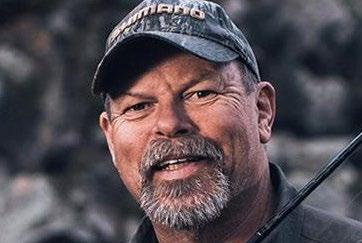
A “traditional” approach to surf and rock fishing often involves the use of gear that’s heavily over-gunned for the task at hand, reducing both the efficiency and pleasure of the process… lighten up!
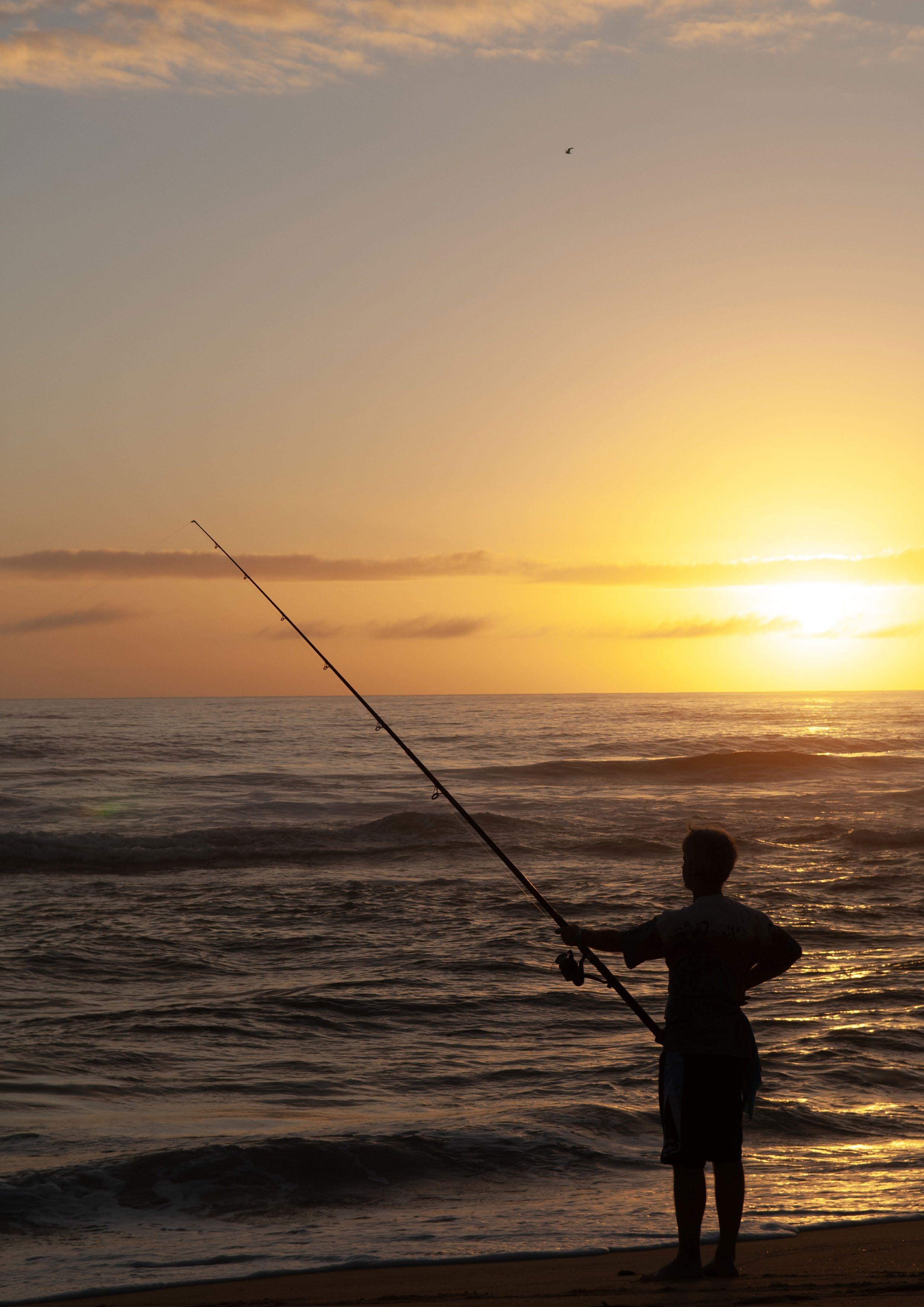
I’ve written on many, many occasions (here and elsewhere) about the multiple benefits and immense pleasures of going lighter or “finessing” when chasing fish in almost every environment and scenario. Our ocean surf beaches and rock ledges are no exception, and the chill depths of winter and early spring — when the fishing can often be tough but rewarding — are an ideal time to “lighten up” for improved results and greater enjoyment.
The fact is, many anglers still use gear that’s far too heavy for the task at hand when they’re fishing from these popular land-based locations. I suspect that the how-to books and magazines of old were major culprits in creating the false impression that you need a rod reminiscent of a telephone pole, a reel big enough to winch up boats, and line like fencing wire to be a “proper” surf or rock fisher… In reality, nothing could be further from the truth!
All the old text books suggest loading for bear when chasing black drummer or pigs… Starlo prefers to lighten up, even on these thugs of the wash!
Let’s get real for a moment, and accept that the vast majority of fish encountered by anglers in these shore-based scenarios will weigh-in at considerably less than a couple of kilos… often less than one kilo. Read that previous sentence again and let it sink in, then ask yourself if you honestly need 15 kilo-plus breaking strain line and a 10 000 to 14 000-size spinning reel, or a deep-spooled sidecast mounted on a heavy, stiff rod, to catch such fish. The obvious answer is clearly “no”!

A light 2.5 to 3.5 metre rod with a fast taper matched up with a 2500 to 4000 size spin reel is an incredibly potent and versatile outfit on both the rocks and our beaches.

Sure, we all dream of catching bigger fish, and they do come along from time to time. But are you willing to dramatically reduce your overall, day-to-day catch rate and make your shore fishing a tiresome chore, simply as some sort of insurance policy against possibly losing that one-in-a-hundred whopper when it finally jumps on? Or would you rather hook far more fish, have lots more fun, and still be in with a good chance of landing a trophy catch when you hook it? For me, it’s a no-brainer!
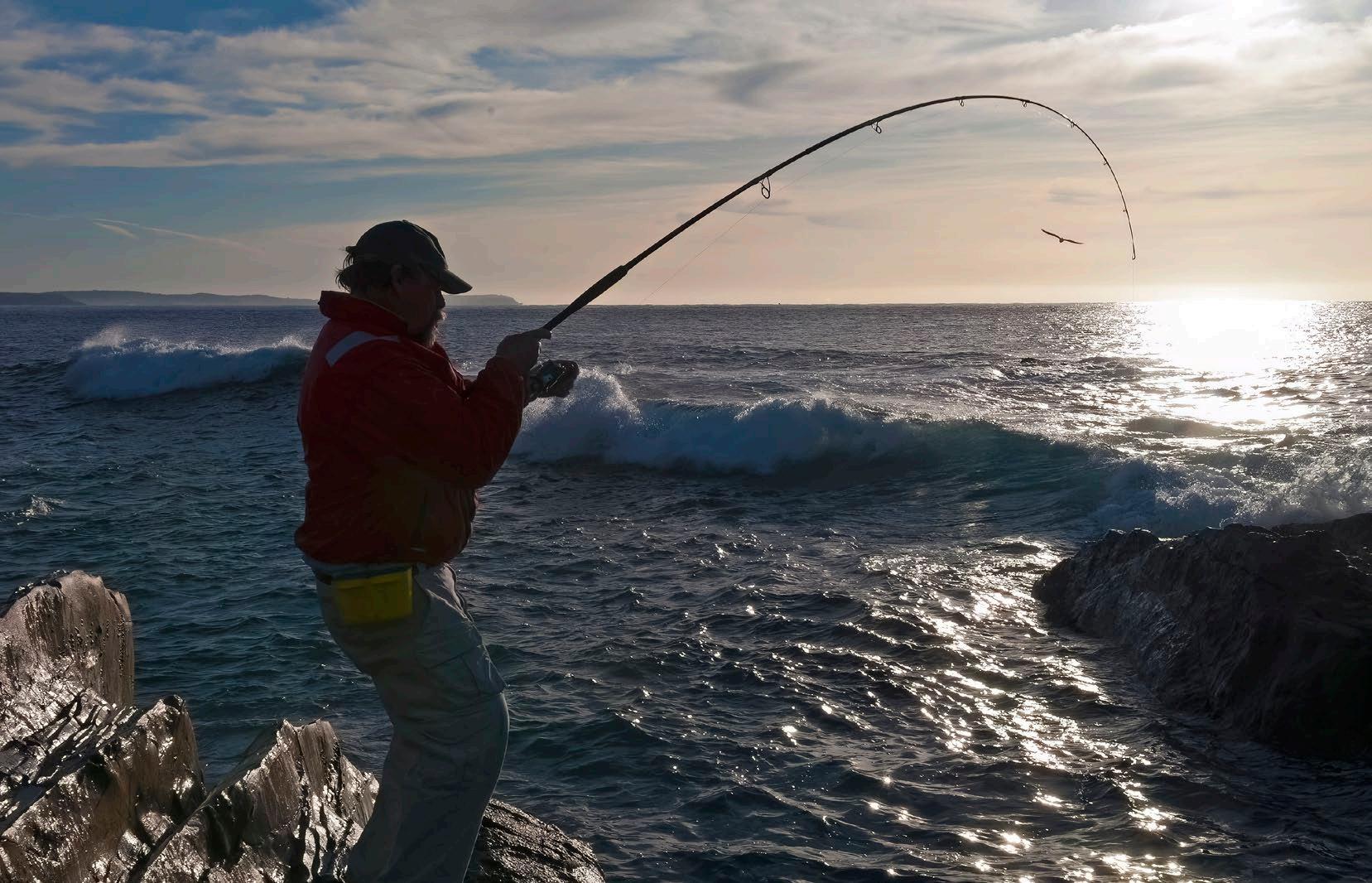
So, what are the main benefits of going lighter on the beach and rocks? Firstly, there’s a reduction in the physical weight of your rod and reel. That means less fatigue, easier casting, more enjoyment, and a reduced desire to “park” your outfit in a rod holder while waiting for bites. Held rods catch more fish. Simple as that.

Secondly, you’ll be able to effectively use lighter sinkers or smaller lures. This can translate into a lot more interest from the fish. On the rocks, it’ll also dramatically reduce the number of times your rig snags up on the seabed. Allowing your bait to waft down through the water column and move more naturally with the current and wash makes it seem far more natural to cautious fish. That means more bites.

Going light on the rocks allows the use of much smaller sinkers, which in turn reduces snagging and results in more bites from targets like this pugnacious “pig” or black drummer, a.k.a. rock blackfish.
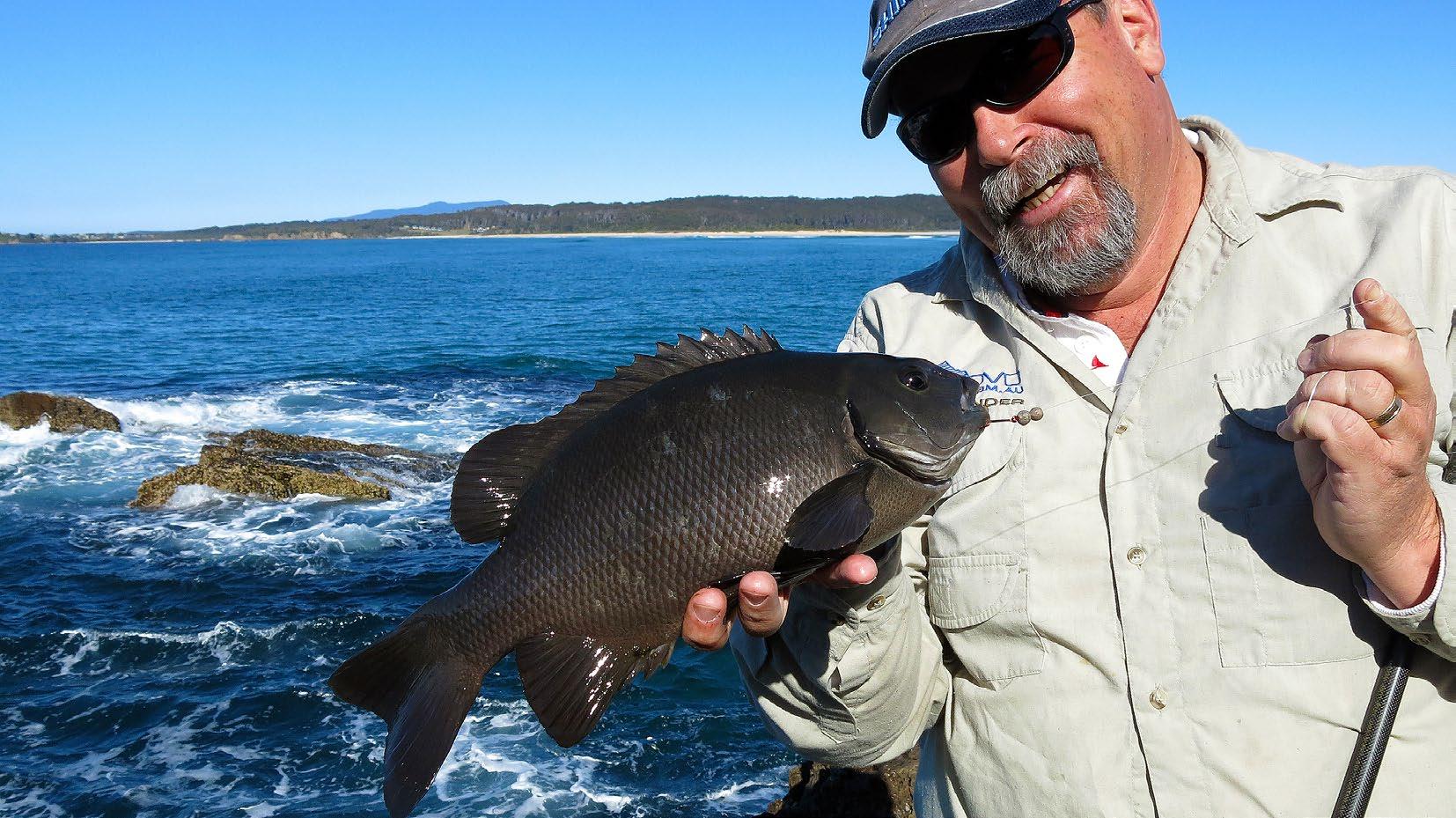
Reducing the bulk of your kit can also make you more mobile, allowing you to move and look for fish, rather than waiting (and hoping) that they come to you. You’ll also be less inclined to want to punch holes in the horizon with every cast. It’s amazing how often anglers with heavy gear and anchors for sinkers cast over the fish. On both the beach and the rocks, some of the best fish are often found much closer in to shore than the heavy tackle brigade ever realise.
 Swinging in a keeper bream finessed from the suds.
Swinging in a keeper bream finessed from the suds.
One of the great things about modern finesse tackle is its affordability. You can put together a top notch outfit — rod, reel, line, leader material and terminals — for well under $250.

How light you should go is a bit of a “how long is a piece of string” question. It really depends on your location, the prevailing conditions, the target species list, and your aspirations. But stepping down a line class or two will almost always improve your results, regardless of all those variables and specifics.
One from the archives! A much younger Starlo with a solid surf mulloway. By all means, gear up when targeting jewfish or gummy sharks, especially at night. But don’t make an “elephant gun” your go-to gear on the beach!
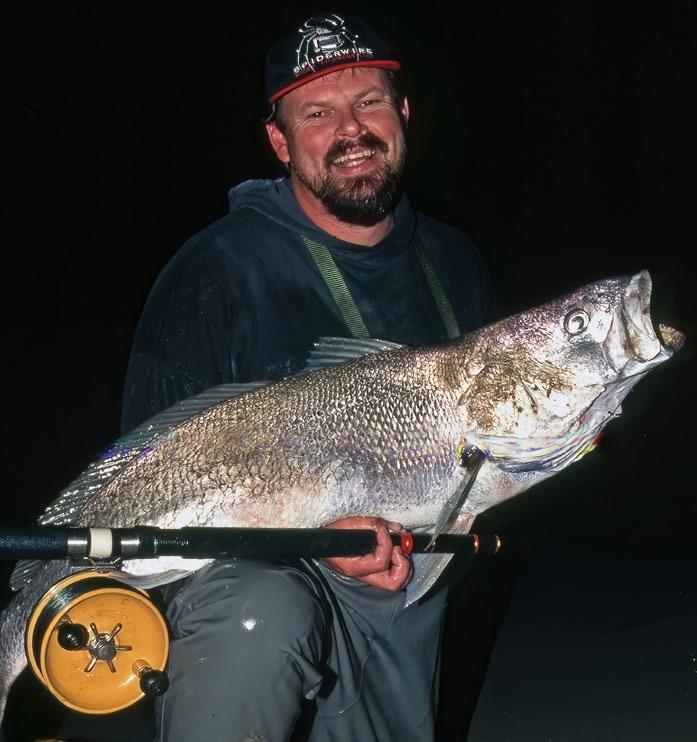
Going light is about more than just tackle selection. Paring down the gear you carry to fit in a simple shoulder bag or small backpack frees you up to be mobile and find more fish.
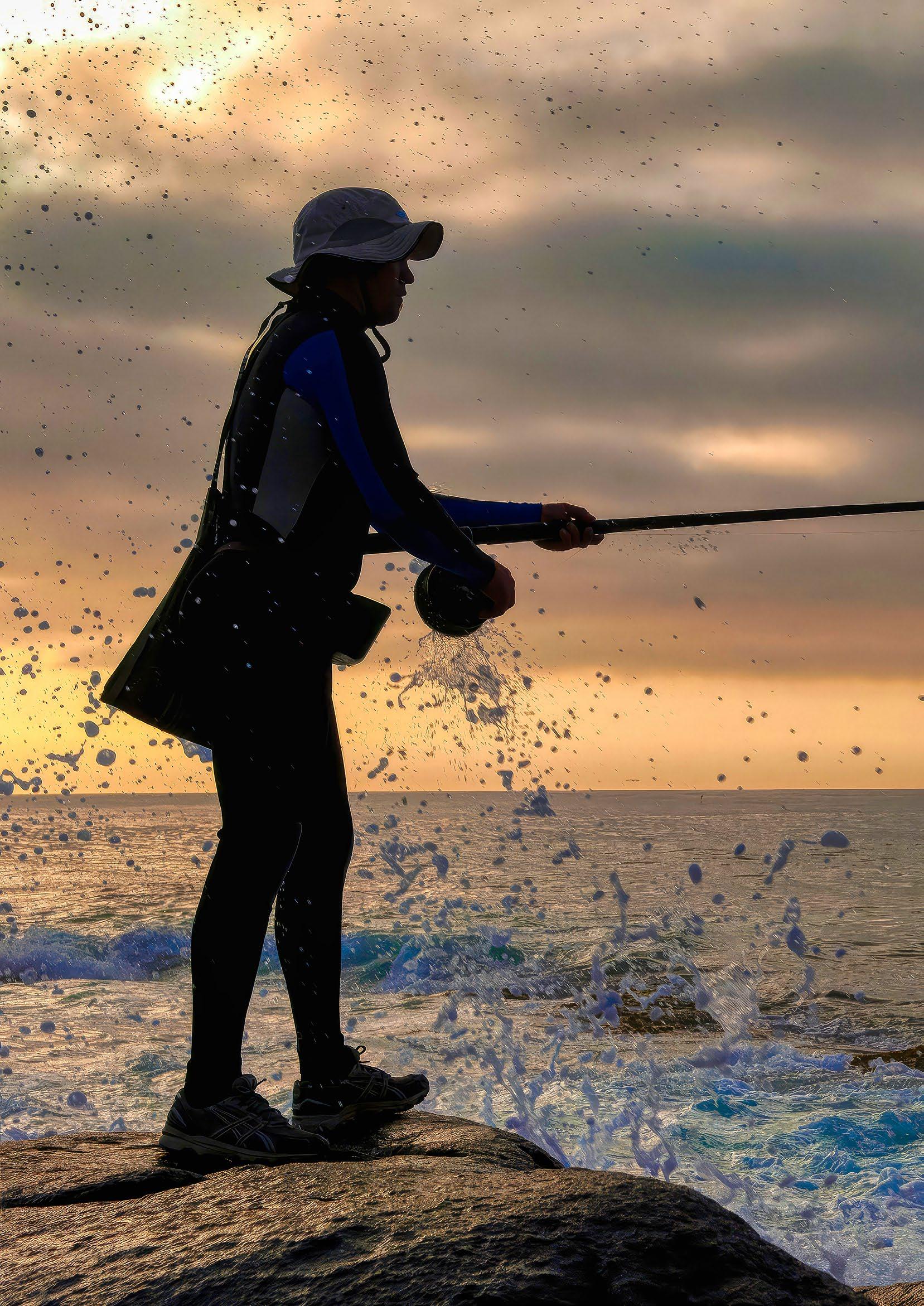
My favourite light outfit for land-based fishing in the surf or off the rocks with both baits and lures consists of a light to medium 3 to 3.2 metre (10’ to 10’ 6”) rod rated for 3 to 5 kilo line, matched with a 3000 or 4000 size spinning reel spooled with 8 or 10 pound braided line. To the end of this line I typically attach a rod-length leader of 10 to 20 pound monofilament (nylon or fluorocarbon) using a proven connecting knot such as a Double Uni or an FG.
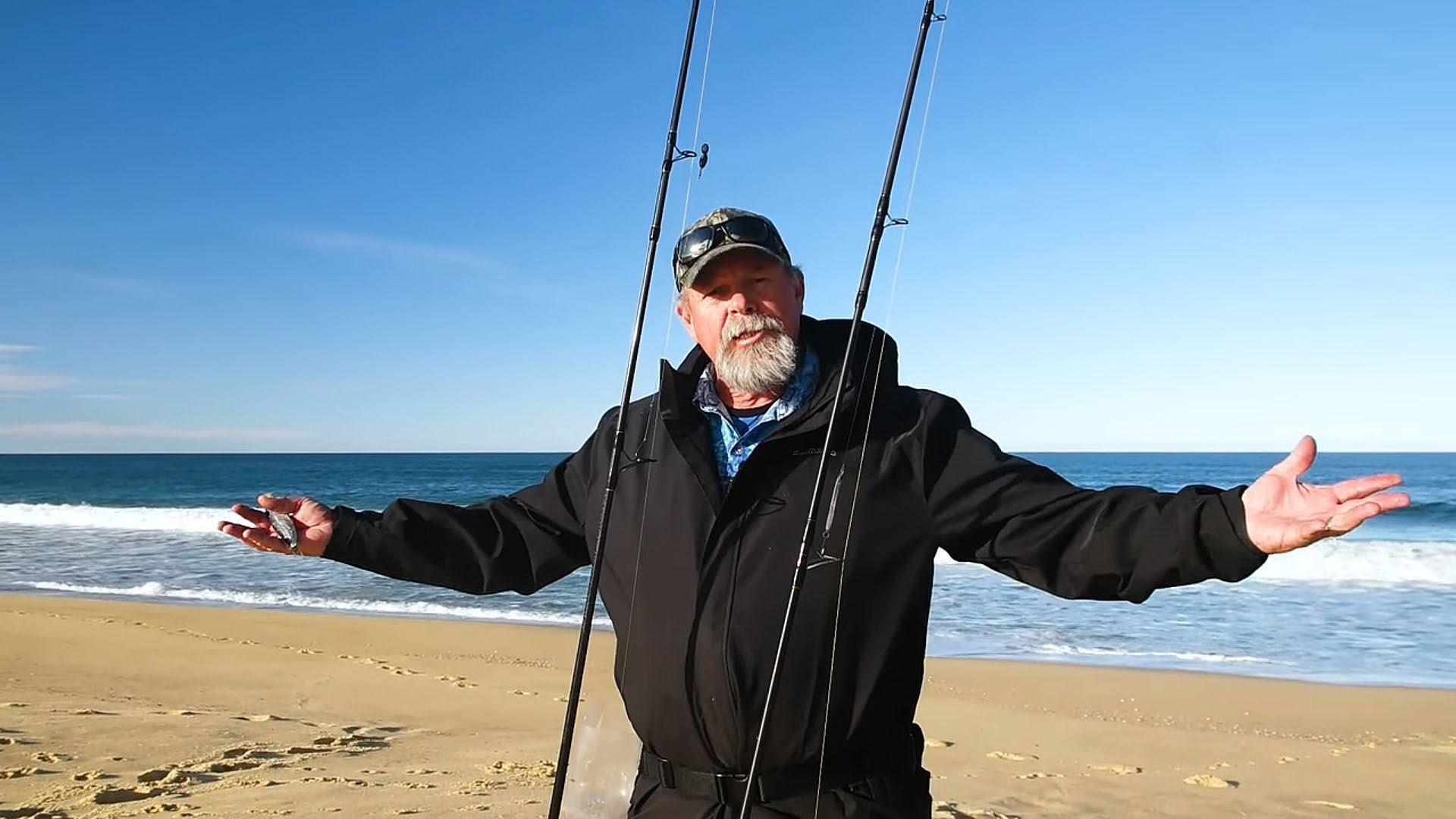
My choice of fine braid may raise the eyebrows of a few old school fishos, especially on the rocks. However, I find braid’s significant advantages far outweigh any drawbacks. The only time I’ll revert back to mono as my main line is on those rare occasions when I run an Alvey sidecast, as I find braid a bit hard on my hands and fingers using that style of reel.

Now obviously, if you’re seriously chasing big mulloway, gummies and school sharks in the surf, or stonker drummer, snapper and blue groper from the rocks, or you’re spinning and live baiting for pelagic species from the shore, you’ll need to significantly up the calibre of your tackle. But even then, try going as light as practical. If you previously ran 20 kilo mono as your main line, try re-spooling with 10 or 12 kilo braid and running a long-ish leader of 15 to 20 kilo mono instead. You may be surprised at how much your fishing improves.

I know I’m never going to convince everyone of the benefits of going lighter in these tough, shore-based environments. Trust me, I see the non-believers all the time: often sitting watching their heavy rods propped in a holder, removing kelp from their lines, or re-rigging after yet another snag, before finally shuffling off the beach or rock ledge with an empty bucket and a glum look. To be honest, I don’t mind them sticking to their elephant guns… after all, it means more fish for you and me!

Featuring Projecta’s patented Rapid Recharge Technology, Intelli-Start IS2000 Lithium Jump Starters recharge themselves in 40 seconds once a vehicle is started, eliminating the need for regular docking or mains charging. They’re compact, lightweight, ultra-safe, and provide up to 4 times the lifecycle of Lithium Cobalt alternatives, making them perfect for cars, boats, recreational vehicles, and profesional use.


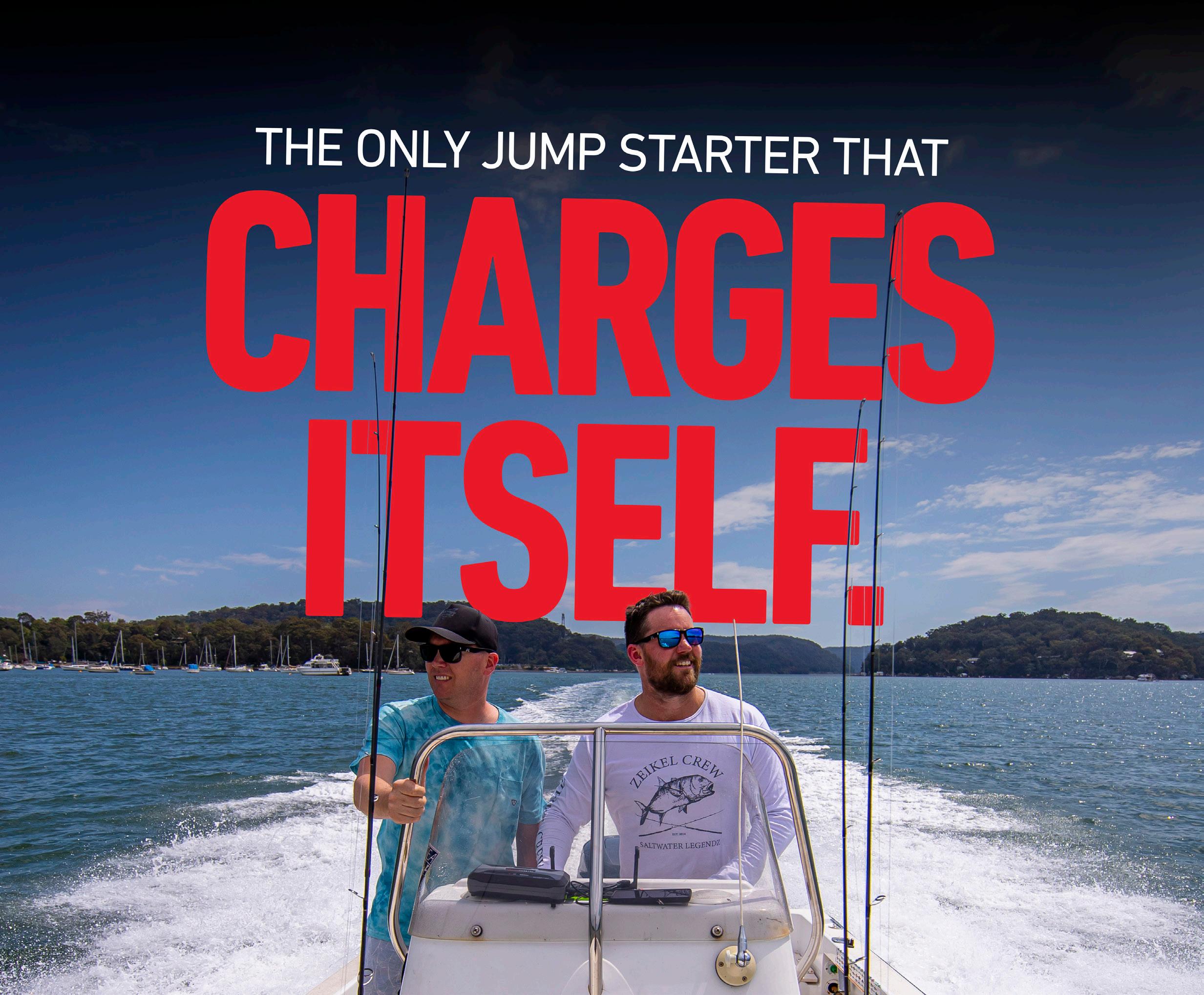
• Starts 8.0L Petrol or 6.0L Diesel vehicles
• Suited to 12V or 24V vehicles
• 12V 750A / 24V 500A clamp power & 2000 peak amps


Aftertwo years of R&D, Rig Recycle is mixing up the recreational fishing industry by providing the first specific recycling program for recreational fishers in Australia.
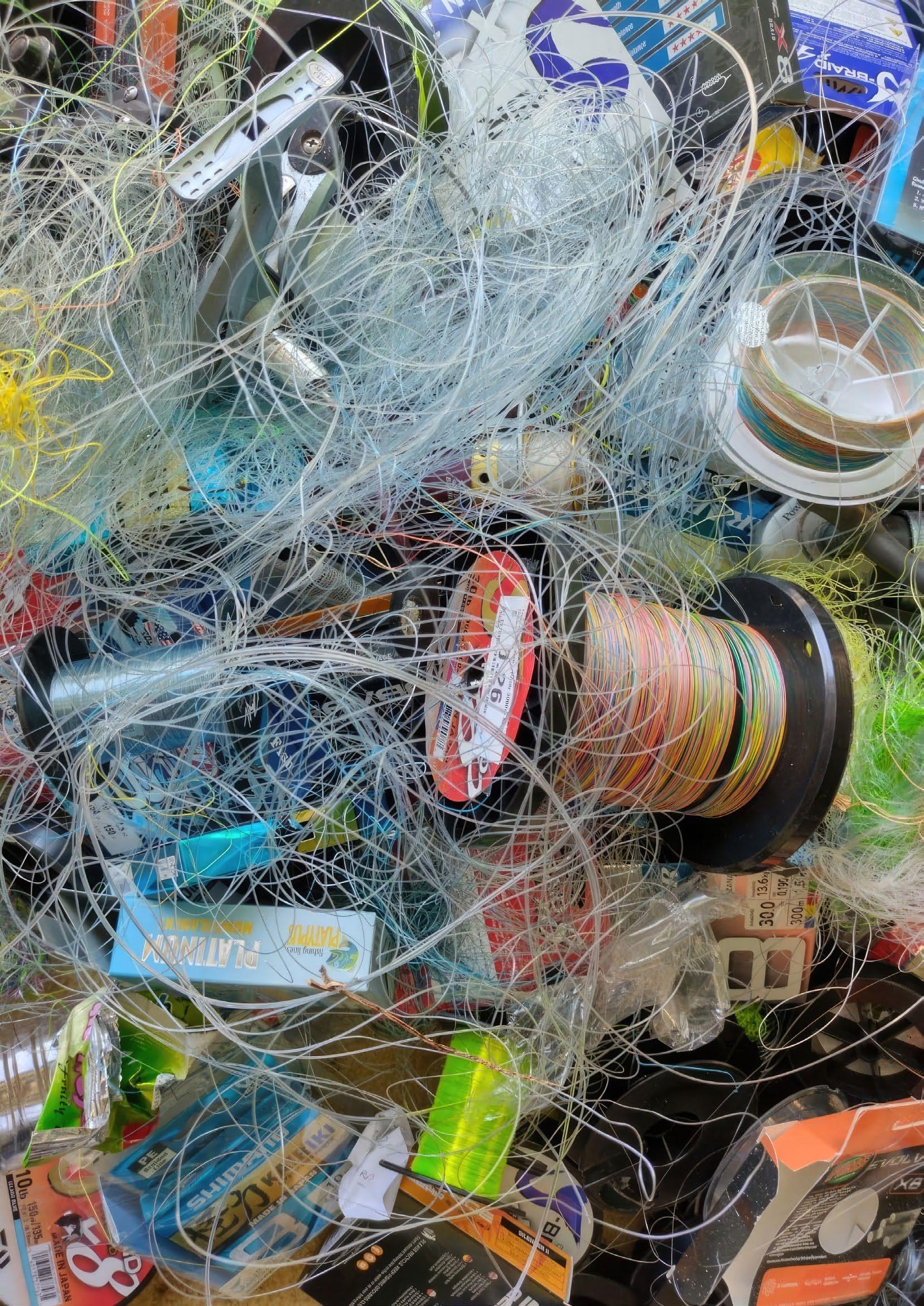
The Australian Marine Debris Initiative (AMDI) is a network of more than 3500 partner organisations who collaborate on saltwater and freshwater clean-up and monitoring activities and feed data on what they find into the AMDI Database. To date, more than 23 million items have been removed and documented from over 4500 sites across Australia. The top 10 items highlight what solutions are needed to have the biggest impact in reducing plastics in our oceans.
Coming in at number one is hard plastic remnants – those items that are less than 50 per cent intact and are in the process of degrading into smaller pieces until they become micro- and nano-plastics, but never fully biodegrading. This category showcases the plastic legacy that waste that has escaped into our environment will have, forever accumulating and impacting our wildlife, ecosystems, food sources and health.
Hard plastic remnants, cigarette butts, plastic lids and bottlecaps, foam insulation and packaging, plastic film remnants, plastic food packaging, plastic drink bottles, fishing line, broken glass pieces and plastic single-use consumer items like straws, cups, plates, cutlery and lollipop sticks, round out the top ten.

With fishing line listed at number eight of recovered items during cleanups nationally, Tangaroa Blue was keen to work with the recreational fishing industry to find ways of reducing the 125m average of fishing line recovered at every clean-up event, and Rig Recycle was developed.


The initial Rig Recycle trial was supported at retail stores and local councils along the Great Barrier Reef as part of the ReefClean program and provided detailed data on the types of plastic and volumes that could be collected by the sector.
Rig Recycle’s first goal is to repair and reuse items – things like handline reels, hard plastic lures, hooks, sinkers, swivels are all checked to see if they can be repaired. If so, they are included in recreational fishing kits for social fishing charities, giving them another life.

Then, with our partners in the plastics industry, the polymer type of each item that can’t be repaired and reused is analysed with the use of a BASF trinamiX spectrometer – a hand-held device developed to identify plastic types to enable recycling pathways to be mapped.

Currently, items that are accepted in the Rig Recycle bins are listed below – they all need to be clean, dry and not smelly!
• Fishing line spools and hard plastic spool packaging
• Mono fishing line

• Braid fishing line
• Hooks, swivels, sinkers
• Hard plastic-bodied lures
Additional items will be added as recycling pathways can be identified, but it is critical that we only collect items that we are able to repair, reuse or recycle, as this is a recycling program and not just a collection program.
The next question is, what do we do with the material that is recycled? This is where Rig Recycle connects with our ReefClean events in Cape York and other remote locations.
Tangaroa Blue coordinates and collaborates on multi-day clean-up events in remote locations around Australia where the marine debris loads are just mind-boggling. Up to three tonnes of rubbish per kilometre is regularly collected, with the possibility of loads up to three times as high after significant weather events, like cyclones.
We just got back from our first Cape York clean-up for the year and removed 10.8 tonnes from 2.8km of beach - this location had never been cleaned before and we had to transport volunteers and the rubbish by helicopter!
More than 95 per cent of the marine debris removed during these remote events is from offshore sources, including international and domestic commercial fishing, cargo ships and ocean currents – and more than 90 per cent are things made of plastics.
Tangaroa Blue conducts a marine debris helicopter survey along Cape York’s east coast every year – the heaviest densities of marine debris total over 1 tonne per kilometre

It is a massive challenge to recruit enough volunteers, funding and logistics to support our indigenous community partners in this removal effort, but it’s an even bigger challenge to figure out what to do with it once it’s collected from the beach!
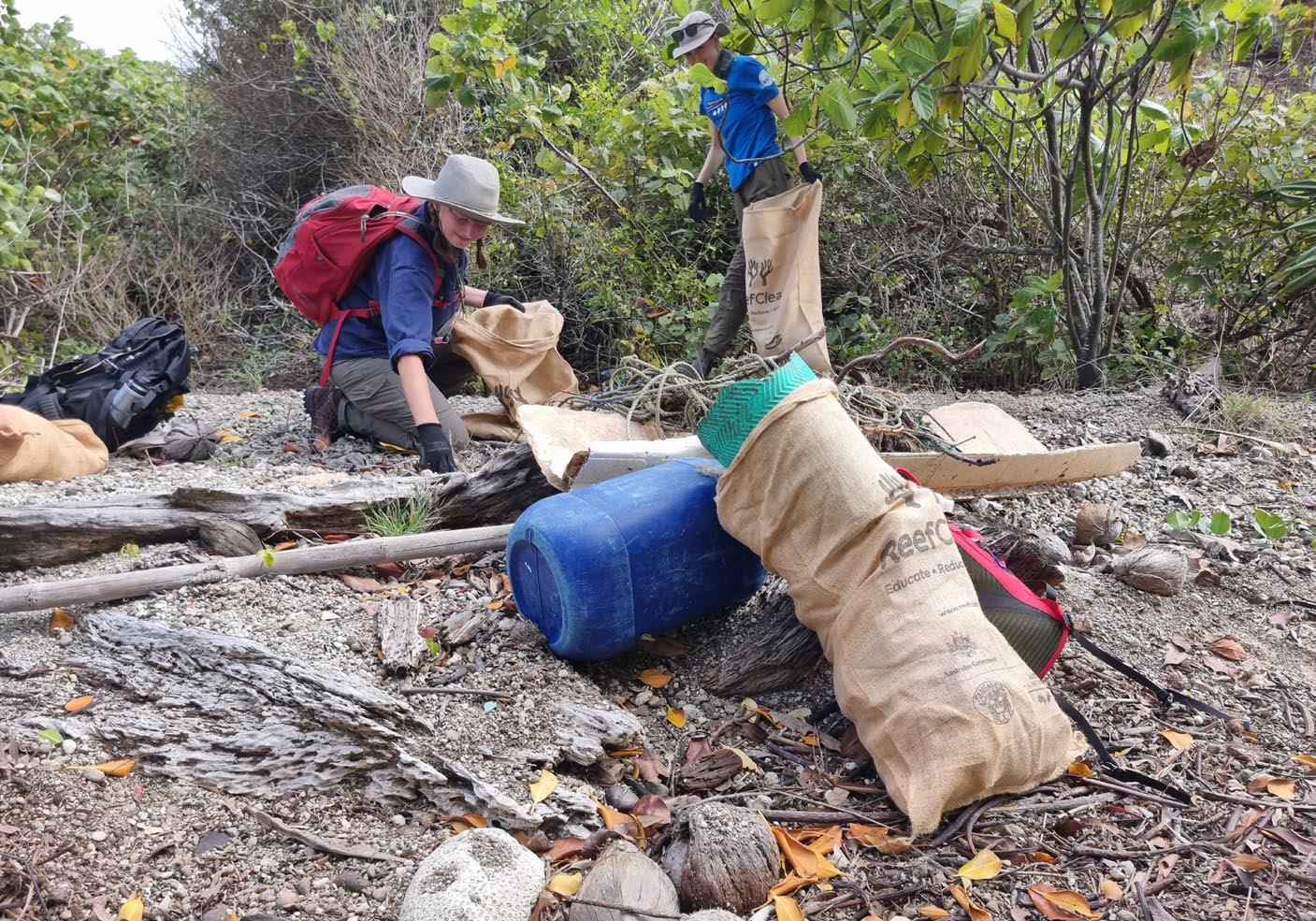
The problem with the plastics removed during these events is that the polymers are often extremely degraded from the time spent in the ocean and under high UV conditions, so they aren’t suitable to just go into the normal yellow bin recycling processes. They can also pick up toxins and chemicals while floating around in the ocean, acting as a sponge if they float through oil spills or other chemicals, also adding to the complexity of trying to recycle them. That means that they normally end up in the local landfill, which, in remote communities means they are burnt or buried when full, improving the health of one area, but creating a negative outcome for another area.
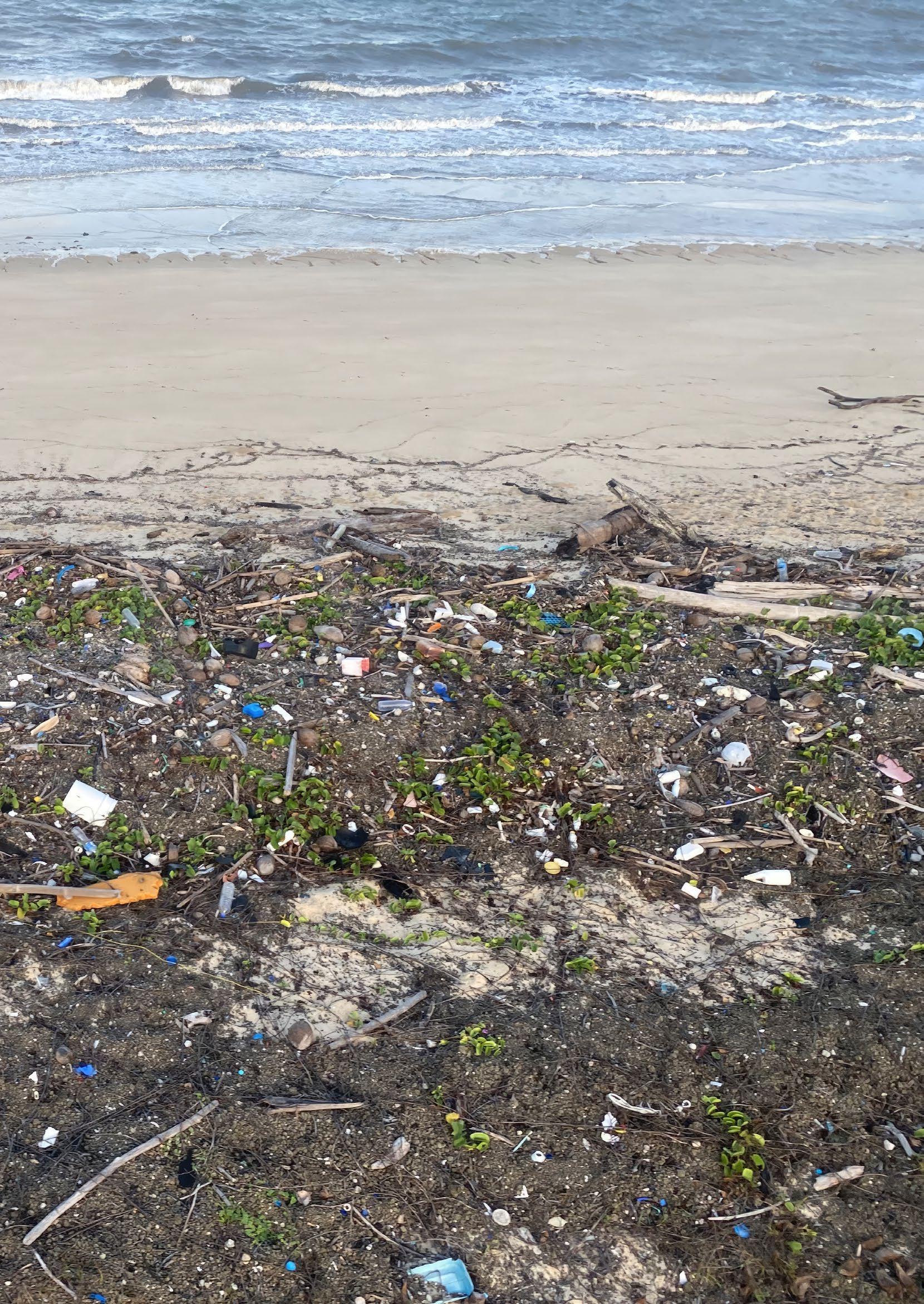
However, if you can identify the polymer type of the marine plastics and collect enough of it, you can use it in a blend with a clean and “new” recycled material to create a plastic feedstock to manufacture into a new product.
The recreational fishing industry was a sector that would help allow us to recover the volumes of clean recycled material needed to create these blends, ultimately creating a circular framework for products that, at the end of life, can go straight back into a Rig Recycle bin themselves.
This provides a circular recreational fishing program with measurable, sustainable outcomes for the consumer, retailer and the brand producers.

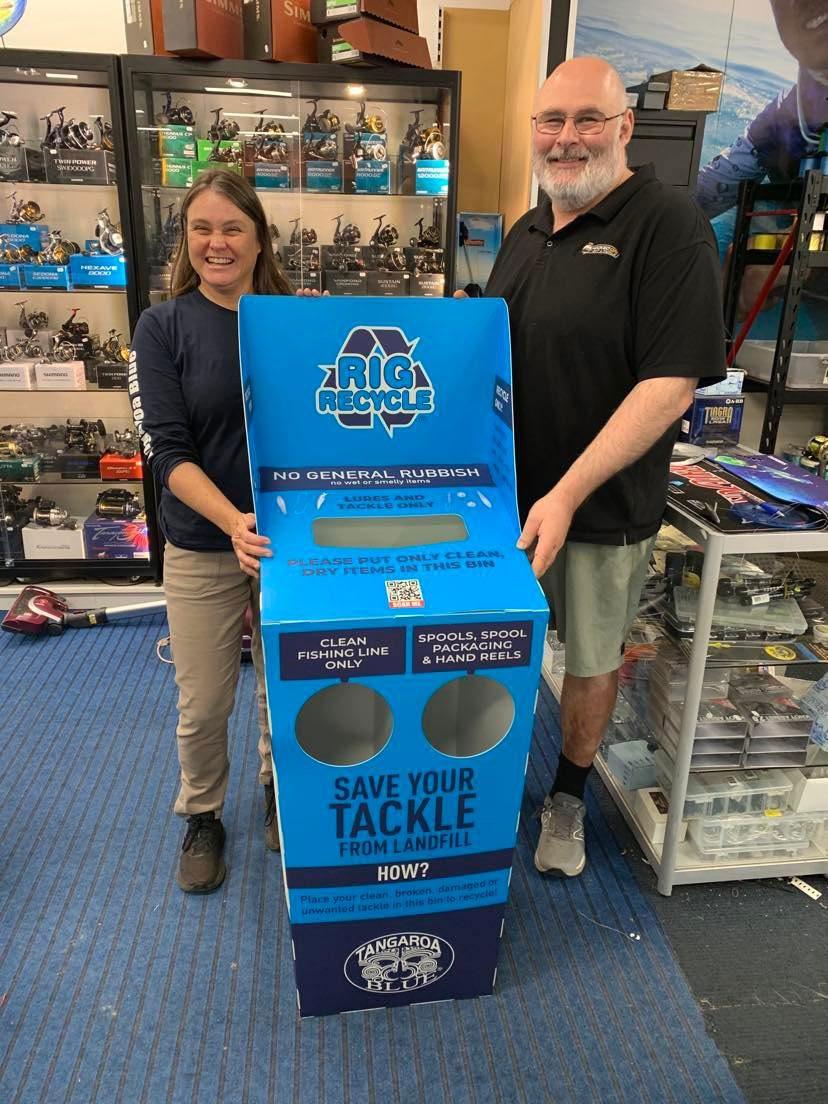
In addition, we are able to showcase best-practice in the recycling process by ensuring all of our industry partners are signatories to Operation Clean Sweep – a plastics industry program that works with industry to reduce the loss of plastic feedstock during transport, manufacturing and processing.
It has been a massive learning curve and a true collaboration of a lot of partners!

Assembling the Rig Recycle bins at Megara who produces the bins out of recycled plastics in Australia.
ReefClean enabled us to purchase our first processing unit for Queensland, and we have partnered with BC Plastics in Brisbane for their technical experience and amazing R&D team who are supporting the piloting of products to be made out of the recycled feedstock.

We also received funding through Sustainability Victoria’s Circular Economy Communities Fund to set up a recycling line in Melbourne and 60 Rig Recycle bins for Victoria, and the NSW Recreational Fishing Trust has supported the production of 40 Rig Recycle bins which have been distributed across the state.

The Rig Recycle bins themselves are made of recycled material, produced by Megara, another Operation Clean Sweep partner based in Melbourne.
Conference delegates checking out the Rig Recycle bin at AFTA.

This freshwater turtle was found tangled up in a discarded rig.
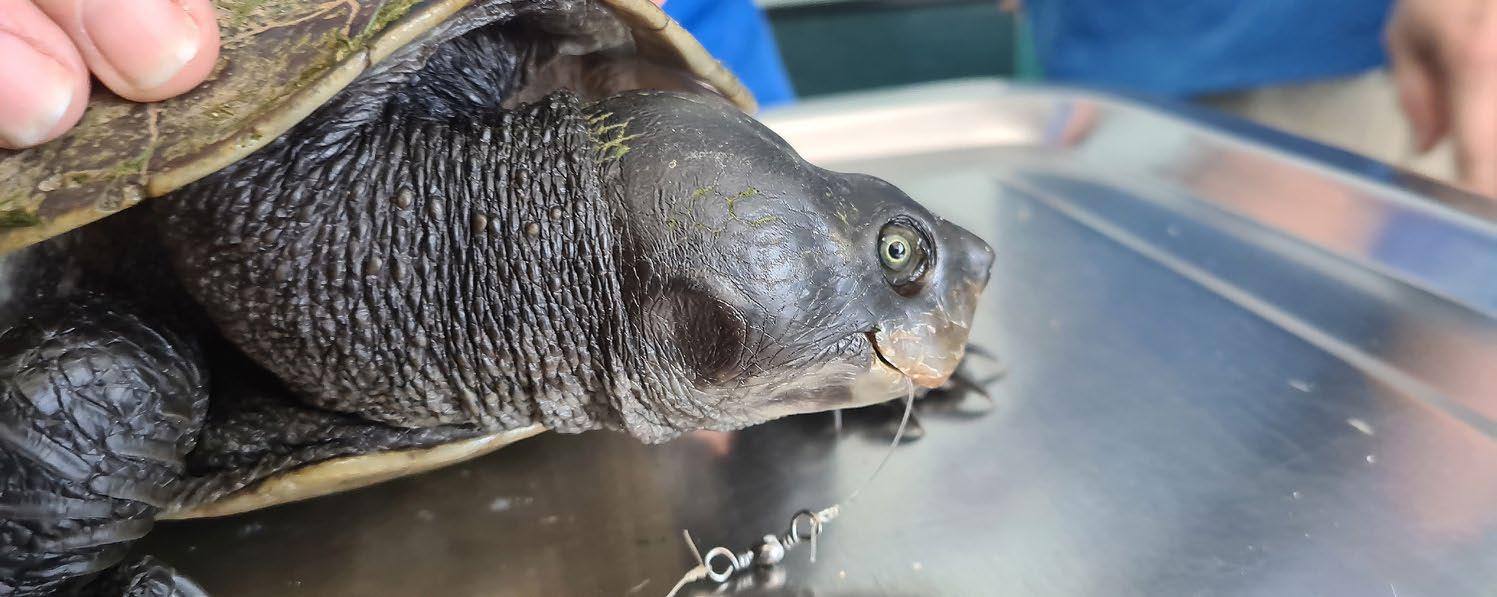
The Tangaroa Blue Foundation introducing the Rig Recycle at the 2022 AFTA Trade Show.

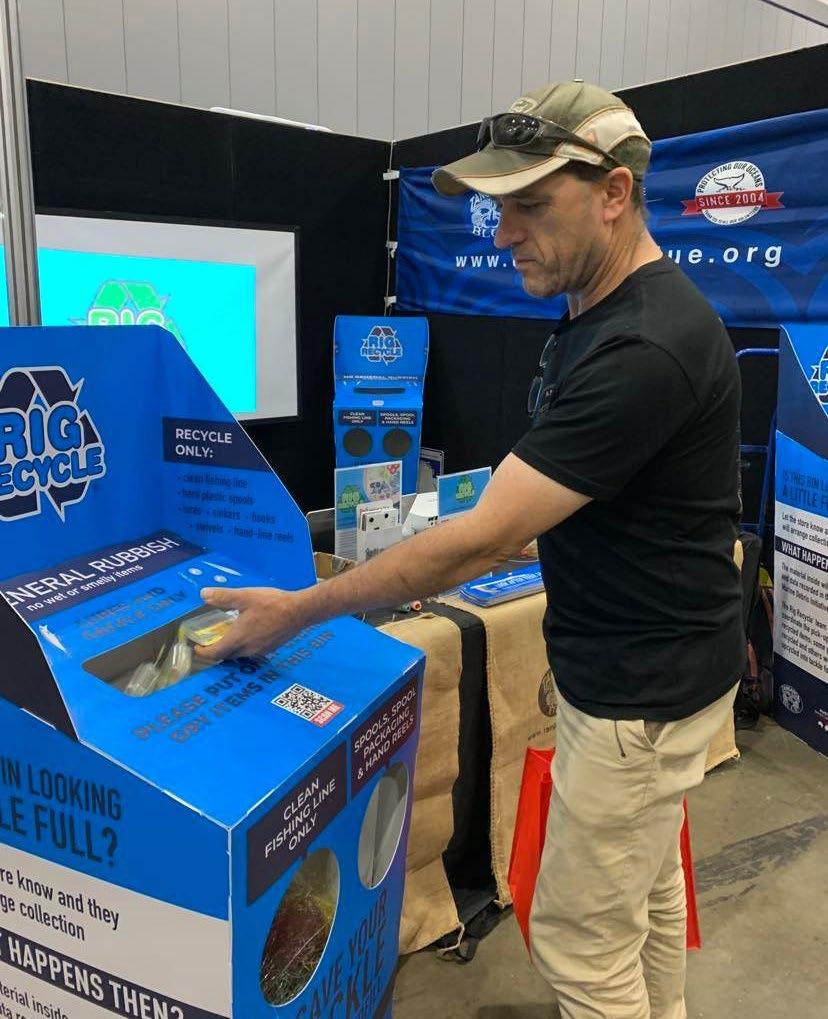
Rig Recycle was showcased at the 2022 Australian Fishing Trade Association (AFTA) Trade Show on the Gold Coast, where the support from retailers to host a bin was amazing! From Tackle World in Cooktown Far North QLD down to Trelly’s in Geelong and many places both coastal and inland in between, we have been thankful to the recreational fishing industry for getting behind this Australian first program, and we look forward to continuing to expand Rig Recycle nationally in the coming year.
To see if a Rig Recycle bin is in your local area, download the Recycle Mate app.
To find out more about hosting a Rig Recycle Bin, fill out our EOI form.
Visit us at the Rig Recycle stand at this year’s AFTA Trade Show.




AUSTRALIAN FLY FISHING TEAM MEMBER, MARIAN MILLER CONTINUES HER BEGINNERS’ GUIDE TO FLY TYING.

In the last issue I gave a brief outline of some of the materials used by fly tyers. My advice was try not to be overwhelmed by the range of materials available and start small. Most fly tyers will admit that they started by buying materials they didn’t use for many months or years. Some things have sat in a drawer, box or cupboard, unused and, in many cases, forgotten.
There are many starter kits available providing basic items, sometimes with an accompanying book of the recommended flies to tie with the required materials. These can provide a good starting point, but the down side may be that the patterns illustrated may not be suitable for your area, the fish you are targeting or the season.
A great thing about many of these starter kits is that the techniques and advice they illustrate will provide a great reference to return to, again and again. Use sticky tags on the pages to help return to a particular item quickly and easily without the need to look up indexes. This saves time and frustration looking through pages or wading through hours of videos on the internet. Find a system that works for you, but be adaptive.
Many clubs, associations and fly-tying shops run fly tying nights, either in person or on-line or both; take advantage of these. They’re a great way of learning new skills and techniques and brushing up on old ones.
The following outlines the main parts of flies.

The starting point of any fly is the hook it is tied on. While most recipes for flies will quote a type and size of hook, some will quote exact details down to the actual manufacturer. Traditionalists may insist that only the particular hook quoted can be used; bear in mind that some older recipes may be describing hooks that are no longer manufactured. Believe me, it is easy to spend time and money searching out particular hooks to match a recipe, only to find they were almost exactly like those I already had.
Generally, the hook type, be it wet, dry, streamer or any of the other types and size, is the important aspect. As your experience increases, you will develop a range of hooks that you use. Many fly tyers prefer certain designs and brands of hooks for particular patterns. Over the years I have developed a preference for a particular jig hook for nymphs, however when I tie some nymphs with a bit more body or hackle, I use a different brand, as it has a slightly larger gap, which gives more room for the extra dressing.
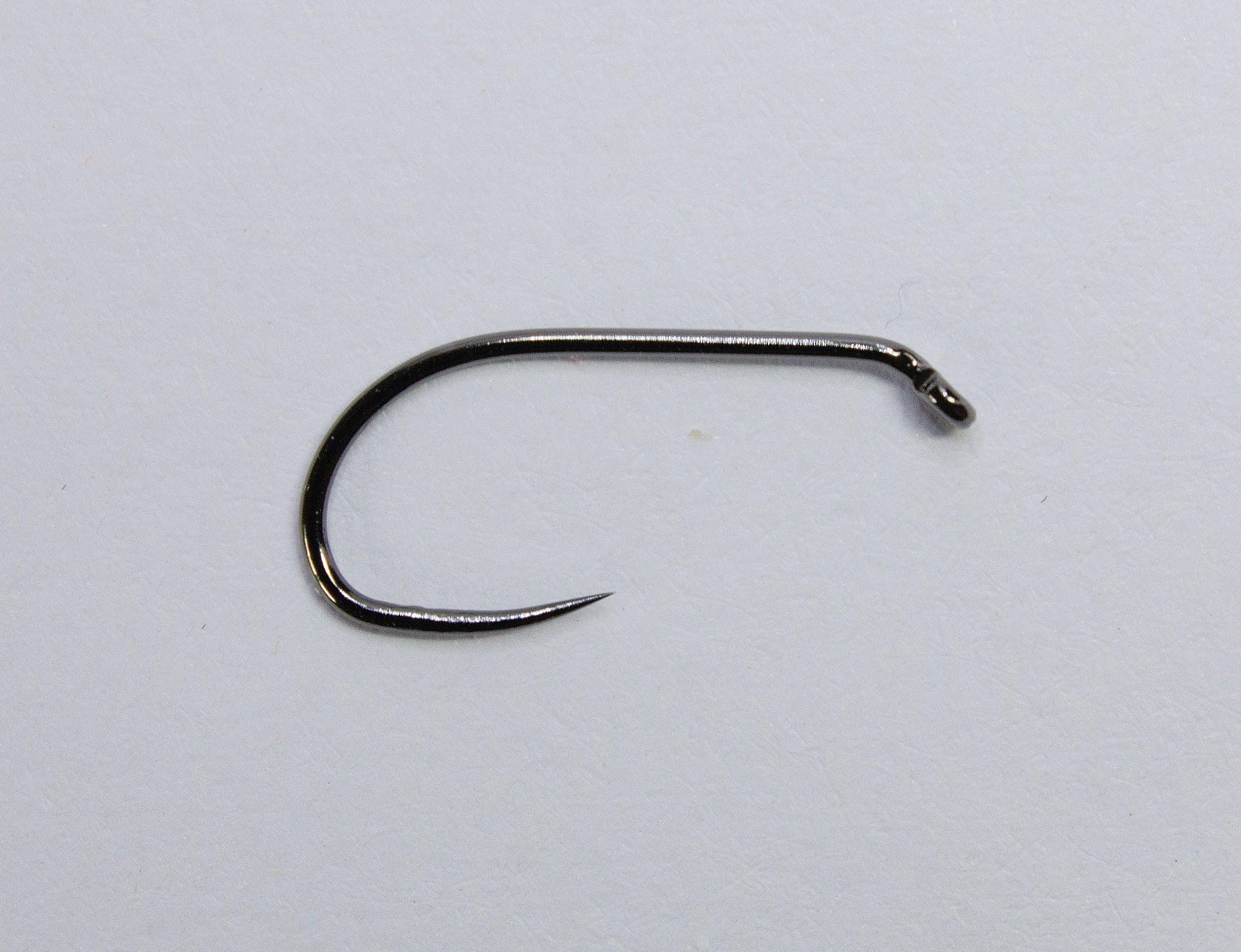
As the name suggests, this is the part of the fly extending beyond the rear of the hook. Tails can consist of just a few fibres from a feather or a bunch of material such as marabou, and everything in between. Some flies have no tail or maybe even just a small tag as a hot spot.

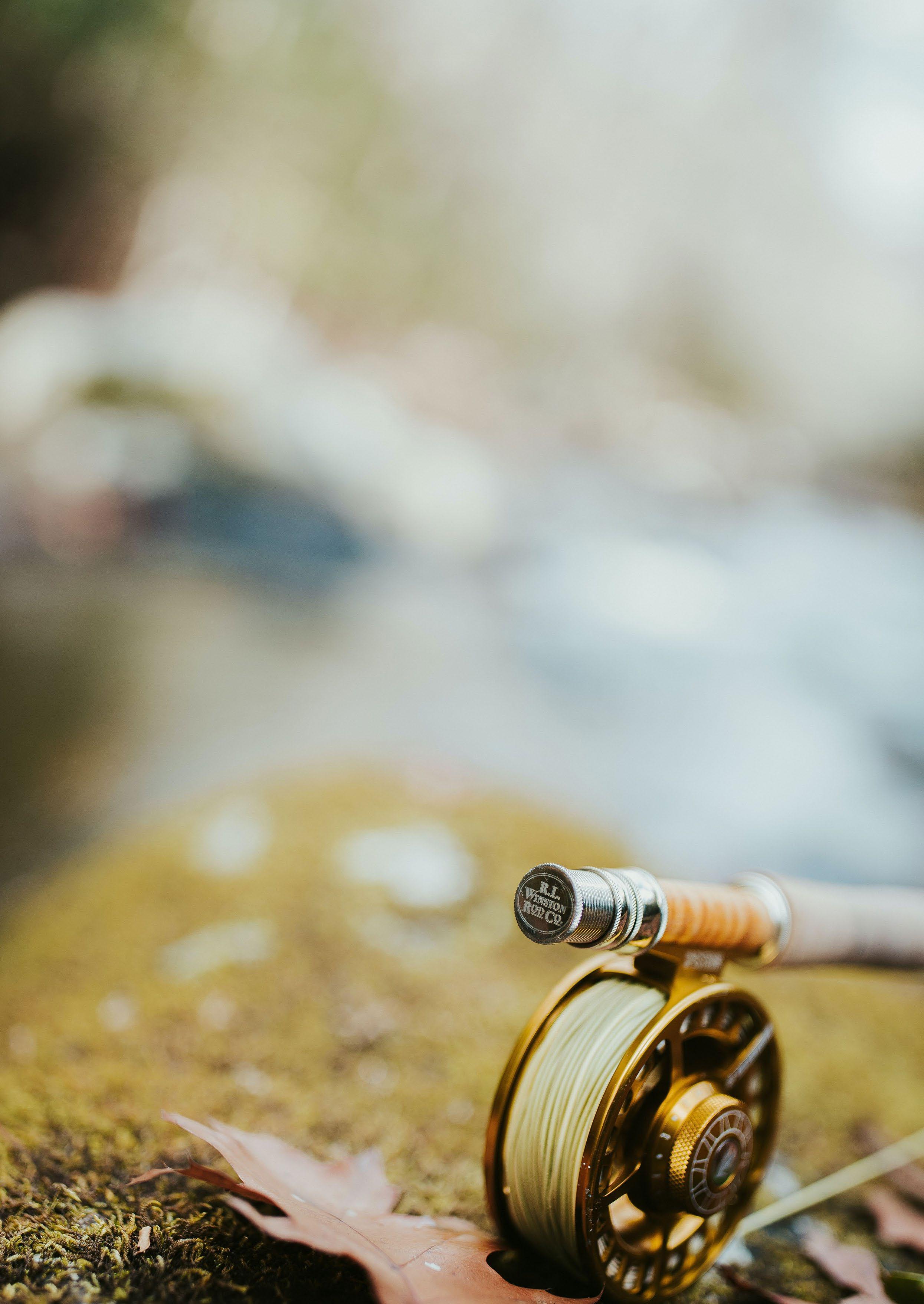
It’s important to attach the tail securely and on top of the hook. You can offer the fibres to the part of the hook nearest to you and use the thread to move the fibres to the top of the hook as you wrap the thread around. Another way is to put the fibres on top of the hook and use a pinch wrap to secure it in place.
A pinch wrap is a useful technique for securing lots of different materials. Hold the materials on top of the hook between thumb and index finger. Wind thread between thumb and hook and then over the materials wind thread between finger and hook. At this point don’t put any tension on the thread. Now wind thread between thumb and hook again and pull the thread upwards. Before letting go of the materials, add a further turn of thread over the top and between the hook and finger. Then hook pull the thread tight upwards. For most tail materials these two turns should be sufficient.
At this point, turns of thread may be added behind the hook and under the tail material. These turns are used for a variety of reasons, depending on the tail materials being used. Adding a single turn under the tail of a mayfly nymph will separate the fibres and make the tail sit at a slight upward angle. Adding turns to a marabou tail will help keep the material together and prevent it wrapping around the hook when the fly is being retrieved.
Diawl bach ribbed using tinsel.
The body and thorax of the fly run along the shank of the hook; the size and shape varies with the pattern being tied. One or more materials can be used, including but not limited to the tying thread, feather fibres, quills, tinsel, wire, herl, biots, dubbing of artificial materials or fur of all types. The list seems endless. The main adage to remember is ‘less is more’. Don’t use too much. The body of most flies are slim; often the flies that look fatter are actually tied with looser materials teased out to give a ‘buggy’ look.

Applying the different body materials involves different tying techniques. The most important thing is to ensure that the thread wound on the hook is applied evenly. Sometimes the shape of the fly is built in this initial thread application.
Herl can be used as single or multiple pieces to build a suitable body and/or thorax. Line up the pieces and trim the thin tips, as this is the most delicate part and aligns the tips quickly and easily. This delicate material can be reinforced by winding the tying thread around the herl. Don’t overdo the turns, as this can add to breakages.
With tips aligned, the herl is tied in by the trimmed tips and wound around the hook. Keep turns touching, but not overlapping. Be aware that as you wind the herl around the hook, you will introduce winds to the herl; be careful of excessive twisting of herl, as it can break very easily. Tie off securely; I use two turns of thread over the herl, then, pulling herl back towards the bend of the hook, add two turns in front of the herl. Pull the herl towards the eye of the hook and add two further turns over the herl. The excess can usually be broken off. If you don’t feel that brave, cut close with shape scissors. Make sure you stay clear of the tying thread!
Tied in by the thin tip, quills produce a segmented body. Ensure the turns are touching, but not overlapping. Whether natural or artificial, quills are fragile. Beware of pulling or twisting when winding onto the hook. Use of hackle pliers can be of great assistance to keep even tension and prevent twisting. Secure the end with two or three turns of thread. Trim with sharp scissors and cover the remaining end with further turns of thread. Applying UV resin or varnish over the entire quill body will enhance the appearance and provide protection to extend the life of the fly.
When using tinsel to make a fly body, the smooth foundation of the fly formed by the tying thread is essential. To further assist with obtaining a smooth finish, tie the tinsel in at the front of the hook, nearest to the eye, winding it towards the tail of the fly and then forward again. Keep an even tension and don’t twist while winding.

The use of wire to create fly bodies, such as copper John, provides a segmented body, along with the added weight, in one step. When tying the wire in, lay the wire the full length of the body to help maintain a smooth shape. Secure the full length of wire along the side of the hook from front to tail. Take tying thread back to front of the hook. Wind wire in even turns; avoid twisting to maintain a smooth finish and avoid breaking. Secure the end with two turns of thread on top of the wire, two turns in front of the wire, then two turns on top of the wire again.
The best way to remove excess is to break off using a twisting motion, usually referred to as ‘helicoptering off’. To help with this, wind the tying thread up on the bobbin until the tip of the bobbin is touching the fly. This keeps tension on the thread, holding the wire in place and stops the fly moving while the wire is twisted around. The thicker the wire, the more twisting required. If you choose to cut the wire with scissors, don’t use your best pair, as they will quickly become your worst pair!
A selection of wires to vary colour and size.
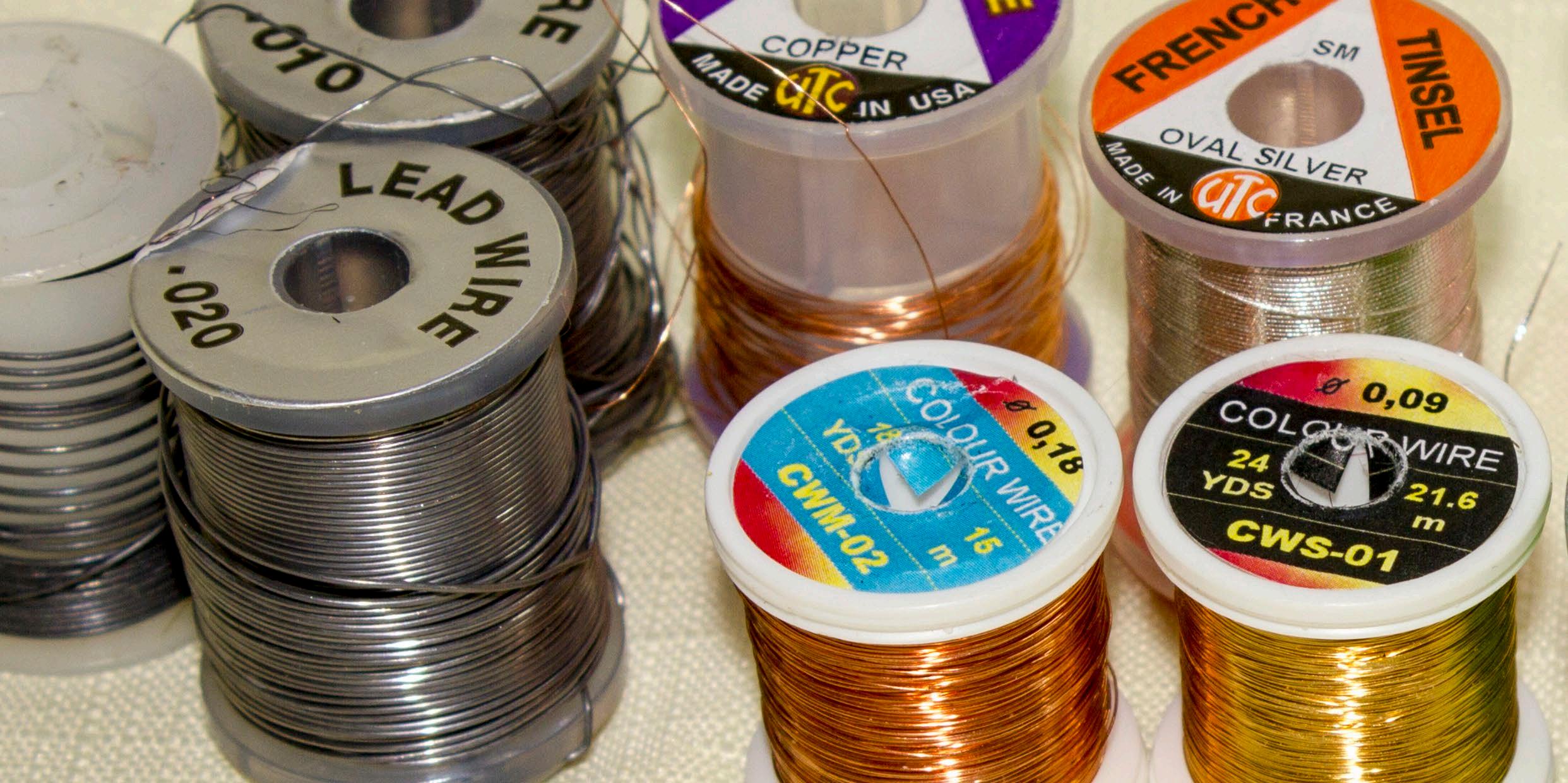
When building a fly body and/or thorax with dubbing, the first thing to remember “less is more”. I can’t emphasise this too much. Use small amounts of dubbing, as you can always add a little more, but it’s just about impossible to remove if you have too much.
There are various ways of applying dubbing, I will outline the main two.
The first is to apply the dubbing to the tying thread. Have 4-5cm of tying thread out of the bobbin. Apply a small amount of dubbing wax if required. Tease the dubbing out and offer a small amount up to the thread. Starting at the top of the thread nearest to the hook, twist the dubbing between the thumb and index finger. As the dubbing winds around the thread, move down the thread to create a dubbing noodle. How tightly the dubbing is wound onto the thread depends on the type of fly being tied. Some flies require a tight noodle, while others require looser application.
The dubbing should start thin so it is hardly more than thread, and as it progresses down the thread it gets slightly thicker. Beware of putting too much dubbing on the thread and don’t make the noodle too long or it will be difficult to wind around the hook. Keep the thread tight by maintaining a little pressure on the bobbin while you’re applying the dubbing. If there is a gap between the dubbing and the hook, this can be taken up by a few turns of thread on the hook. If the gap is too large, the dubbing can be coaxed up the thread by gently pushing with your fingernail. Use turns of the noodle to build the required body or thorax.

Natural or synthetic fur is excellent dubbing material.
Using a dubbing loop to apply dubbing is another way of building the body or thorax of the fly. The loop is made by doubling the thread over your finger and back over the hook. Don’t make the loop too large; 4-5cm is usually enough. The loop is locked off by passing the thread over the loop next to the hook. You will need two turns over the loop, then a further turn around the hook. Place a loop-twisting tool in the bottom of the loop and you’re ready to put dubbing into the loop.
A standard dubbing tool helps with the application of loops and twists.
At this point you can add dubbing wax. Small amounts of dubbing are teased out and added to the loop. Keep the amounts small and spread out evenly throughout the length of the loop. Again, start with very little at the top of the loop and add slightly more as you progress down the loop. When you have sufficient dubbing in the loop, use the twister to spin the loop to capture the dubbing and form a dubbing brush or noodle. The more twists, the tighter the dubbing will be, so be careful not to over tighten, as not only will the dubbing be too tight, but you could make a loop that twists back on itself or the thread could break. The loop is wound around the hook to form the body or thorax of the fly.
After the dubbing is wound onto the hook, tie off the noddle or loop. I use the ‘two over, two in front and two over’ technique to secure the thread, and trim excess with sharp scissors, again avoiding the tying thread. After applying dubbing, the material can be teased out using a dubbing needle, Velcro or dubbing brush. Teasing the dubbing out enhances the appearance of most flies, giving that ‘buggy’ look.
Ribs are tied in before the body is wound and then used to add extra security to the materials, as well as segmentation and extra sparkle or colour to the fly. The rib is wound over the body in the opposite direction to the body, winding the body material over the top of the hook away from you. The rib is wound over the top of the hook towards you. Secure the rib as described above under the section covering wire.

Hackles are used in a number of different ways. The three main ones I will cover here are collar, palmered and parachute.
The collar hackle is tied in at the front of the fly. Ensure enough room is left at the front of the fly so the hackle can be wound on and tied off without crowding the eye.
The hackle tied on a wet fly is usually tied in by the tip. Draw the fibres back from the tip, leaving a few fibres. Trim the tip, leaving a small triangle. With the shiny side of the feather facing you, tie this triangle securely to the hook. The application of wax to the thread will help secure the feather. Attach hackle pliers to the butt end of the feather to help tie the hackle. The fibres of the feather are drawn back towards the rear of the fly as the feather is wound around the hook, each turn progressing towards the eye of the hook. Tie off securely using two turns on top of the hackle, two turns in front, and two turns on top of the feather again. The use of wax on the thread will help the thread grip the feather. Trim excess feather with sharp scissors, but mind that thread! Complete the fly by tidying the cut end of the feather with thread and build a neat head.
A dry fly hackle is tied in by the butt of the feather; remove unwanted fibres from the base of the feather, trim the bare stem, leaving enough to secure with two or three turns of thread. Wax on the thread will help secure the feather. Secure the feather with the shiny side facing you. Using hackle pliers on the tip of the feather, turns are wound onto the hook, one in front of the other, towards the eye of the hook. Secure the hackle as previously mentioned.
Spider patterns using soft hackles.

Palmered hackles run the length of the fly body in open spiral turns. Probably the most popular fly to use a palmered hackle is the ever-reliable woolly bugger. The feather is normally tied in by the butt at the front of the fly. This means that the larger fibres are at the front of the fly and the size reduces as the hackle is wound down towards the bend of the hook. A wire rib is then wound from the bend of the hook over the hackle in open turns to capture and secure the feather along the whole body length. Take care not to trap the hackle fibres with the rib. Working the wire in a zig-zag motion as you wind it will help to avoid the hackle fibres. Secure the wire rib at the front of the fly as above.
Parachute hackle is wound around a post that is tied vertically from the top of the fly, usually around the thorax part of the body. This produces a hackle that is parallel to the fly body. The parachute Adams is a good example of a parachute hackle. The post is tied on the top of the fly and thread is wound up the post to help reinforce it. The stiffer the post, the easier it is to wind the hackle on it. Prepare the feather by removing unwanted fibres from the butt end, then trim the stem, leaving enough to tie in securely. The stem is tied in at the base of the post and secured up the post. Wind thread back to the base of the post. Using hackle pliers, make turns around the post, winding down towards the hook. At the base of the post the feather is secured to the body of the fly. I use the same securing method as with other hackles. Trim excess feather, carefully avoiding the tying thread and the hackle you have just wound.
I use a whip finish tool to finish my flies. Some people whip finish by hand and there are numerous videos available showing this technique. Adding UV resin or varnish completes the fly.
There are more details such as wings, beards and throats, to mention just a few. These will be covered in future articles. Happy tying.

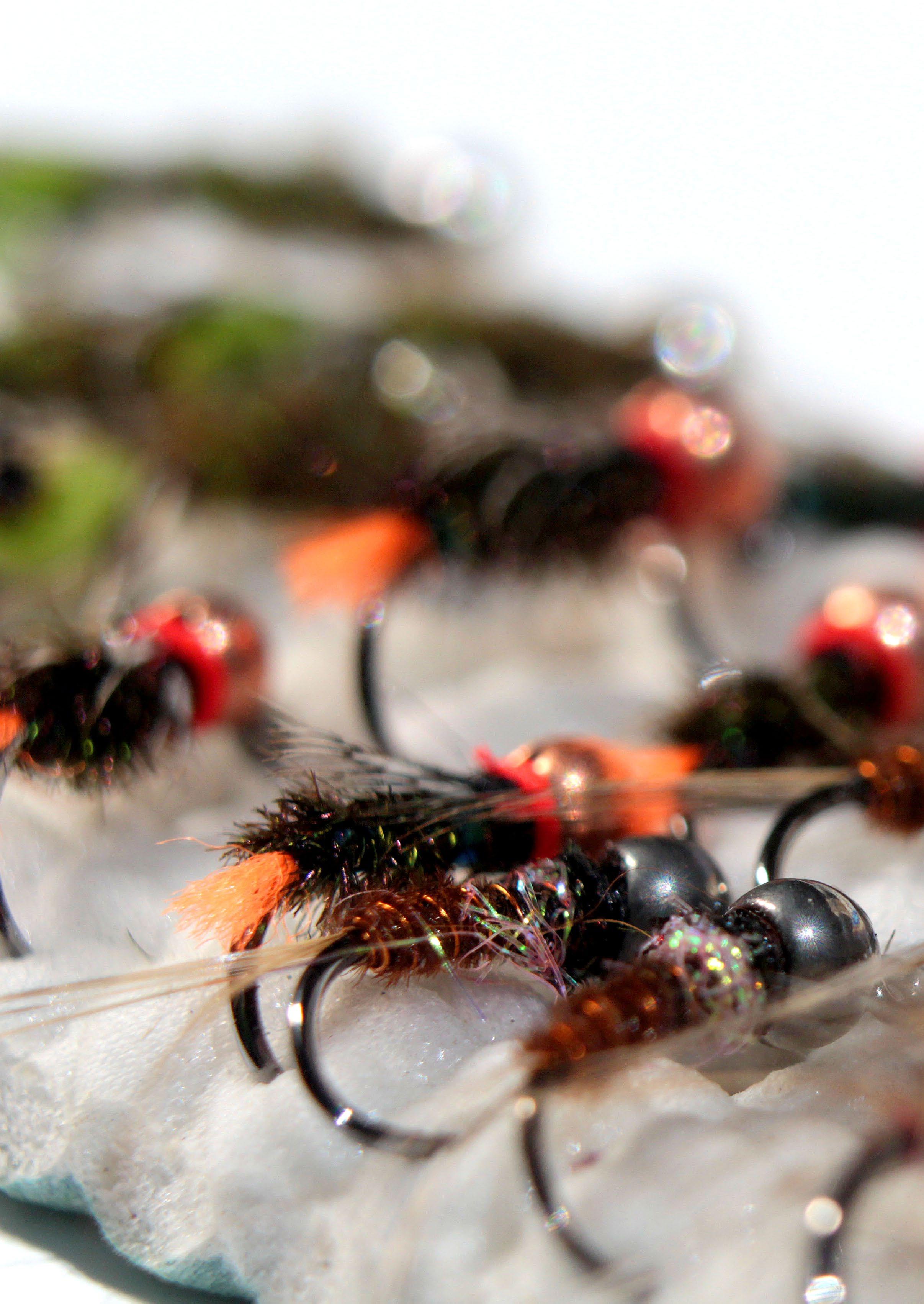





Since the release of Tonic Eyewear’s first Blue Mirror lens in 2014, technology has come a long way. Tonic Eyewear has now developed a new Blue Mirror lens specifically formulated by Tonic founder Doug Phillips for Blue Water use. The new lenses features a grey base combining the colours grey, green and blue to show in sharp relief all of the detail needed for blue water use.
The new Blue Mirror offers extreme scratch resistance and longevity, increased visual acuity, fantastic depth perception and unrivalled polarisation. The new Blue Mirror is perfect for not only cutting glare but picking up current shifts and defining sandbars and gutters along the beach. Blue Mirror is available in OUTBACK and TRAKKER frame styles.
All Tonic Eyewear Mirror lenses share high-tech optics which are laminated between two layers of wafer-thin glass so the Mirror never scratches off, with a Hydrophobic coating making cleaning easier. The new Blue Mirror has a unique grey colour made of three colour filter layers.

The TT Tackle Sling Bag is perfect for anglers that are fishing land based and want to stay mobile. Constructed from quality, water resistant material, the Tackle Sling features a padded back and wide padded strap for comfort, along with a buckle for simple strap adjustment. Swing the bag around to your back and get fishing or swing it around to your front and you have access to everything at your fingertips.
Features include a built-in rod holder to keep your rod off the ground, safe and dry, when rigging and accessing the pack, three D ring attachment points for scissors, tools and accessories and a tool pocket with Velcro closure to secure a pair of pliers.
Storage includes one main compartment designed to hold a medium size TT Waterproof Tackle Tray, drink, snacks, first aid kit, sunscreen, bug spray or other large items. The two smaller front trays each hold a small TT Waterproof Tackle Tray and are also ideal for soft plastics, scent, leader, and other accessories. These storage compartments are finished with quality two-way SBS heavy duty zips.


The DTX 200 Minnow is a revolution in trolling lures, featuring patented Nomad Autotune, Gorilla Through-Wire and Hydrospeed advanced design technology.
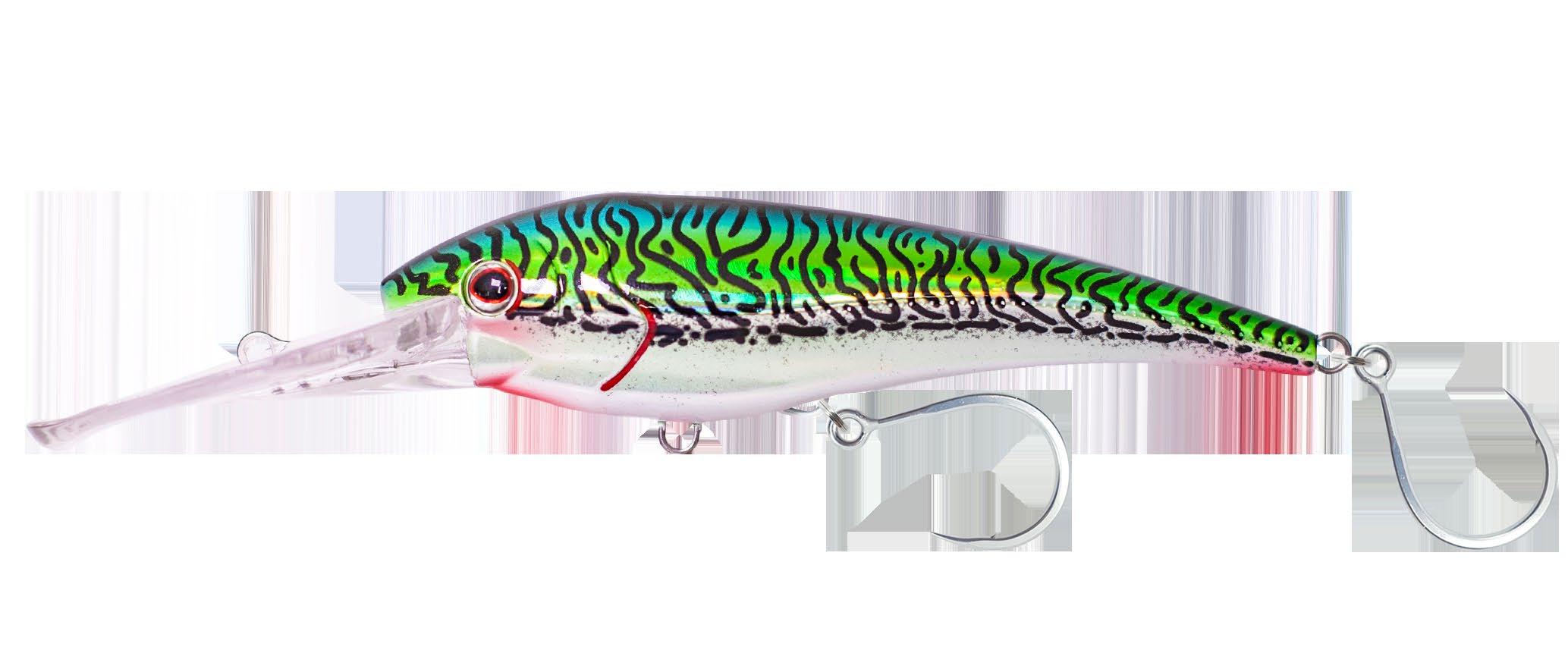

The unique body shape creates a distressed baitfish swimming action, and the concealed Hydrospeed belly eyelet allows faster trolling speeds than conventional tow points. Thanks to the Nomad-designed Autotune tow point and bib system, this lure just keeps swimming deep, straight, and true, first time every time, no matter how many bites it takes.
The DTX 200mm Minnow can be trolled in excess of 12 knots and will reach a depth of over 12m when trolled at 6-8 knots. It’s ideal for the toughest predatory fish like big bluefin tuna, which are currently in good numbers down in the state’s South-East.
Designed and tested in Australia by the Nomad Sportfishing Team, the DTX 200 is not only super tough and durable, but also features unique colours. It’s fitted with extra strong in-line single hooks that can handle 37kg tackle comfortably.

The Okuma Serrano baitcast reel is built to stand out from the crowd with its striking aesthetics and TGT: Traction Grip Technology handle knobs, developed for all day fishing comfort. These handles are attached to a stylish, double paddle, 95mm swept handle arm and a compact body, which is built around a 33.5mm machined aluminium, black anodised spool.
Other features include a 6BB + 1RB precision stainless steel bearing drive system for long, smooth casting and a Quick-Set anti-reverse bearing for solid hook sets. The precision cut, high strength brass main and pinion gears are smooth running and durable.
The Serrano has plenty of stopping power, with multi-disc drag washers for consistent performance and an externally adjustable magnetic cast control system that helps to slow the spool in conditions that call for extra control and finesse.
Long casts, rock solid performance and a price point that allows all anglers to own a quality, compact baitcast reel.

Landbased shore-casting is an addictive game, and Daiwa’s new Seajigger range is the perfect tool for the job. Upgraded and redeveloped for 2023, Seajigger has never cast further, been as sensitive, or looked this good. For the first time, Daiwa has equipped X45X Full Shield technology into Seajigger, further enhancing casting distance, something all Seajigger models of the past have had high praise for.
By incorporating X45X Full Shield for the entire length of the blank, Daiwa engineers can supress the twisting forces of the blank during the casting stroke, then use the stored energy in the blank to propel the lure further than before, rather than losing some of that potential energy through blank twist and distortion.

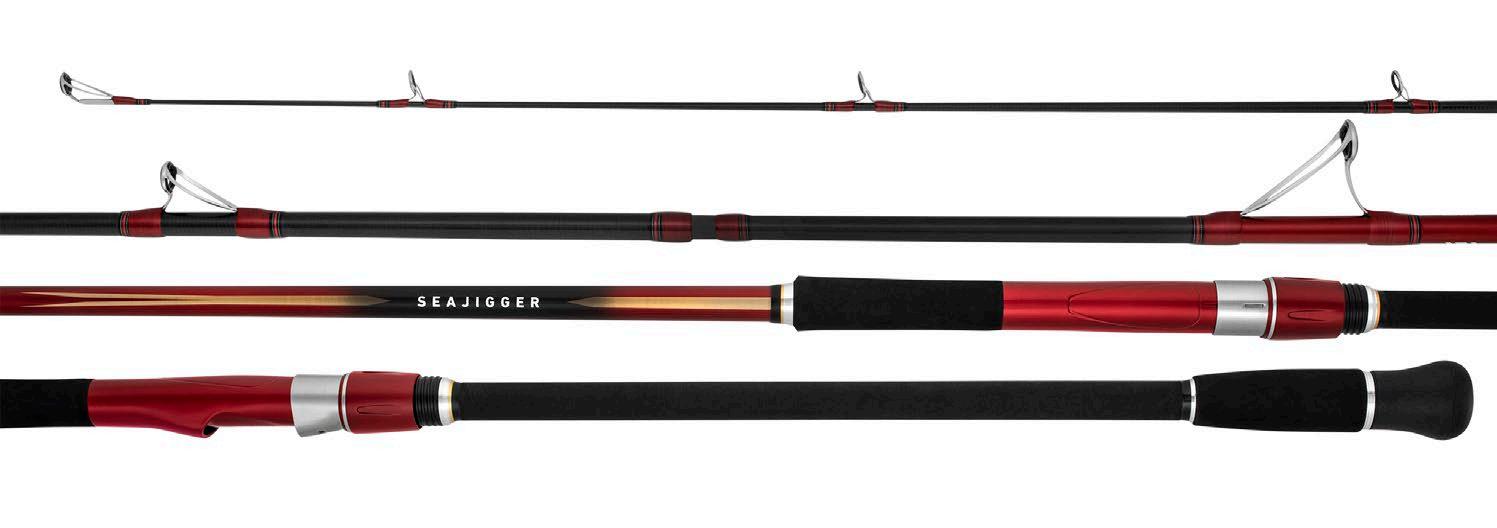
Also new for the 23 Seajigger is the distinctly red reel seat, a newly developed Daiwa exclusive design that is more comfortable than traditional pipe reel seats used on previous models. The Daiwa reel seat is sleek and comfortable and features an integrated foregrip to make long fights comfortable, especially in those times when you really have to lean on the rod to stop a hard running fish.
A trademark of Seajigger rods, Fuji’s low-rider guides with alconite rings are used in combination with newer generation anti-tangle guides on the tip to provide the best combination of casting performance and line management.
If shore-casting is your thing and targeting iconic species such as salmon, tailor and mulloway is your jam, then the new 23 Seajigger is the rod range you want to check out.

A standout reel in the Daiwa saltwater spin range since it was introduced in 2022, the Maverick MQ line-up welcomes two smaller models in 2023 to deliver anglers a multi-option range at a new price point tailor made for Australia’s diverse angling applications.

Available in two sizes (5000 and 6000) the 23 Maverick features the same technologies and features of its big brothers with Monocoque Body, G1 Duralumin Drive Gear, and Mag Sealed Body and Line Roller leading the roll call of trusted and proven Daiwa technologies.
A Metal Alloy Body, Zaion Air Rotor, Air Bail, Longcast ABS Spool, ATD Drag, Infinite Anti-Reverse, Machine Cut Handle, and Metal Alloy Knob combine to further enhance the Maverick’s long list of performance designs and features and along with the 23 Saltiga position the 23 Maverick as one of standout small sized reels in the Daiwa saltwater spin reel range.
If strength, power, and unmatched saltwater performance is what you’re chasing in a small saltwater spin reel then the new 23 Maverick is the reel that’s made for you.
Sensor Surf is a series synonymous with surf anglers throughout Australia. A long-standing part of the Daiwa Australia range, Sensor Surf has been totally re-developed from the ground up for 2023 and now features more tech, features and performance than ever before.
The new series welcomes for the first time Daiwa’s X45X Full Shield blank, with the innovative design enhancing blank function and performance to increase casting distance and minimise blank distortion during the casting phase. The use of the bi-axial 45 degree-oriented carbon fibre creates a blank and rod that is light and crisp and unmatched in casting distance and performance.
Rod components and features are equally performance focused, with a new Daiwa exclusive reel seat design ensures both a secure hold when in use and streamlines the rear of the rod for a slimmer feel and look.
Fuji Alconite guides adorn the rod blank and feature a mix of traditional double-foot guides that have been reversed on the larger stripper guides to improve casting, and anti-tangle frame guides throughout the tip to eliminate tip wraps when fishing in heavy cross winds.
If you’re on the hunt for a premium surf rod with all the bells and whistles, look no further than the 23 Sensor Surf range.


Atomic are thrilled to announce the highly anticipated release of the new Atomic Arrowz fishing rods, revolutionizing rod construction with innovative advancements. This next generation of Atomic Arrowz is equipped with lighter and more responsive blanks, along with a world first, the integration of Fuji’s groundbreaking O-Ring and K-Frame guides. These enhancements combine to deliver an unparalleled fishing experience for types of fishing.
The Atomic Arrowz has long been recognized as an industry leader, and the latest iteration takes its legacy to new heights. Through tireless research and development, our team of engineers and anglers has crafted a fishing rod that surpasses expectations in terms of performance, sensitivity, and durability.


The new blanks featured in the Atomic Arrowz are meticulously engineered to provide a significant reduction in weight without compromising strength
The new Atomic Arrowz fishing rods are available in a variety of lengths and actions to suit any angler’s needs. Whether you are targeting trophy fish or just enjoying a relaxing day on the water, the second generation of Atomic Arrowz fishing rods will deliver an exceptional fishing experience at an affordable price.
Some models will not be released until later this year.



Make your fishing expedition a great experience with our Bluewater Fishing lineup. Colour code and organize your tackle with these trays so you can get to the right tray quickly while you’re on your fishing adventure. Store all your bait in one very convenient place while you enjoy your fishing adventure. The Bluewater Fishing Drift Series Tackle Trays will go great with our Tackle Bags or Sling Packs.
The 3700 series is the largest size in the Bluewater Drift Series Tackle Tray range and is a very handy size to store all your bait in one very convenient place while you enjoy your fishing adventure. The 3700 series has 4 main compartments, that can be divided up to 24 compartments with the clear divider inserts that are included.
Majorcraft, a leading manufacturer of high-quality fishing equipment, is pleased to announce the launch of its latest product – the Jigpara Vertical Long Slow. This jigging lure is designed for anglers seeking to optimize their performance and improve their chances of landing the fish of their dreams.



The Jigpara Vertical Long Slow features a unique design that combines a long slender body with a slow-sinking action. This innovative combination allows anglers to target deep-water species, such as snapper and pearl perch in the south as well as fast moving aggressive pelagics such as kingfish all with the one jig. The lure’s long and slender profile creates a natural swimming motion that imitates the movement of live bait, which is sure to attract even the most cautious fish.
The secret is in the jig’s ability to move fast and fall slow.
Made with the highest quality materials, the Jigpara Vertical Long Slow is built to withstand the rigors of saltwater fishing. Its tough, durable construction 5-layer paint construction ensures that it can handle the demands of even the most aggressive predators. With its realistic action and superior durability, this lure is a must-have for any serious angler looking to up their game.
The jigs are available in lighter weights 100 grams to 150 grams and to heavier weights of 200 grams up to 400 grams.



Samurai, a leading manufacturer of high-quality fishing equipment, proudly announces the release of their highly anticipated Elevate range. This groundbreaking collection is the result of three years of meticulous research and development, aiming to create a rod that seamlessly combines the capabilities of both bait and lure fishing.
Engineered with precision, the machine rolled, and hot press baked blank of the Elevate range features a bi-axial fused wrap at its base. This cutting-edge construction significantly reduces torsion under load, resulting in a remarkably lightweight and responsive rod. The backbone of the rod effectively channels the blank’s full power, enabling anglers to harness the true potential of their fishing gear.
The in-house designed Duragrip handle sits at the business end of the rod, meticulously crafted to provide anglers with a perfect thickness for a supremely comfortable hold. This ergonomic design ensures a superior grip, enabling fishermen to enjoy extended fishing sessions without discomfort. Additionally, the incorporation of Fuji Alconite K Series anti-tangle guides ensures the smoothest running gear possible, enhancing overall performance.
The Samurai Elevate range is now available at authorized retailers and online stores.

Miravel is an all-new concept in the Shimano spinning reel range. It utilises a CI4+ body and side plate for significant weight reductions, while cold-forged Hagane Gear reel technology provides Miravel with unparalleled gear durability.
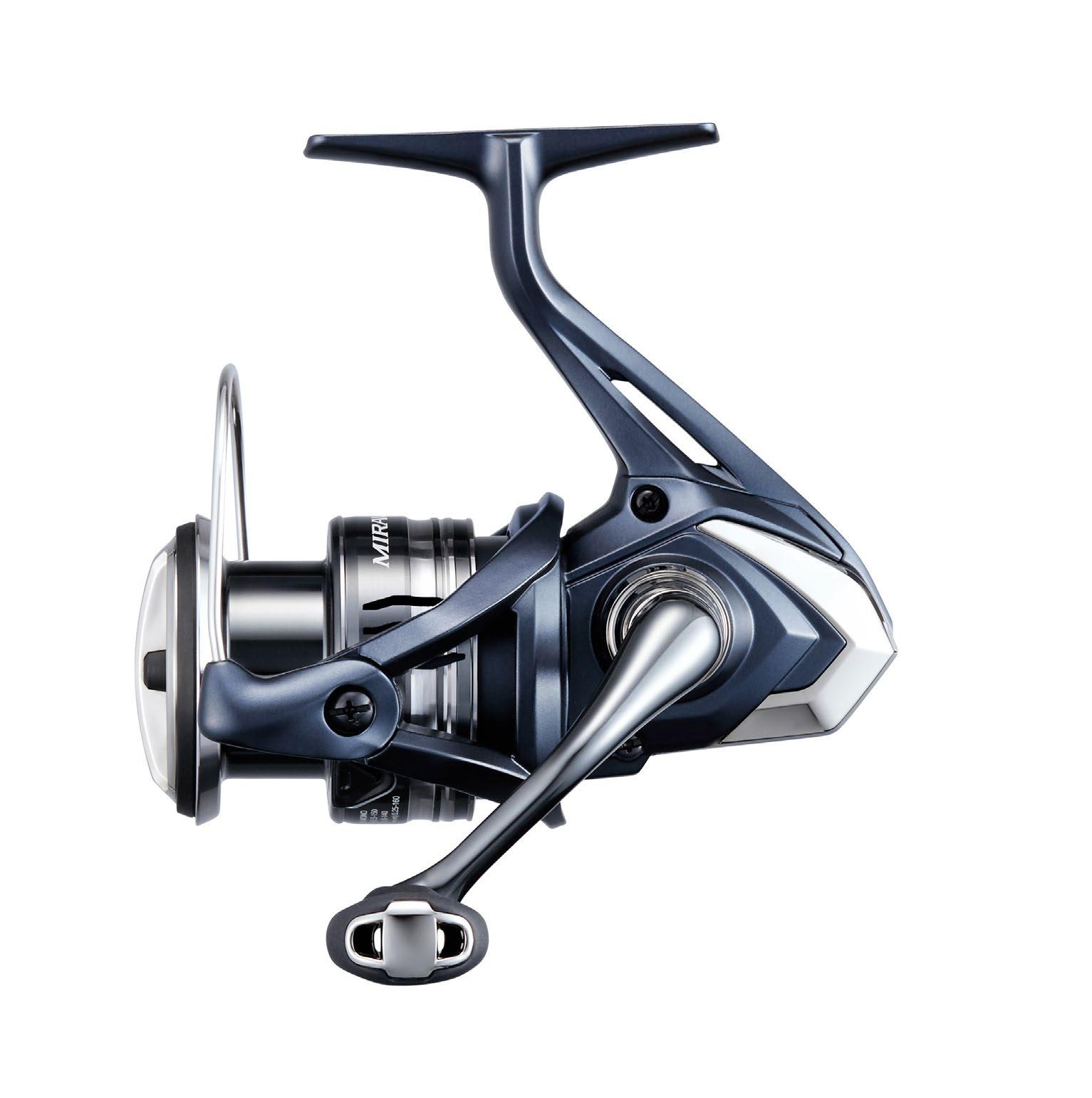
Silent Drive – the same technology found in Shimano’s flagship Stella range – features in Miravel. This technology translates into smoother operation due to finer gear tolerances, less vibration and improved longevity.
Purpose-built for finesse fishing in both freshwater and inshore saltwater environments, Miravel is backed by Shimano’s CoreProtect water repellent technology, which increases durability and water resistance without creating a heavy winding feeling. Additionally, a screw-in handle design has been adopted for added strength and convenience.
a new shallow running model with the release of the 75SR. The first true shallow-diving Double Clutch features the great action you’ve grown to love from the original models but now allows you to hit the shallows that were previously out of reach with the original Double Clutch 75SP.
The 75SR has been designed and developed specifically for Australia, and will dive to a maximum depth of 3ft, making it perfect for attacking the shallows chasing estuarine species such as flathead and bream, or the shallow freshwater chasing iconic species such as bass and trout.

Daiwa’s unique and patented S-GOS system is present, just like the other models in the DC range, and makes the darting action of the 75SR un-matched.

Fish the Double Clutch 75SR anywhere you need a lure working erratically over shallow cover. Sand flats, weed beds, and shallow laydowns are all locations tailor-made for a jerkbait and the new Double Clutch 75SR. The new Double Clutch suspends in freshwater and very slowly floats in saltwater, make it pitch perfect for a twitch and pause retrieve.
Fitted with quality hooks and rings and available in a host of Australian designed and specific colour patterns, the Double Clutch 75SR will be a great addition to the tackle boxes of any keen light-tackle angler.
Embrace the rain and stay protected with the new Daiwa’s Goretex Rainwear collection. Daiwa’s Goretex range of wet weather gear has been purpose designed for the Australian market, with adequate sizing and design for Australian anglers. Goretex fabric is unmatched for foul weather performance, and Daiwa’s Goretex line does not disappoint.
The jacket features YKK AquaGuard zippers, arguably the best quality zipper on the market. The hood has a high-stand collar with laser drilled ventilation which can be worn over the face for cool morning boat rides. The hood also features an air-tunnel opening to make high-speed boat rides no problem, while a 3-way adjustment in the hood allows for perfect closure around the centre panel design for a comfortable fit.

A concealed bottom hem cord stopper can sinch down the bottom of the jacket without loose cords and stoppers to tangle in wayward fishing line, while a double-cuffed sleeves prevent the dreaded water seepage down the arm when fishing with your hands up in heavy rain.

The Goretex bib and brace set gives complete coverage, an important feature if you plan to sit down during rain. A buckle-less strap design with square shaped soft loops increases comfort for long sessions standing in the rain, and a gusseted crotch increases freedom of movement, so you never feel restricted. Zip open pant bottoms enable them to be slipped over boots or shoes easily.
Available in a wide array of sizes from small-3XL. If you’re looking for the ultimate protection from the elements, look no further than Daiwa’s Goretex wet-weather gear. Stay dry and focused with Daiwa Goretex Rainwear.

A new name for electric reel fans, Leobritz opens a new realm of opportunities for anglers Australia wide. A family of smaller size electric reels, Leobritz are small enough to hold comfortably whilst fishing, yet deliver the functions and benefits of tradition larger sized electric reel.



Leobritz reels feature Daiwa’s Britz motor concept, a powerful brushed motor which delivers instant power when engaged. Britz motors are robust and offer high torque, so even with such small electric reels can deliver surprising amounts of winding power and strength.
The Leobritz range features two models, both with programmable jigging functions, and are able to retrieve metal jigs in a series of pre-programmed patterns with the angler’s choice of retrieval speed. This makes the strenuous act of highspeed jigging an attainable dream for many more anglers than ever before.
Available in 300 and 500 sizes in right-hand retrieve, Leobritz can be paired up with any of your favourite Daiwa overhead jigging rods or the specifically designed Tanacom or Seapower for handheld electric fishing.
The new OT (Over There) jig is a casting-specific metal slug that has been developed specifically for Australia, with hooks and colours that are sure to get every serious slugger excited.
Available in weights from 20-60g, OT jig caters to the most popular and sought after sizes. Whether you’re throwing at fussy tuna schools in Hervey Bay or trying to reach those salmon schools off the beach in WA, Daiwa’s OT jig will have a size to suit.





Available in five high-quality colours, the finish on OT jig is outstanding, just what you’d expect of a premium deep-water or slow pitch jig. Perfectly matched to Daiwa’s large range of shore-casting and surf reels, OT jig is a great option for your next shore-casting or slugging adventure.

durability and is custom designed by Daiwa to emphasise torque over all else. Sporting the same redesigned frame as Tanacom, the motor is now positioned inside the spool for optimum performance and power. This enables a more direct drive system with a redesigned planetary gearset featuring much thicker and stronger gears to deliver all that power efficiently to the spool.
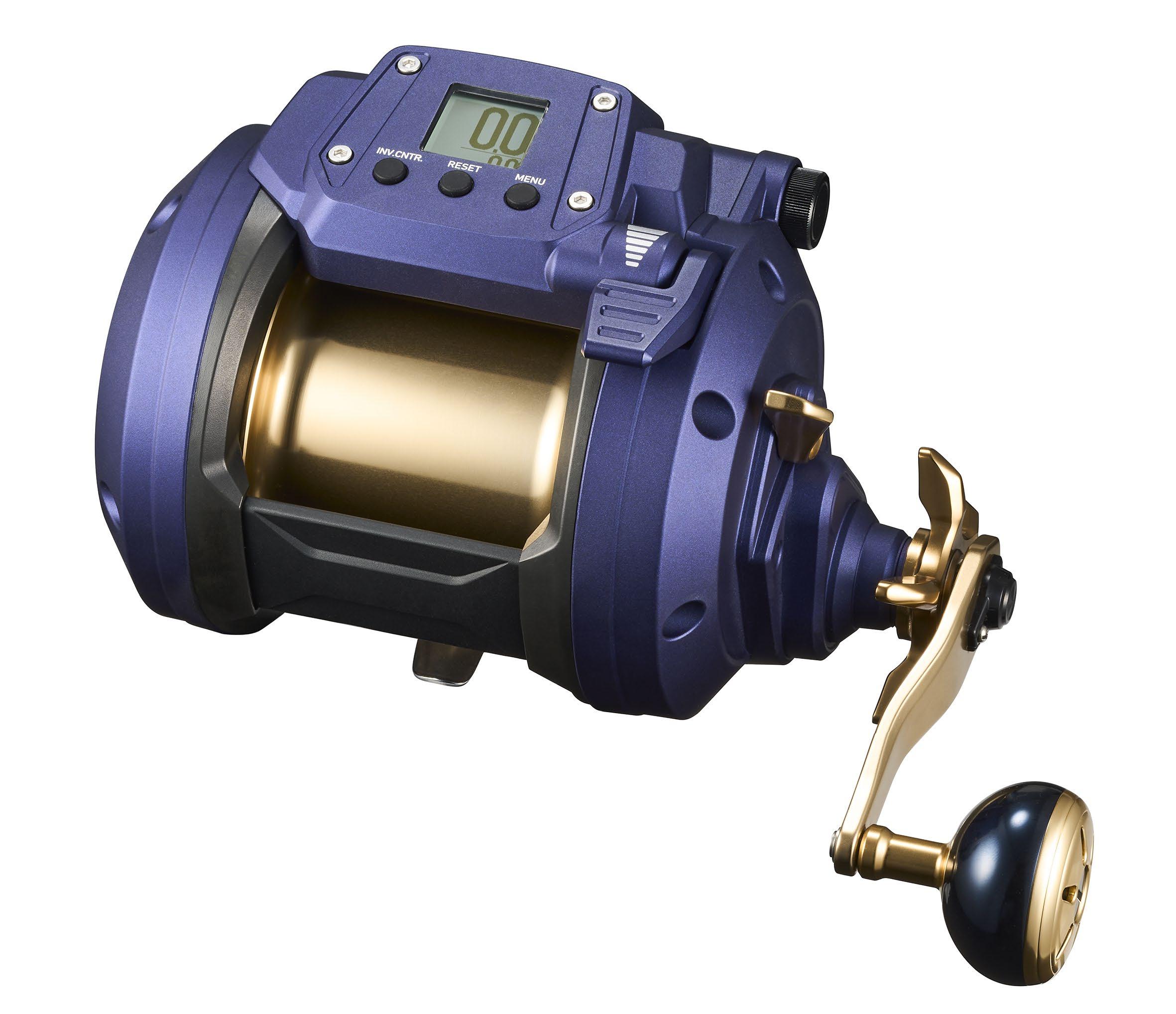
The new Seapower range features two models, 800 and 1200, and now gives anglers more options than ever to explore the depths off our coastline. With key features and functions from the legendary Tanacom range, the new Seapower series is sure to be a hit with deep-drop anglers all over Australia.

Daiwa’s Rainmax wet-weather gear has gone up a notch, with the introduction of Rainmax Stretch, a lighter-weight, thinner material with inbuilt stretch, making rainwear more comfortable than ever.
Rainmax Stretch as the name implies has a level of inbuilt stretch to the fabric, enabling unencumbered movement better than ever before. No longer will you feel bound and restricted by a tight wet weather gear or be bogged down by something thick and heavy. Rainmax Stretch is super lightweight, by increasing the waterproof rating to 27k/7k Daiwa has been able to reduce the number of layers required, making the garments lighter weight and cooler, making them much more suited to the warm climate of Australia.

The Rainmax Stretch Jacket features YKK AquaGuard zippers and an ergonomic 3D cutting pattern to minimize that annoying ‘flapping’ when you’re out in the elements, while double cuffed sleeves minimise rain seepage down your forearm and a 3-point adjustable hood can be sinched down for high-speed boat rides.

Rainmax Stretch pants also feature YKK AquaGuard zippers in a flapless front fly design, while a gusseted crotch area maximises movement for long days on the water. A zip open bottom allows pants to be slid over boots with ease, while a D-Ring on the front of the pants allows for the attachment of tools or lanyards.
Available in a stylish dark-blue indigo colourway, and sizes S to 3XL, Daiwa’s new Rainmax Stretch Rainwear will sure to be a hit with the anglers looking to stay comfortable and dry on the water regardless of the weather and conditions.

With the winter species on the prowl, it’s never been a better time than now to tie on a Steez Soft Shell. A uniquely designed soft vibration bait developed in Australia, the Steez Soft Shell is a hybrid crawfish imitation featuring appendages that impart a unique action on the drop, a stand-up head design and buoyant claws that float and move in the current when the Soft Shell sits at rest.
A gun lure in the freshwater on yellowbelly, bass, and barra, the Steez Soft Shell is equally as desired in the salt with popular southern winter species such as snapper and mulloway stary eyed for this unique lure. Our northern saltwater species equally have an appetite for the Soft Shell with coral trout, threadfin salmon, and fingermark all eager fans of the hybrid crawfish lure.


Measuring 90mm in length, 16grams in weight, and available in ten Aussie designed colours the Steez Soft Shell can be rigged numerous ways and comes standard with both stinger hooks and BKK Fang treble hooks in the pack. Feel the winter heat in 2023 with the Steez Soft Shell 90.


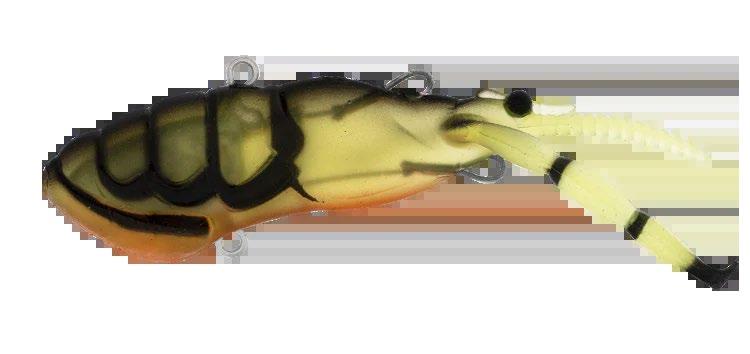


Designed and developed specifically to match to Daiwa’s growing range of deepdrop electric reels such as Tanacom, Seapower & Seaborg, the new Tanacom Braid is the perfect match if you’re looking to dominate the deep this winter.
Built around 8 strands of the finest quality Japanese fibres and made to the highest tolerances in Japan, Tanacom Braid is the perfect partner for spooling electric reels.

Available in either 60lb and 80lb test in 1000m spools, the 80lb is the ideal length for larger electric reels like the Tanacom 1200 and Seaborg MJ 1200, while the 60lb is perfect for the smaller 750 and 800 size electric reels.
Spooling your electric reel is made super simple with Tanacom Braid the perfect length spool. Simply program the reel to spool your desired length and hit the button. Treat your favourite electric reel to a new spool of line this season with Daiwa’s new Tanacom Braid.

An addition to the popular Infeet Spike lure range, the new 53 EXDR is the deep diving crankbait many people have been waiting for. The same great profile from the original 53SP, the EXDR (Extra Deep Running) version now hits depths of up to 4m (12ft) when fished on light line.
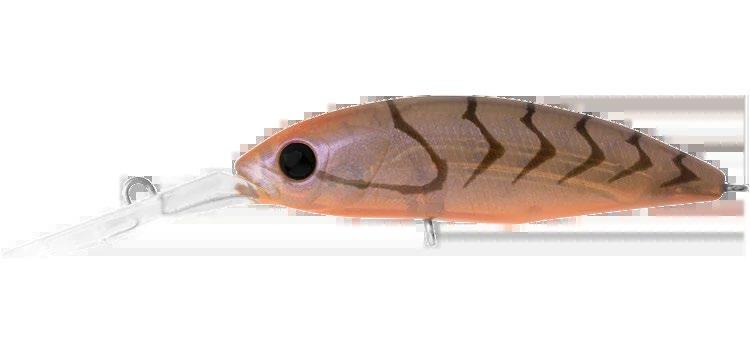
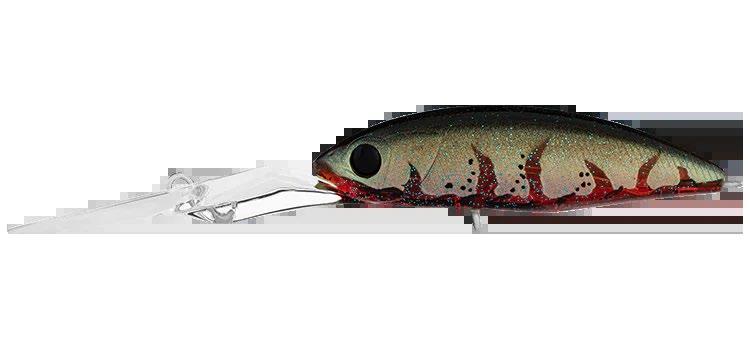


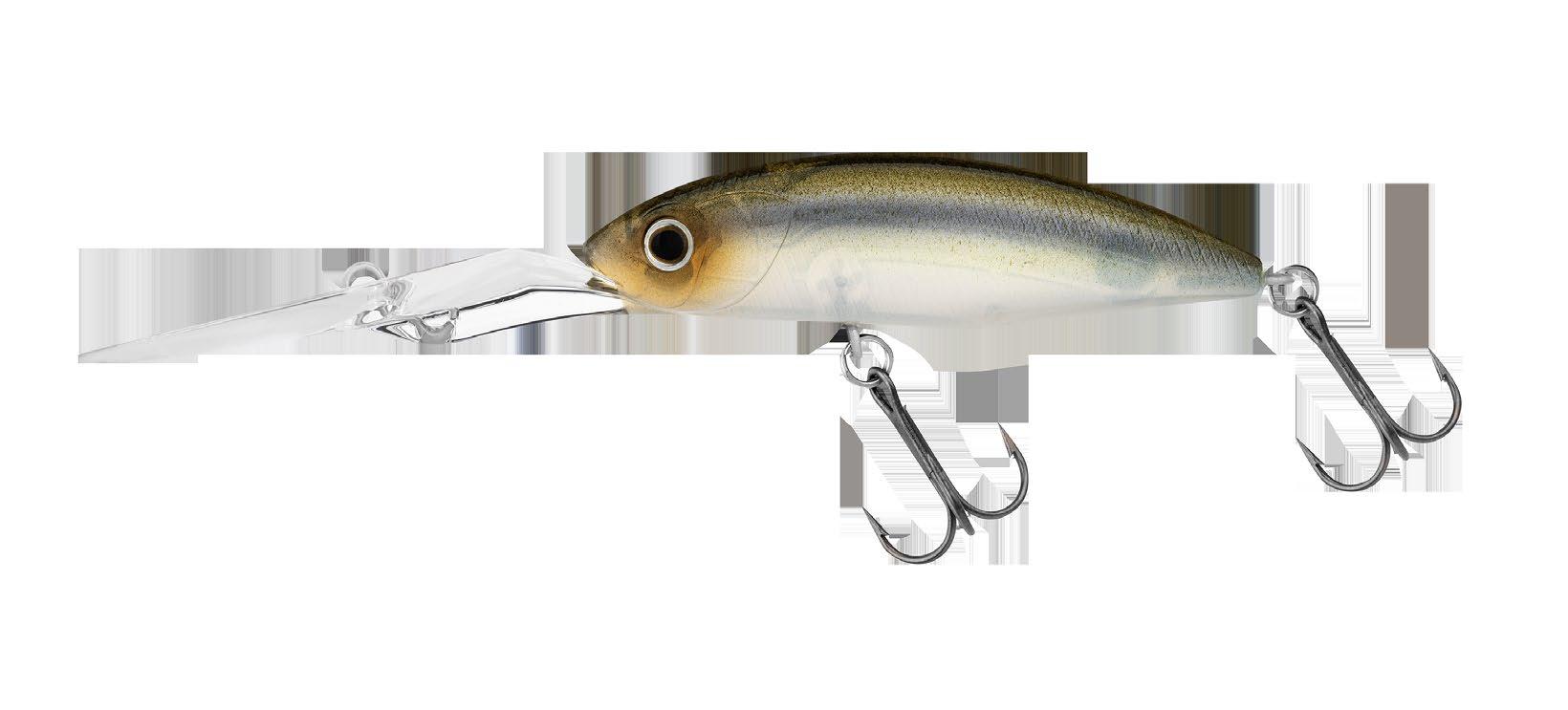

Perfect for chasing bream, bass, estuary perch and more light-tackle species holding in deeper water, the Infeet Spike 53 EXDR weighs 6g, suspends in freshwater (slowly floats in salt) and features a shifting weight inside to make casting a breeze despite the extra-long bib.
Fitted out of the pack with BKK Spear 21SS treble hooks, it’s ready to fish out of the pack and comes in a variety of awesome Australian designed colours to appeal to a host of predatory species in both fresh and salt water.







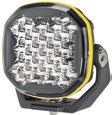
your chance to WIN some pretty COOL STUFF from Magazine
3 LUCKY ENTRANTS WILL EACH WIN A SPOOLED LURE PACK FROM


TO ENTER PUSH THE BIG RED BUTTON






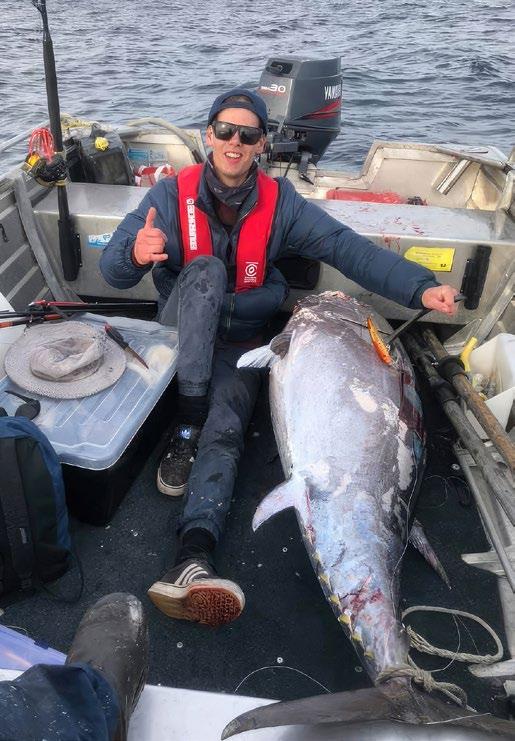


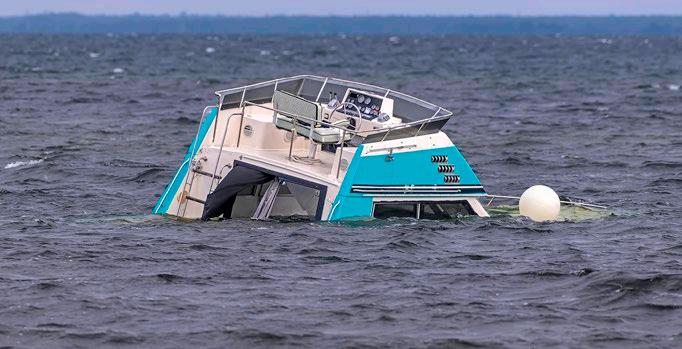

 John ‘Bear’ Willis
John ‘Bear’ Willis
I feel like a sloth in the race for “green” technology with our new world order that is steaming quickly into an almost manic theology of reducing GHG (Green House Gas) to reduce climate change.
We currently see so-called scientists protesting in the streets of Melbourne telling us that we are not acting fast enough to avoid impending doom, meanwhile at the other end of the stick we see others telling us that climate change is a natural part of planet earth’s evolution with quoted change being relative to where you want to start your background data. In my opinion, the big question remains unanswered, just how much does mankind add to the world’s problems?
I recently received some whispers regarding European countries legislating strict timelines for the removal of fossil fuel powered craft from their waterways. Some research revealed reports such as the “Roadmap for the Decarbonisation of the European Recreational Marine Craft Sector” by the “Carbon Trust”.

It says, “This report lays out the challenges and opportunities for the recreational marine craft sector to decarbonise in order to meet growing consumer demands on sustainability and national climate targets.”
One thing this old sloth has learnt is, before you trust in any report is to investigate who wrote it, what were the guidelines/scope for the research/enquires and who funded it?
It says quote, “While the exact total of greenhouse gas emissions from this sector is unknown, emissions from recreational crafts need to be reduced to mitigate impacts on local coastal and inland waterway ecosystems.”
This report provides a clear roadmap for policymakers and industry leaders to steer the recreational craft sector towards decarbonisation, following a full lifecycle assessment perspective, in six key European markets: the UK, France, Netherlands, Greece, Cyprus and Malta.
Sponsored by: UK Foreign, Commonwealth & Development Office with support from the UK Department for Transport… The report provides an in-depth analysis of decarbonisation technologies for vessels with a hull length between 2.5m to 24m”
Established in 2001, the Carbon Trust works with businesses, governments and institutions around the world, helping them contribute to, and benefit from, a more sustainable future through carbon reduction, resource efficiency strategies, and commercialising low carbon businesses, systems and technologies.





The Carbon Trust headquarters is in London and they employ a global team of over 200 staff, representing over 30 nationalities, based across five continents.
It all sounds pretty good eh, however, by their own admission that “the exact total of greenhouse gas emissions from this sector is unknown” worries me from the start as they admit to having zero base line data to work with.
It says, “The decarbonisation of the sector will heavily rely on policy and legislation. Current regulations focus on limiting exhaust emissions within the sector, but there is a requirement to go further and set clear targets on GHG emissions (at national and European level) and an implementation timeline for low emission technologies.”
So in my mind, we are yet again setting targets requiring huge investment in a difficult world economy for technology that is yet to be invented. Mind you, this is all to legislate for the recreational boating industry that is an immeasurably minute when included in the 2.3% of global CO2 emissions returned by the entire global shipping and marine emissions.
OK, so let’s all accept that we all need to make an effort to improve our emissions for the future as we have done successfully with the advancement of clean technology by removing the sale of old “dirty 2-stroke outboards” and huge investment into clean and efficient 4-stroke and even diesel power through multi-tiered regulation.
Not to mention that we have over 200 people working in one single scoped advisory body making recommendations to mandate emission laws through new technology to an industry in which they have zero background data and are already straining to conform with the latest in stringent emission technology.
So I wonder what would happen if we had directed similar investment into removing and reducing pollutants from many fossil fuels with existing investment and process? I happen to know that there are processes afoot to do just that, but will probably never see the light of day because, in the eyes of the new world order all fossil fuels, including their extraction methods, are bad. Well, what then of the extraction of uranium, lithium, cobalt, nickel, manganese and graphite and so many essential “alternative” components for green power, let alone their method and long-term storage disposal?
I guess we’d best ask the technological monolith of China, who are currently building coal power plants with new project announcements accelerated dramatically in China in 2022, with new permits reaching the highest level since 2015. The coal power capacity starting construction in China was six times as large as that in all the rest of the world combined.
And you wonder why all forms of marine power are so expensive! Am I missing something? Soothsayer or sloth?
See ya in the wet bit!
Bear

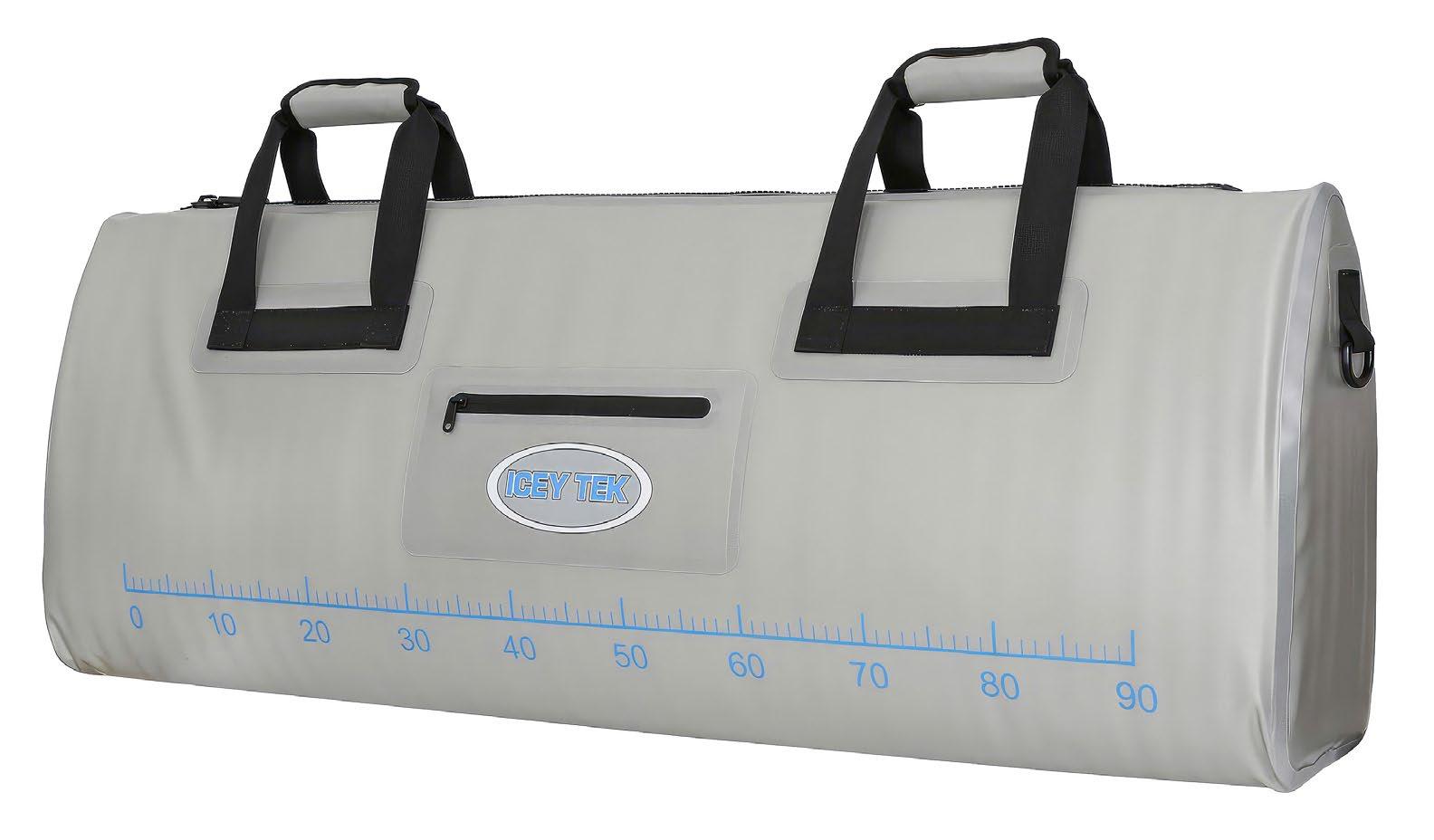


Bermagui’s Tyrone O’Connor looks set to re-write both official and unwritten records. John Willis reports on this lone angler as he personally tags and releases 123 marlin for the season, 85 of which were taken completely solo and unassisted.

The2023 marlin season has been simply phenomenal on the South Coast of NSW where, once upon a time, if you caught a marlin, you were almost a hero. Fisho’s nowadays almost believe success to be an expectation instead of a dream!
In total, Tyrone has been responsible for, or an active part of, approximately 135 marlin tagged and released for the season to date. This number includes having to fish on other people’s boats late in the season due to unfortunately throwing a propeller blade incapacitating his beloved 30’ Luhrs Express that is custom fitted for solo marlin fishing.
As the season draws to a close, Tyrone can finally reveal his exceptional performance publicly. We believe it sets a record for the number of solo marlin tag and release, and will be claiming to GFAA that he has broken the previous official Sir Garrick Agnew Trophy awarded to the angler who tagged and released the most billfish in Australian waters. The available records show the record was previously set at 98 by Peter Pescell in 1998/1999 season. He will be lodging the claim via his membership of the Merimbula Big Game and Lakes Angling Club.

Of course, it is quite possible that there are others in contention for the title given the terrific populations of marlin throughout Australian waters, however, we are not currently aware of any such proposed claims.
In yet another personal victory, Tyrone also experienced the Billfish Grand Slam, with the tag and release of the big three species being black, blue and striped marlin all in one day. Tyrone attributes the return of large numbers of black marlin to south coast waters to have greatly assisted his success. The largest fish for the season was a blue marlin that he wrangled single handed of estimated 140 kg and trust me when Tyrone estimates sizes, you can be sure it will be within only a few kilos tolerance.
Yet another acrobatic striped marlin takes to the sky.

Tyrone recently experienced another milestone, having received certification of his first recapture of an estimated 60kg black marlin that he tagged and released on Bermagui’s 12 mile reef on 10th March 2023. Steve Jackson on the boat, Orazzal 11, recaptured the fish only 13 days later in the same location and recorded it at the same weight. Recaptures such as this are great evidence to the fact that fish, when caught, handled and tagged properly, have a terrific survival rate.
Tyrone recently said, “I am so lucky to be retired so have the time to fish and be lucky enough to be in time with one of the best seasons for marlin on our coast for 25 years! Things have aligned for me; what a place we live in. See you back here soon!”
Tyrone with yet another successful catch and release.

You bet you will Tyrone, especially since as we write the yellowfin have now turned up and we would expect the SBT to make a return throughout the winter months.
Congratulations Tyrone—your commitment is unquestionable and your skill to be admired! Good luck with the record claim. Whether or not it’s approved, you will always be a winner! (Editor—Bear and the Deadrise/Spooled staff)
It takes skill, confidence and attitude to fish for marlin soloTyrone just loves it!





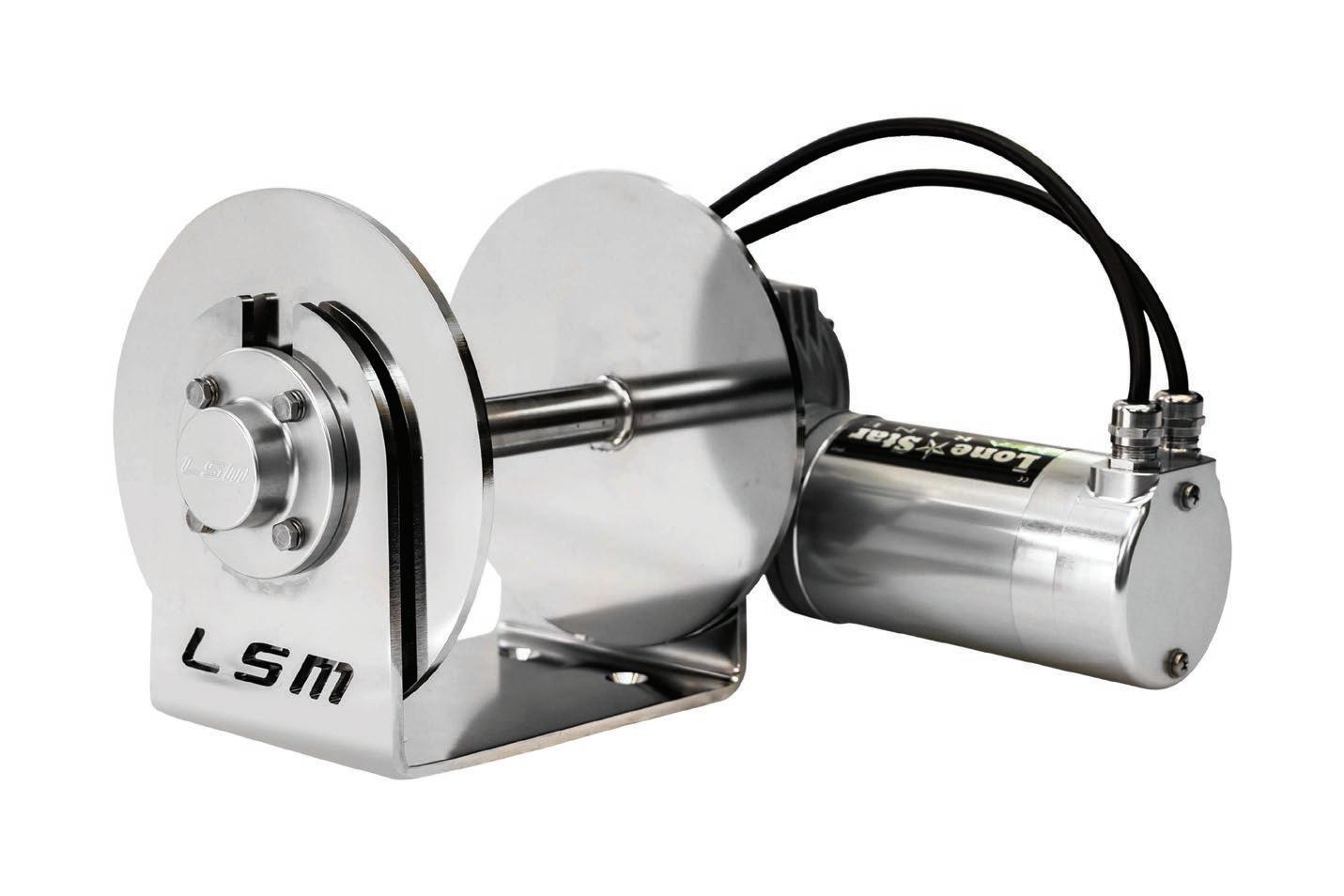

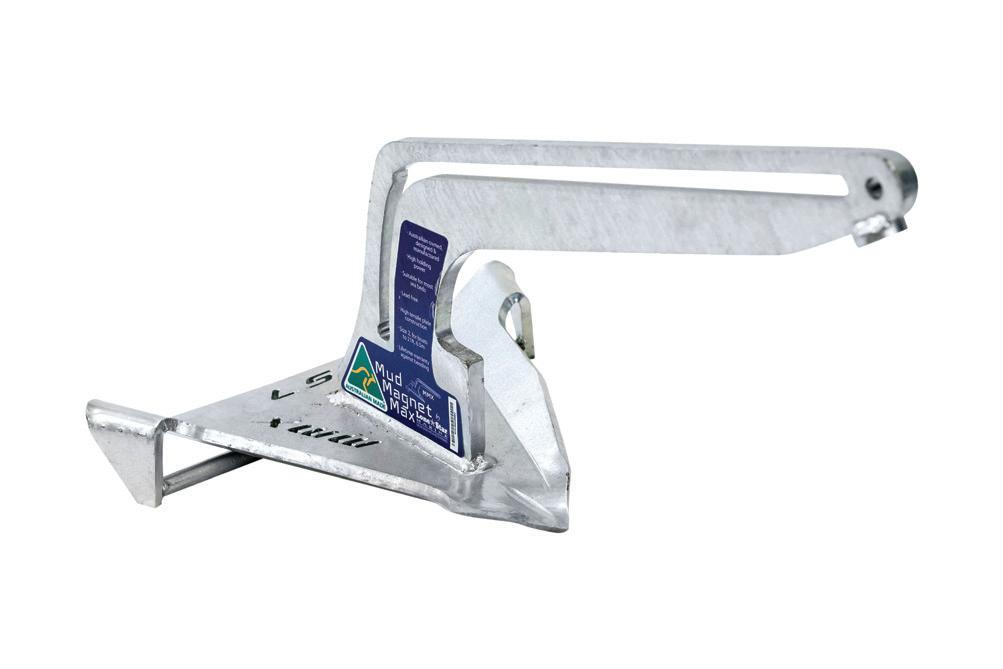



Old school boat of the year

Ah, the Haines Hunter V17L! After all these years and so many stories I feel a bit like a broken record when I declare my belief that the V17L to be my number one choice for hulls anywhere near its pocket rocket size range. They are simply THE best riding and most capable 4.8-5.5 metre hull I have ever driven.

Some are critical of the V17s as having such a deep 22 degree deadrise on a relatively narrow 2.03m beam hull, they are certainly a bit sloppy at rest. But when the shit hits the fan, or you need to travel through the slop, there simply ain’t none that compare!
Remember that the V17L was the popular sister ship to the runabout and half cabin versions designed and produced way back starting in the 1960s. Times were tough at the Haines family factory in the early 70s, so John Haines got all the “shiny bums off their arses” to produce the all new “executive” model with its new sleek lines. He even enlisted his sons John Jnr and Greg Haines to all pitch in to produce the V17L that quickly renewed sales and has become a renowned success with a longstanding reputation for its innovation and performance.
Whilst the deck shape is aesthetically attractive, quite timeless, and often copied, there are many drawbacks by today’s standards, including a very low cabin with limited bow access, limited dashboard space, low windscreen height and a quite inefficient 20” transom layout.
However, with their excellent design and construction, and most being over 50 years old, the V17L has become one of the most sought after boats for restoration and refit in the country.
This is the story of an old mate Ange Kavouras who I first met on a Haines Hunter outing we put together for the now defunct Trailer Boat Magazine a dozen years ago. It was a terrific day that was affectionately nicknamed “Wogs on Water” where Ange proudly showed us his wonderfully refitted Haines Hunter 445F. Years later, we are still mates and he has now progressed to this beautiful V17L.

On the 12th of November 2016, I was fortunate to purchase a Haines Hunter V17L from the Hunter Valley region in NSW. It had been sitting in a barn for 13 years and had not been used in that time. It came with a Yamaha 200 hp 2 stroke with only 68hrs! I took a chance and bought it without seeing it and had it shipped to Melbourne on a flat tray tow truck.
On the day it arrived, I wasted no time in stripping it and started to completely gut the boat from the ground up. I glassed up all the holes. From memory there were 256 of them! I replaced the floors and stringers, including the transom which was raised to XL 25”. The dashboard was extended in the middle for a 12’ multi-function unit.
All the new woodwork was laminated prior to getting glassed in, and for good measure, I foam filled it as well. I glassed in the side pockets and front storage lockers, made bulkheads to separate the cabin and to strengthen the hull. Then purchased a wave breaker from McQuarrie Fibreglass in Williamstown, Victoria and cut windows in it. I also reinforced the wave breaker and securely bonded it to the hull/deck with more fibreglass for added strength.
I spent 250hrs sanding and glassing the bottom and re-gel coated it. The boat was flipped over to do the bottom. The sides and top deck were painted in two pack COB. (Clear over base)


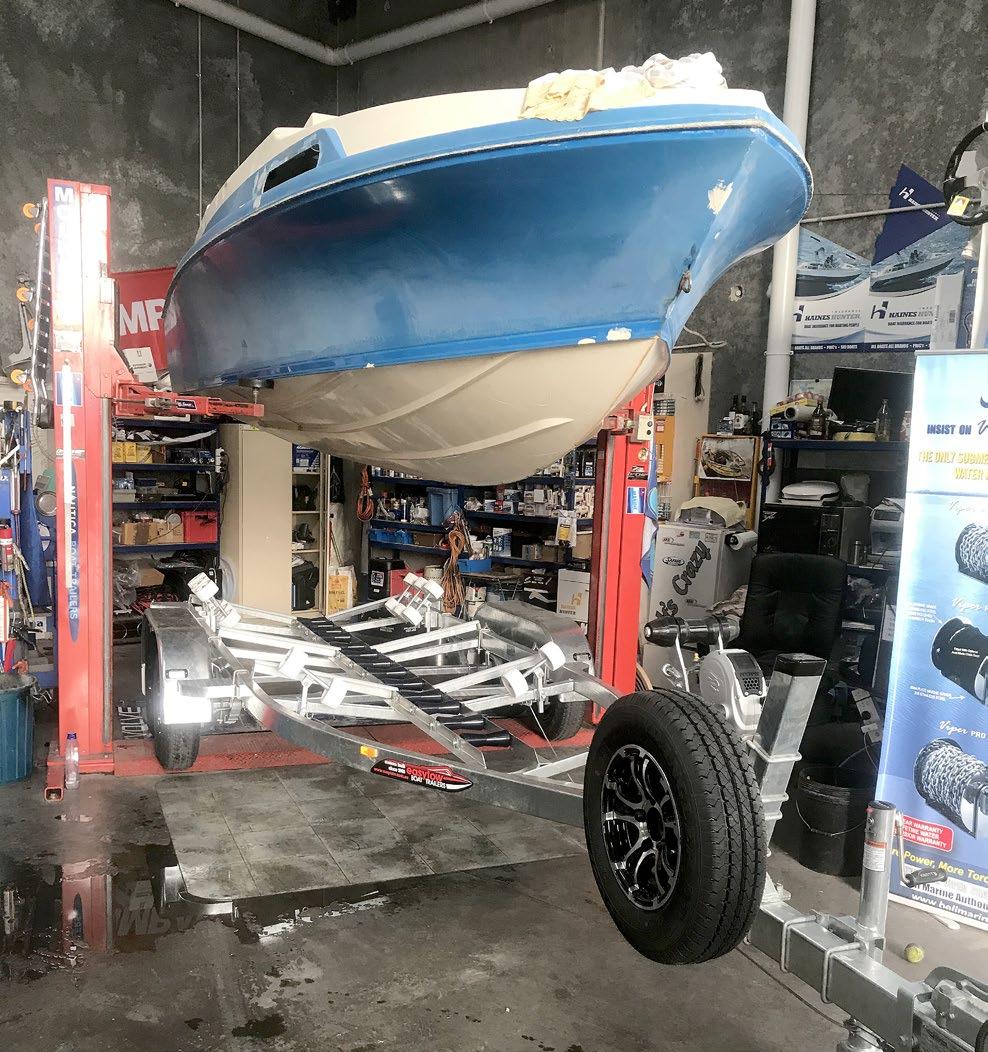
The HHV17L is one hull that is very much enhanced by a strong and practical wavebreaker with windows. She’s sanded and readied for the spray shop.

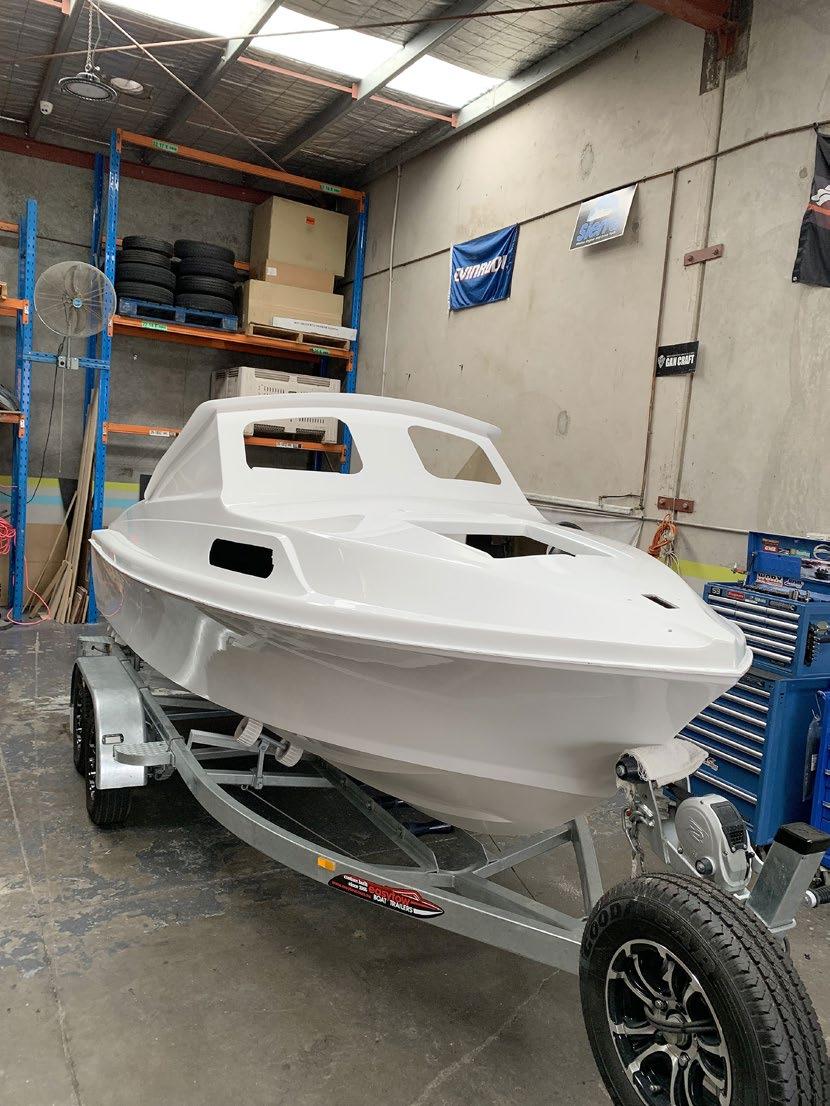
After approx. 250 hours of sanding and preparation the old boat looks terrific with its shiny new white gelcoat.
A good friend of mine, Robert Johnson, made me a glass transom insert so I could glass it in over the rear seats to make two plumbed live wells and also a flat inner transom. I made the front winch shelf to fit my anchor winch and glassed in the side pockets inside the cabin.
The stainless steel assembly was made with some help in house at my company Apex Marine. I personally refitted the new gunnel rubber and all fittings, including the wiring and the engine full fit up.
I eventually decided on a new Yamaha 150hp 4 stroke fitted to a Seastar electric jacking plate and a Seastar hydraulic steering kit. Both batteries were fitted inside the cabin behind the bulkheads.
We fabricated the seats, including the frames in house as well. A deck wash and 2 bilge pumps, including 2 live well pumps in the bilge area, were mounted. I have installed two Simrad units 1x7” in the dash and a 12” top mount with a SS175HW transducer and a 3 in 1 as well. Next I put in 2 marine radios, one being a GME 27 meg and the other is a GME VHF plus Lenco trim tabs to the rear with blue underwater lights.

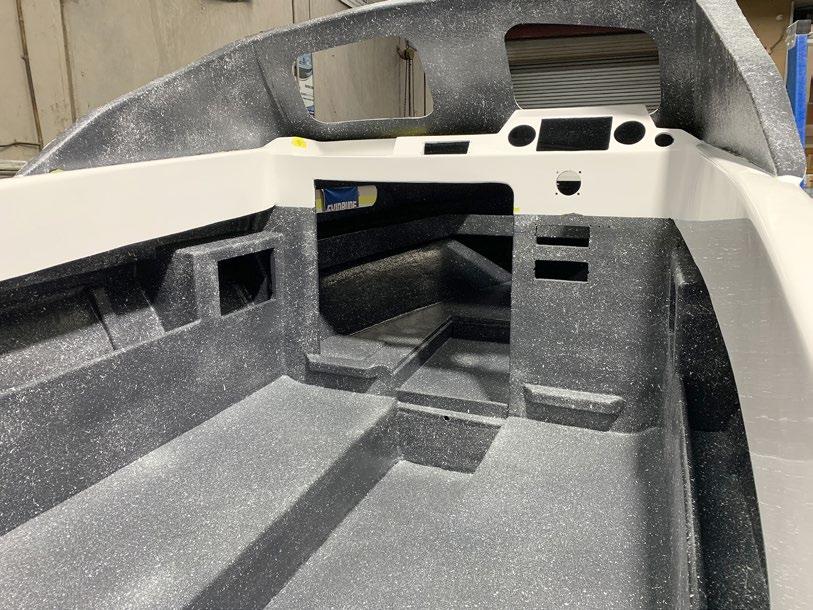

The stainless bow sprit is custom made by Kane Macquarie with the rope and chain going through it so you don’t see the rope. The anchor is a no2 SARCA in stainless steel. As for the stainless nose cone and winch roller shield, I made them. Canopies and clears got done by All Aboard Trimming. All the flooring and trim done by Shane Paton from Quazi Marine, and all I have to say is he is the guru. LOVE his work :)
The trailer is a custom made Easytow tandem with extra-long galvanised draw bar and alloy wheels. I also installed an L&R boat catch. The spare wheel has a complete disc with wheel bearings in it just in case of an emergency on the side of the road. Stone guards were made at Apex Marine.
Ange chose a stunning array of Simrad electronics and GME communications.

I had previously built a Haines Hunter 445f, which I absolutely loved. But I got sick of getting cold and wet in winter and hot and burnt in the summer as there was nowhere to get out of the sun. So when the opportunity came up, I didn’t hesitate to go with the 17L, with the seats and cabin.
This build took 5 and a half years out of my life. I nearly sold it a few times due to not seeing the light at the end of the tunnel. But I soldiered on, and I couldn’t be happier with the way she came up.
The V-berth in the V17L’s are quite small with little head height so a retrim of the bunk cushions and the positioning of the twin batteries is very sensible and weight proportionate.
I mainly fish in Port Phillip Bay, Western Port and Eden NSW. All I can say is it’s a weapon of a boat. For its size it’s so soft, and it doesn’t scare me on the water because it’s so predictable. Being part of the marine trade for decades, I wanted nothing but the best for this rebuild. It took me a long time to finish as I kept changing my mind about things. But finally, she is DONE.
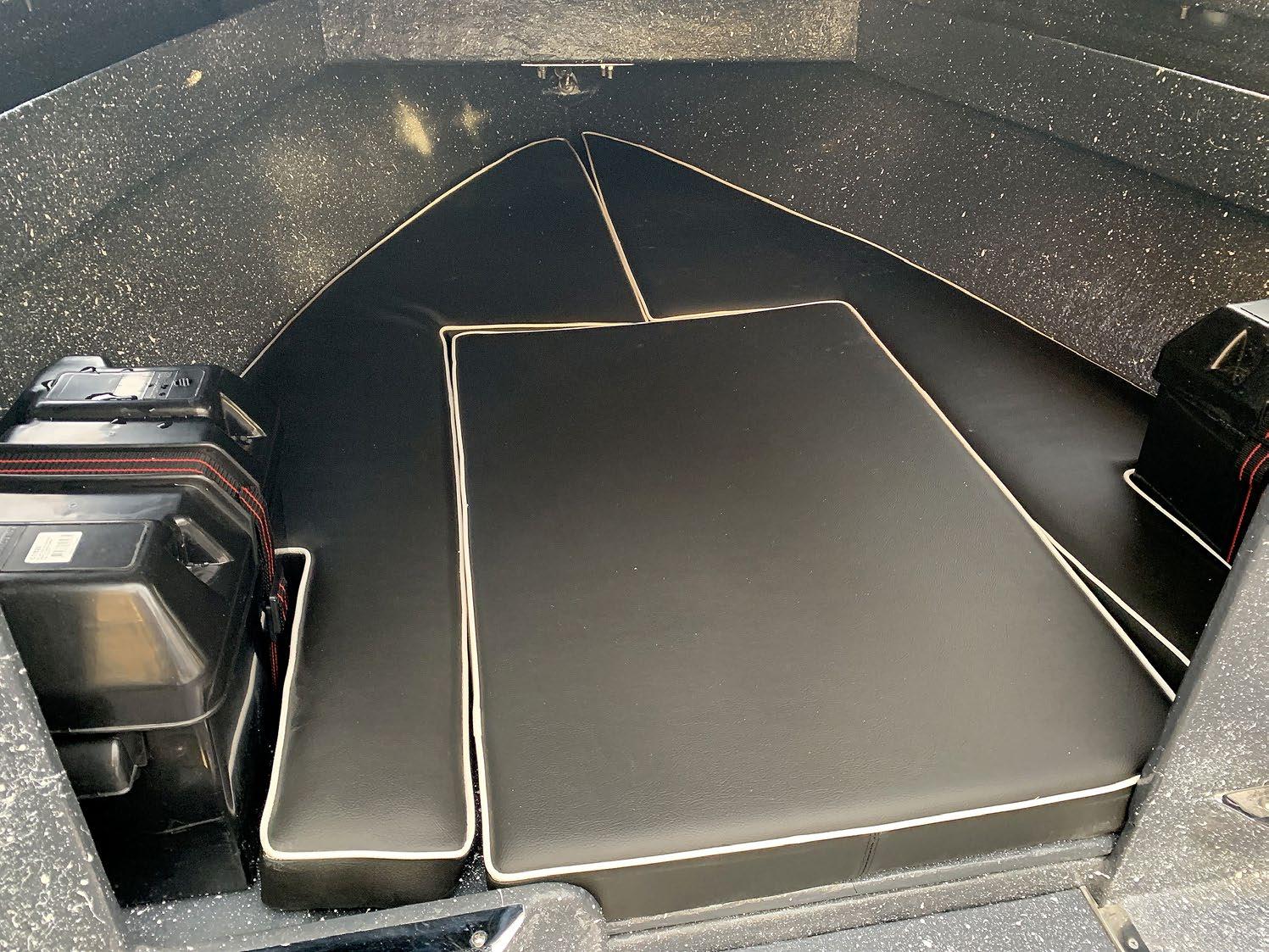
from a very dated old 1970’s design to a modern ergonomically defined workplace. The V17L is ready to fish!
If I could change anything, it would the motor. I would go with a Yamaha 130 just for it being lighter. Otherwise, I wouldn’t change anything else. I had Peter Bobcat set up the boat to include a Solas 9553-145-16P, 14-1/2”D x 16P stainless steel 4-blade propeller which not only gives excellent performance throughout the rev range but gives me a swift 82klm@6200rpm using approx. 2km/l.


She is a BEAST, and she makes me smile every time I launch her in the water .
Fin Hunter in all her splendour! She’s simply beautiful – and catches fish!
Everything about NSX is designed to bring your fishing adventures closer. Enjoy our fastest-ever Autorouting and next-gen C-MAP® charts. Experience new, intuitive touch screens and simple sonar setup with hints to assist you when you need it. Count on high-resolution imagery from state-of-the-art sonar technology, like FishReveal™, DownScan Imaging™ and SideScan. Add compatibility with a wide range of 1 kW transducers for even more target resolution, and there is nothing between you and your next adventure but open water.
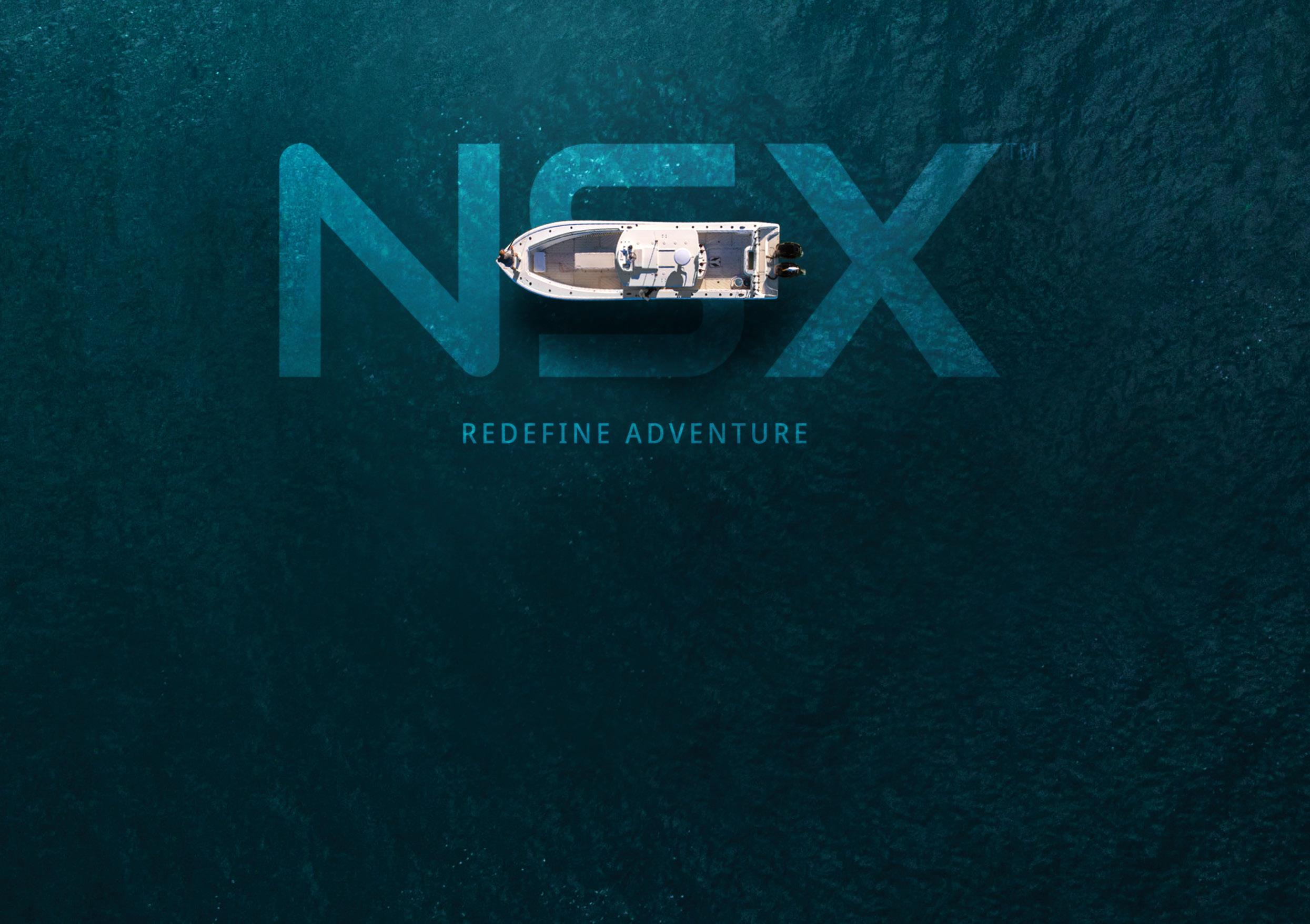

www.simrad-yachting.com/nsx




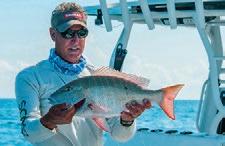
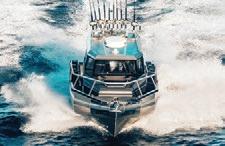

Not exactly what you call a typical offshore machine but the boys got the job done in the Stacer 420 Sea Horse.

If you don’t want to read the whole story of an amazing SBT capture in the depths of Tasmania then here it is in short, quote Vincent Oberle, “We sent a 4.2m tinny on a tuna mish, hooked a barrel straight up, fought it for an hour on light bottom bashing gear, fought off some big f#ck off seals over it, dragged it in by hand and were off the water by 10.30am.

Let’s start with a big shout-out to everyone that was at work today, this one’s for you
They say game fishing is often best described as hours of boredom, minutes of mayhem. And that’s very true. 99% of the time. Today was one of those 1% days.
Monday afternoon, the call was made; Tuesday’s weather looks too good to pass up, so it would be rude not to take a day off to have a crack at some tuna. With reports of good numbers of bluefin present down south plus big albacore and yellowfin being caught around the place, it’s safe to say James Fair and I were keen to have a crack with the trusty 4.2m Quintrex steed. So after assembling the quiver of 15kg spin sticks and 10kg overhead outfits, we were ready to hit the water right on sunrise.
We launched out of Fortescue Bay, as this puts us within easy striking distance of our favourite Tuna grounds. As we approach “The Lanterns” we made the call to swing wider to “The Hippolyte Rock,” one of a pair of impressive granite islands that rise from the seabed 100m below. The largest stands 65m tall, towering over the Tasman Sea and located 10km south of Pirates Bay. (Eagle Hawk Neck)
The Lanterns at Cape Hauy are part of the impressive and very fishy south east Tasmania coastline.

We would normally head south into “Monroe’s” and down to Tasman Island, but since the weather was looking pretty favourable, we headed eastwards. Fast forward a few minutes and as we pull level with the Little Rock and it was time for lines in. Having decided that 10kg was just no good, we decided to run the trusty stripey combo consisting of a Penn 5500 Spinfisher V loaded with 250m of 30lb braid on a 15kg Penn jigging stick. We quickly deployed the ever faithful Halco Laser Pro in King Brown, followed by a Meridian skirt.
Tasmania’s south east coast is simply spectacular.

As I’m just about to set the second rod in the holder, I see the spin fisher load up and fold over flat. ‘No head/tail shakes or fast runs, maybe it’s just weed?’ I think to myself. But sure enough line starts to slowly peel off, YEP! The boys are on. Nothing hectic, but it’s definitely a fish.
As I start retrieving the skirt, I see a splash erupt just behind the lure, another fish coming up to have a crack but missing the hooks. Meanwhile, James has quickly grabbed the rod and I take over the tiller. Little did we know what was in store for us.
After the initial slow and steady first run, the fish settled into a steady rhythm of trucking along at a few knots quite deep, with us following along keeping plenty of line on the reel. Ten minutes pass and the consensus is that it must be either foul hooked or a slightly larger than average fish as it was still dogging it out deep with no sign of the fish being turned or stopped, almost like it didn’t even know it was hooked.
Little boats challenging big seas and jumbo tuna deep in the Tasman Sea.


Minutes pass as we idle along, swinging through north and due east past the big Hypolyte. In the fading distance behind us, we see Stu Nichols pull up behind the Little Rock where we had hooked up and proceed to connect to a fish as well. We later learned he landed that fish and it came in at 80kg+.
The big Hippolyte - Simply stunning and oh so fishy!
We continue to drift past the rock still being towed by the fish, dodging trolling boats all around. James calls out that the fish is coming up fast! We quickly trace our eyes along the line to a splash in the distance. The fish was still a good 60m off. We don’t get to see the fish, but we had an idea that it was bigger than your average schoolie based on the size of the splash and bow wave.
It’s at this point that I realise we now have a couple of brown sea dogs following us. I tell James to be prepared to loosen the drag in case we need to get the fish away from them. As the seals spot the fish on the surface, the fish must’ve seen them too, as it put in its only big run of the fight. Almost emptying the spool in a matter of seconds, prompting a spritely chase down on our part to get some line back. I think it was at this point that James asked me whether I have faith in the setup, to which I reply ‘I tested every part, every knot and I have full confidence in the setup’. As I say this, we watch a knot in the mainline slowly strip off the reel and through the guides. Shit.
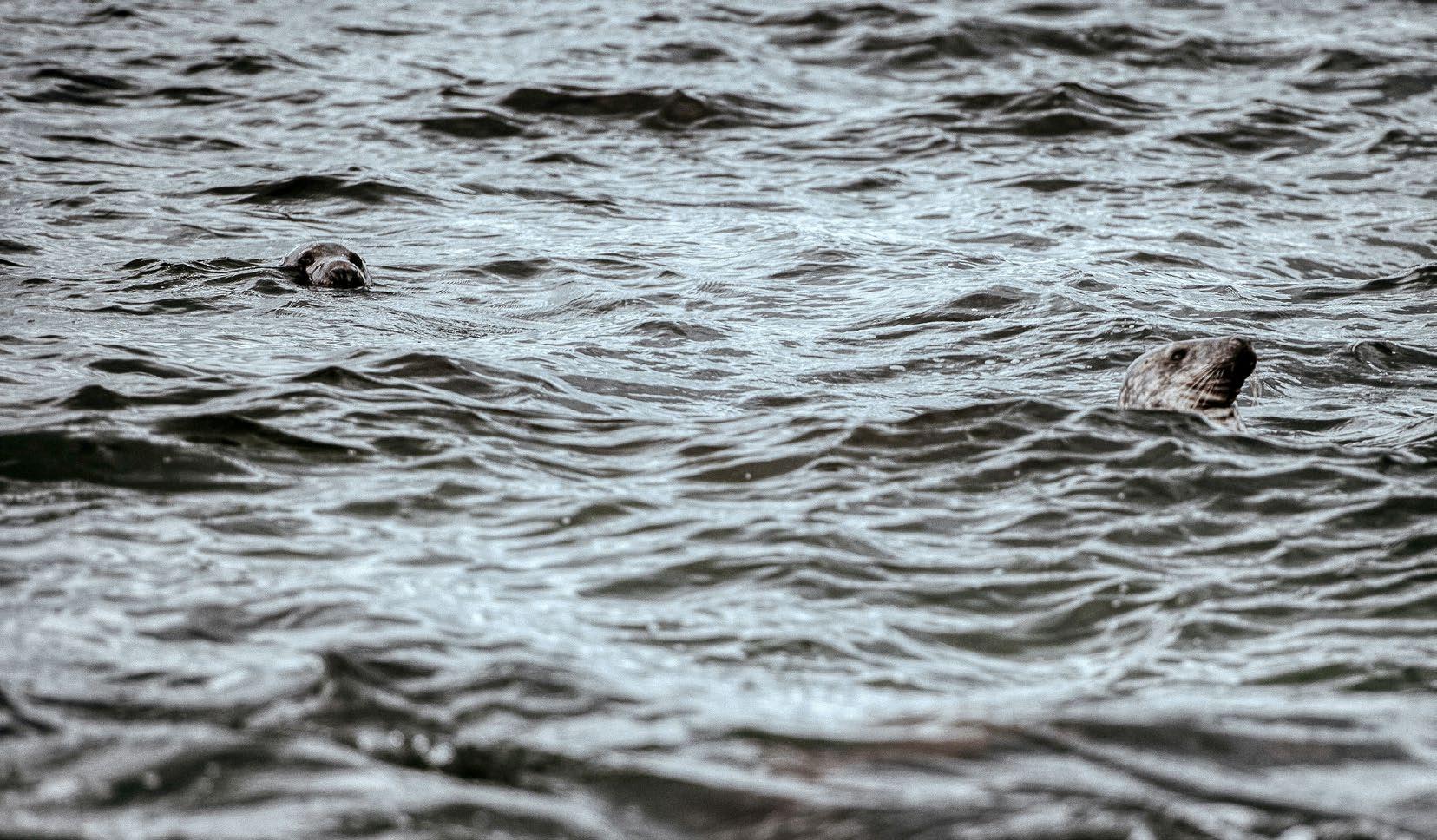
Fur seals have learn’t that tracking small boats can earn them big rewards.
The limiting factor in the setup was the small reel and its ability to deal with such heavy drag for a prolonged period, and as the fight wore on, the reel got quite hot. Like James however, it never missed a beat and continued to deal with the abuse as James kept the pressure on, slowly raising the fish, painful pump by pump.
The fish starts to come up quickly again, much closer to the boat this time. As we scan the ocean in front of us for a glimpse at the fish, our hearts sank as we realised it was coming up right in the middle of a pack of five big bull seals. Sure enough, as it broke the surface in a glint of silver, a seal was dragging it through the water.
Even a small pack of seals can make short work of your catch. It pays to be on the lookout and boat your fish ASAP!

What happened next is all a bit of a blur. After hurling a few choice words at the seals, what followed was a series of full throttle backing and running down manoeuvres that the big man Eddie Lawler himself would have been proud of.
After getting on top of the seal pack, we got our first good look at the fish, and any reason that we had left flew straight out the window. As I dodged angry seals to get a grab at the leader, James drops the rod for the gaff and sinks it straight into its shoulder just as the hooks pull out. I realise the only thing connecting us to this fish of a lifetime is James’ flimsy broomstick, backyard-job gaff ‘
“The hooks pulled!” I scream at James, and he responds with “Just put them back in!” as he grabs the lure and rams it back into the fish’s gob. Meanwhile, all I can think about is securing the tail as I reach behind me, grabbing the bow rope. As I fumble wraps around the tail, I look over and James is leaning over the gunnel, face to face with a bull seal, the fish between them, James yelling abuse and thrashing the water with his fists like there’s no tomorrow.
I manage to tie off the tail, as the fish is thankfully just playing dead at this point. We cut the rope loose from the bow and bring the fish to the transom, seals continuing to duck and grab at the fish. I realise that whatever happens next determines whether we take this mostly whole fish home, or we lose it to the seals.
We line up the tail on the transom, and start to summon every bit of remaining strength to haul this behemoth of a fish into the boat. Shaking with adrenaline, I yell out a count and on three we’re ready to give ourselves our first hernias. James sprawled across the backseat, feet on the transom. Me, braced against the back of the seat, hands wrapped around the rope. The fish rises halfway out of the water and stops. There’s a loud crack, and I look down to see the splintered pieces of gaff slowly drifting away in the current. Whoops.
By now, we’ve got nothing left in the tank. After yelling a spray of ‘encouragement’ good enough to make any AFL coach take note, we have one more heave, and with James leveraging a horizontal calf raise braced against the transom, the fish slides up and over the lip, coming to rest on the back seat with James sprawled underneath on the deck, wheezing ‘one more heave’.
After managing to convince him to get up to avoid having this very large fish drop on him and ruining his day, we manage to slide it wholly into the boat. As we marvel at the size and sheer awesomeness of this animal, we’re lost for words.
The next ten minutes are spent with minimal talking, gulping water like we’d just run a marathon and legs shaking. We somehow manage to bleed and gut the fish, but not before James samples a bit of barrel heart.
We fill the gut cavity with ice, wrap a wet towel over the top and make for home. Both of us gobsmacked. How do you explain that we’d just set out to catch any tuna, trolled for 30 seconds, hooked up on 5500 reel 30lb setup, then boated a barrel in a 4.2m dinghy, all in around one hour?

As we’re sitting at the pub, retelling the story to our good mate Joe Kowaluk, I still can’t believe it. It doesn’t feel real.
An exausted angler James Fair with the fish of a lifetime.
Oh yeah, you’re probably wondering just how big it was? We decided to butcher the fish ASAP to maximise its eating quality and weighed the slabs on our digital commercial kitchen scale in house. The meat first three tubs averaged approx 19 kilos net each, with 21kg in the skull and 13kg in the spine and tail. We added the skin, scraps and trim and were surprised to find that although we’d conservatively estimated this fish at around 80kg the lie detector indicated that we had a massive 105kg of bluefin right in front of us, and that’s not including the guts and blood we’d left 4kms east of the rock.
This was not just any barrel, this fish was comfortably over 100kg and our disbelief continues. What a day!

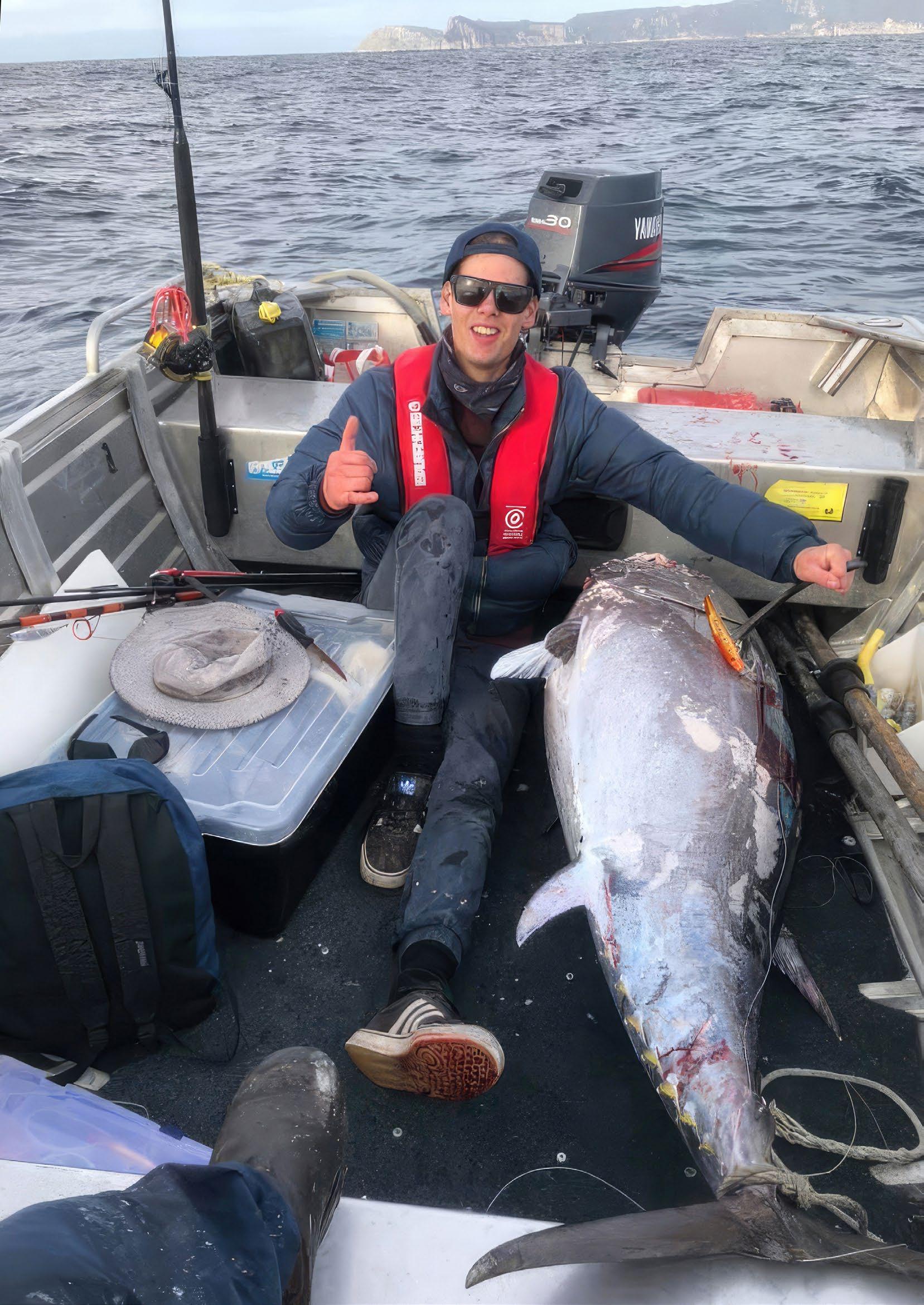
Looking back at this now, I feel compelled to address a couple of things. Number one being that if you’re going to do something like chase large offshore game-fish in a small open trailer boat, you need to make sure you know your equipment and your own capabilities.
Conditions here can change in the blink of an eye, and even the most thorough weather models regularly get the forecast wrong. Use your judgement, play it safe and always make sure you have appropriate safety gear onboard.
Secondly, I need to address the seal challenge that faces the anglers of southern Tasmania. Australian fur seals, whilst considered rare on a global scale, are thriving around Eaglehawk neck. This is because hooked and struggling tuna provide an easy and nutrient rich meal for the voracious seals that have learnt to specifically target these fish. To their credit, they are extremely smart and have gotten very good at stealing hooked fish off a line.
with the result of a wonderful team effort. Note the damage done in just a short time by a few hungry seals.
Packs of hungry seals will often trail boats, attracted to the sound of the outboard and wait for a tuna to hook itself, only to pounce once the fish is within easy striking distance. Local fishermen are used to this added challenge, in the same way sharks interact with anglers and pose a risk in other parts of Australia and the world.
A fish that seals have ravaged is not a pretty sight and is actually disqualified from being weighed in a competition scenario. We consider ourselves lucky to have gotten this fish in the boat despite the superficial damage inflicted on this beautiful large bluefin tuna.
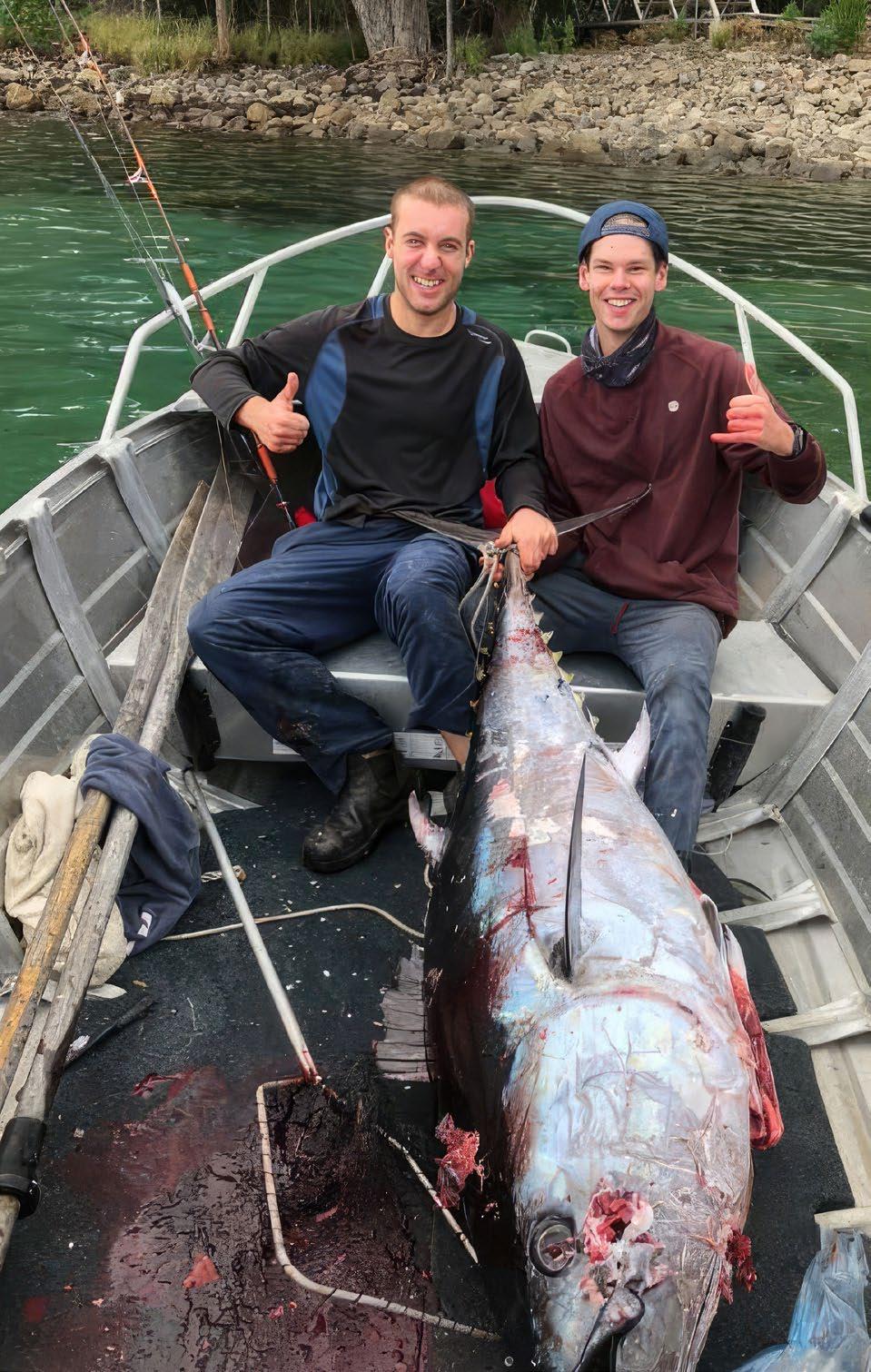



“The difference between a good outcome and a great one is effort”.
Now here’s a rig that really got the juices flowing. Its lines look all too familiar but somehow with their own undefinable flair. We looked at the magnificent 23’ hull and imagine inspirations from some of the greats of offshore racing, and yet with refinements of her own sleek and sporty character.
She’s a BMD Pro-Tournament 21 stretched to 23ft built from strip plank composite incorporating a 25 degree deadrise at the transom. Surprisingly, she weighs in fully fuelled at 2.2tons (345lt tank) and tops out at 45-47 knots WOT depending on load. Best still, she cruises comfortably at a speedy 32-35 knots very easy.
The owner/builder Nathan Lewis started the build as he wanted a bigger centre console but I couldn’t afford a new one or pay the Haines tax for a 233 to convert. This rig owes him about $47,000 AUD spread over a three year build time, however Nathan didn’t even pause to think about the massive amount of hours it took.
Nathan’s father gave him the inspiration to build the BMD, and he hopes that perhaps this project may one day be inspired to do a similar project–or give him something to be proud of anyhow!
Where to begin? Sometimes you just must give yourself a push. Mine came after a few too many cold ones while touring in Broome one night. I believe I said ‘stuff it’ to myself and pushed the “buy” tab on a website I had stumbled across while trolling for a project v19 or a Bertram Bahia Mar hull to rebuild/convert into a centre console. I had a dream of an American deep-V centre console with big flair, but unfortunately my finances said otherwise.
So I became the proud owner of a set of plans for a Bowdidge Marine Designs ProTournament 21- the only problem was I had no idea how to make this happen. Thankfully, I have an extremely supportive wife who went along with this crazy plan. Only stipulation was that it had to have a toilet, she got to choose the colour, and she got to name it, however it’s still nameless to this day.
After a few emails and phone calls to Mark (The founder and designer from BMD) I was given access to the builder’s forum that contained a wealth of information, as well as numerous how-to videos. Never satisfied with following the crowd, I asked Mark if there was any chance I could stretch the hull? Without hesitation, he talked me through how to do it properly without

The 12 x 30mm planks are spaced apart to allow the glue to be screeded on evenly and in one shot.
affecting the boat’s design characteristics and its balance. Mark quickly sent a new profile drawing for the longer stem frame and after laying the boat outline on the garage floor in tape to see if it would fit, the build began.

The hull is a composite build of Paulownia strip planks 12mm x 30mm. The planks are laid over MDF temporary frames using a quick and easy method that allows the planks to find their own way and not be under excessive pressure. The strip planks are spaced out using tile spacers to provide a gap for the glue to be screeded through at a later time. Doing it this way allowed the hull be to fully planked and squared up without racing due to the glue going off. The hull was then faired ready for glass. I enlisted the help of family at this stage, as it was the beginning of summer and I could not work fast enough. The outer hull was glassed with a total of four overlapping layers of 450 db glass and epoxy, with the generous overlap the outer hull is eight layers of glass in most areas. The lifting strakes are added and three reinforced solid glass sections for thru hull transducers and raw water pickups. After countless hrs of filling and fairing, four coats of paint were applied to the bottom, and the hull was flipped with the aid of family and friends.
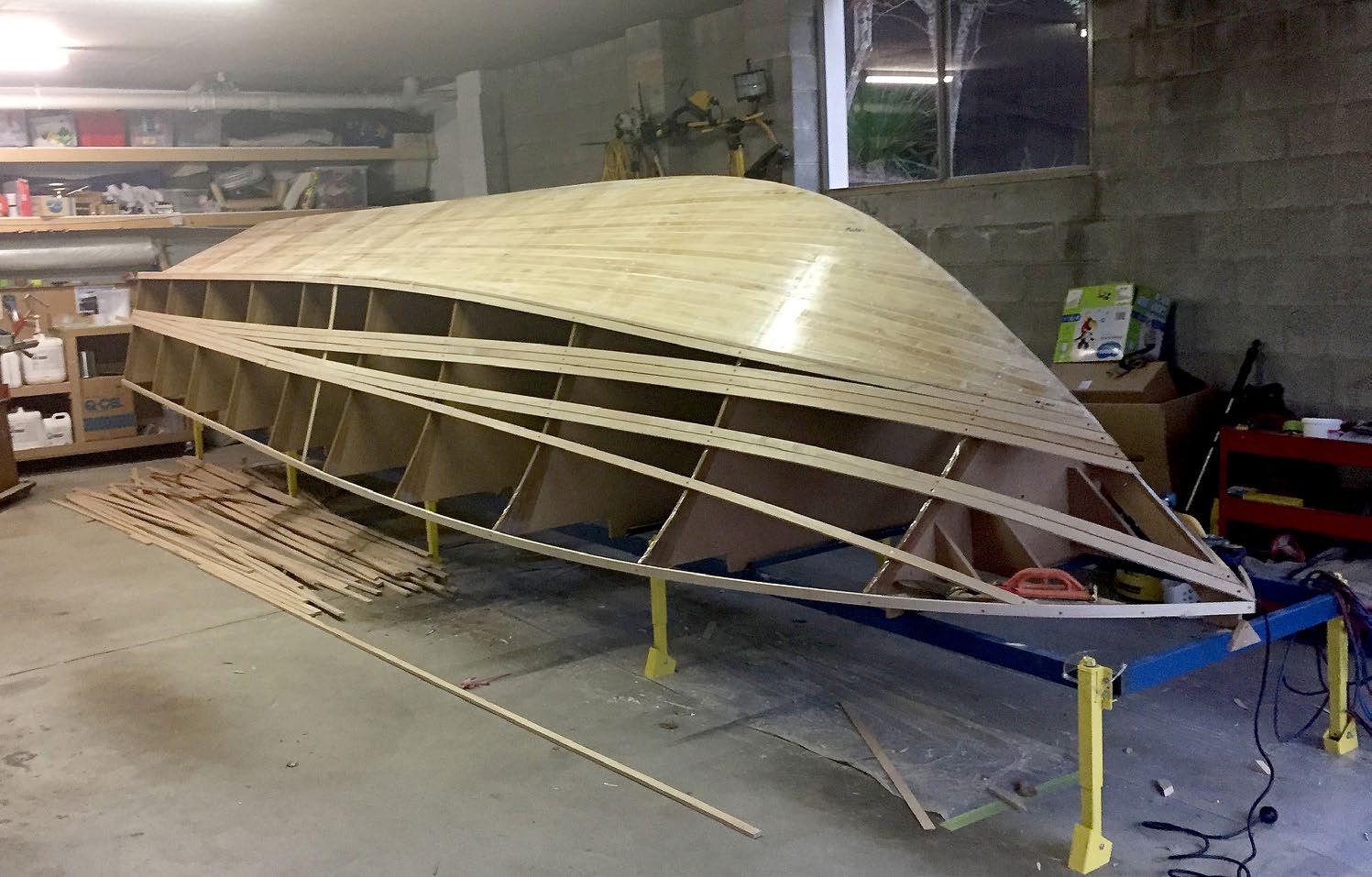
Spacing the knees and sub floor structure with consideration for the added weight of the 345 litre fuel tank.
Once flipped, the hull was braced on temporary frames on top of a secondhand trailer I picked up for a grand. The frames and longitudinals were cut out of 19mm exterior ply and tabbed into the hull. The inner hull is with tabbing and overlap, incorporating four layers of 450 double bias fabric.
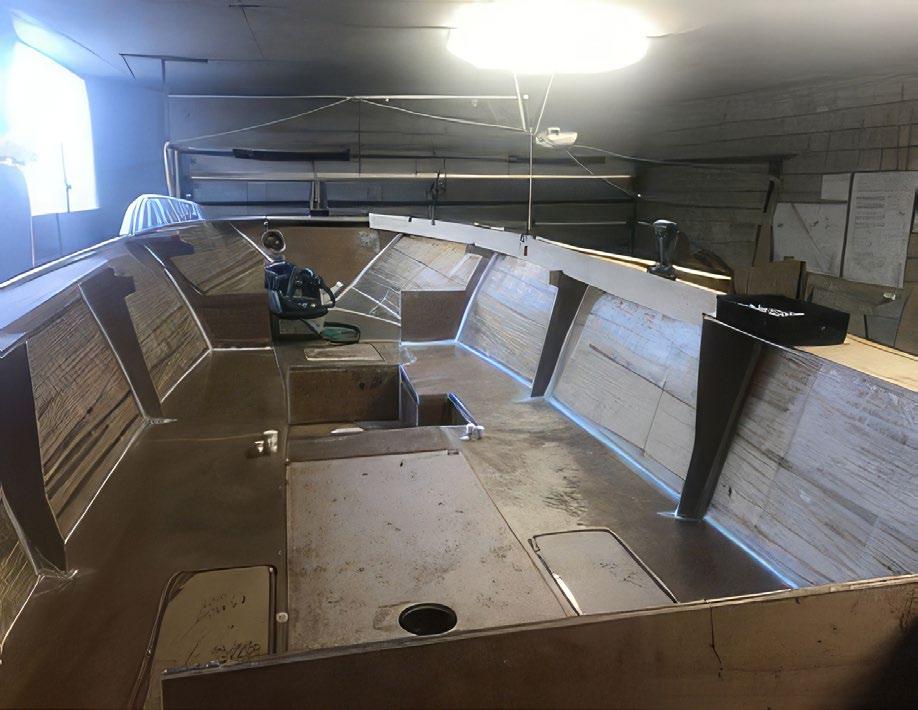

After lots of late night planning sessions, the plumbing and cable runs were all added as well as the insulation of the kill tanks. Two part rated foam was poured into all sealed compartments. Photos of all the critical steps were sent to the designer to ensure compliance and to ensure he was able to assist with the builder’s plate on completion. This also helped to get the build insured once it was complete.
The floor, bulkheads and hatches are all carefully placed and secured.
The custom fuel cell was built and tested by Scotty from Black Label Marine to survey requirements from plans provided by Mark. It ended up holding 345lts at first fill. There were many trial fits and multiple design changes to get it to fit, also due to the tanks increase in size and the hulls stretch, Mark repositioned the tank slightly for better weight placement after the sole was glassed down. Although the requirement was to paint two coats wet on wet epoxy on all timber areas, I went the extra step and added a layer of 450 db to the backside of everything. There is no exposed wood anywhere in the hull. Even all the attachment points and holes are drilled over size and filled with epoxy before being re-drilled at the required size. Any area that is screwed has a screw thread made from epoxy so that the core is sealed.
After finishing the build I spent a few hundred hours sanding and filling before priming, I installed a teak rub rail around the edge and glassed it with multiple layers to give the boat some protection. The finished hull is extremely light but also stiff. Banging anywhere gives a resounding thud as most areas of the hull are up to 25mm thick.
the combination centre console and seating unit takes shape.


After building the console and glassing it in, we sold our house, so it was a chance to take the boat on its first trip. It went to Paul from Designer Stainless to measure up and rough out the T-top and grab rails. Paul did an amazing job, I’m extremely happy with the work he did and even more so with the price. I had heard horror stories, but some good mates put me on to Paul and I am exceptionally grateful. One of those mates even did the T-top cover that came up a treat.
Then it was more and more sanding until I delivered it to the guys at Flight Marine to give the hull a not-so home built look. Again, I had got a few quotes, as my skills on the gun are not that good. I had just about talked myself into spraying it myself when those mates of mine put me on to Flight Marine. Flight did an awesome job at around a third of the price of some others. When I first saw it out of the spray booth, I was floored. I was also glad I had handed over the colour choice to my wife as she picked a pearler.

The very workable half pod transom is a key element.An enclosed head is a welcome addition in an open centre console.
The internal layout really begins to take shape once the centre console is fitted.


Fit out began as well as all the wiring and engine rigging. My father stepped in to do a custom laid PNG teak deck left over from his boat. He put me to shame with his skills and workmanship. I still have so much to learn from him that hopefully he can help me with the next one.
Add a custom T-top and some fittings and the BMD23 really starts to come together.
The best part of the project was laying the strip planks over the temporary frame and watching the shape appear with every plank, quite astounding to see the hull appear out of a pile of plantation shutters, Paulownia and saw dust. The worst part of the build would be the endless sanding, and sanding, and more sanding. And when you think you’re done… more sanding. But like everything, the difference between a good outcome and a great one is effort, so I am glad I kept at it as I am very happy with my first attempt at a boat. I do need to work on my hatches, probably my biggest disappointment.

Nathan’s father stepped in to do custom PNG teak decks with timber leftover from his own build.

As costs were a huge factor in the build, it took a lot longer, buying materials and parts when I had a little spare. Most of the big-ticket items are second hand. Anything that is a consumable or repairable like the engine and trailer I hunted around. The engine is actually the second one I brought for the boat, the first being a 1997 EFI Mercury that popped up on Facebook marketplace in Emerald. I packed the family up and drove through the night with a box trailer to grab it, however I ended up selling that one to fund more of the build and eventually found the 250 Opti in Melbourne. Although that was not without drama, as it went missing in transit for a week or so, then it destroyed the compressor and two coils shortly after launching.
When covid struck, I was in the middle of changing jobs so it gave me a chance to get the boat finished during the delay. After seven months without work, I managed to launch the boat and put about 15 hrs on it. Then I packed it into a shed and moved to the middle east. It has sat in the back of the shed since then.
Costs were a huge factor of the build, so Nathan sourced a pre-loved Mercury 250Hp Optimax and transported it from Melbourne.
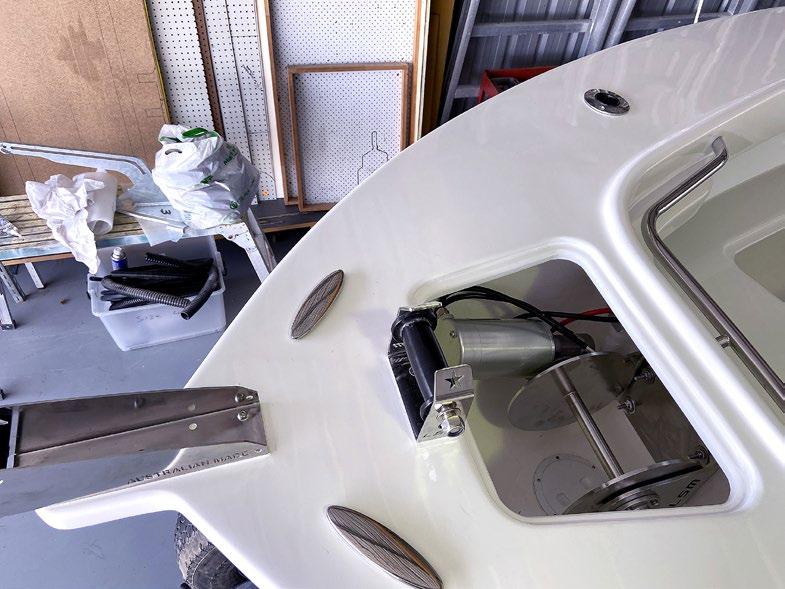

Would I do this again? Definitely, it paid off. I got three times the boat for a third of the cost and it performs just so well. The deep-V took a bit to get used too but a bit of extra trim to keep the nose up and she cuts through it all. In fact, it tops out at 47kt doing 5800rpm with a half load. She will cruise at 35 knots through pretty much anything, so that tells a lot about the efficiency of the hull and the BMD design.


Bingo! And after all that toil the beautiful BMD23 is ready to taste the brinyand love it she does!
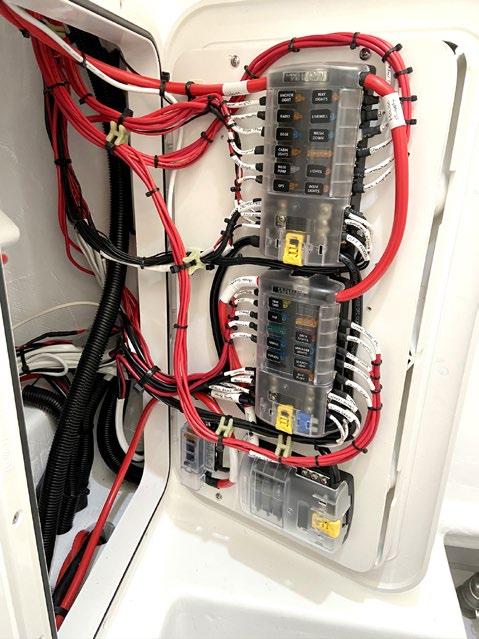
Speed was never the deciding factor, but I am happy that it does get up and go. For a centre console, it is actually pretty dry. The extra length means it is a bit of a knife and likes to carry a bit of speed. Next on the list would be to add a wind screen or some clears.

She is a little heavy in the nose, the forward seating and the Lone Star GX2 anchor winch mean there is a fair bit of weight forward. The big flair means there is plenty of lift in the bow so there are no concerns about her stuffing the nose. I will readjust the weight when I re engine it with a 250/300 four stroke, due to items like the oil tank for the Opti
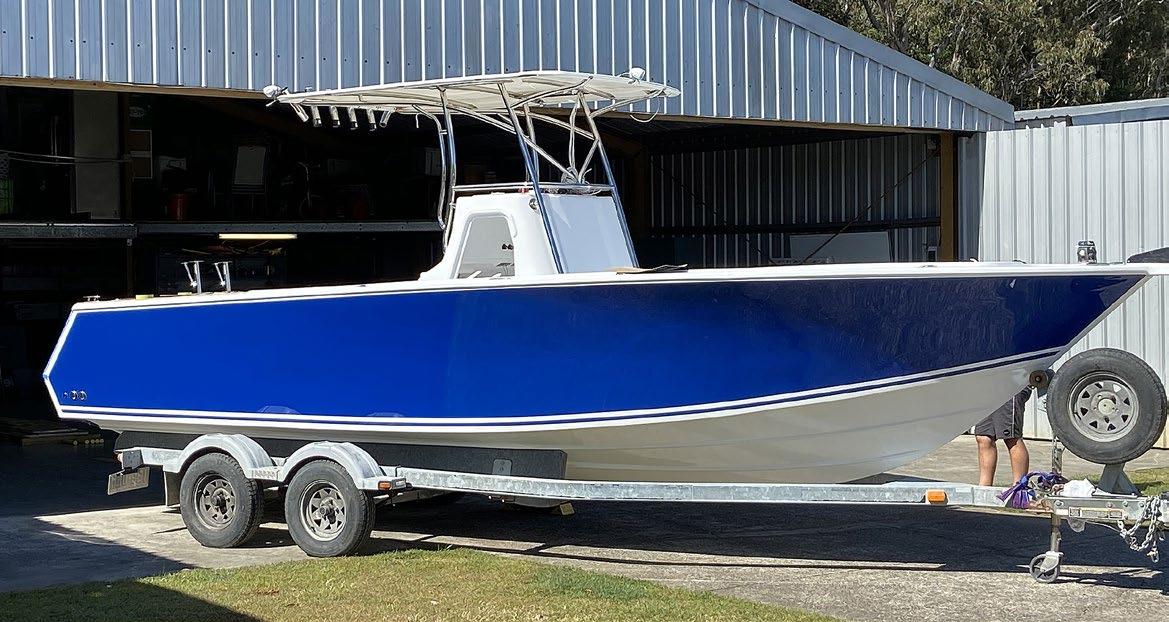
that meant I had to move the batteries to the front of the console. Nearly 50kg of batteries will move back to the transom and will bring the COG back. She already has plenty of trim authority with the engine and the trim tabs.
Just add water and she’s ready for long distance reef sojourns.

At the moment I have been going through a few health issues, but all going well I would like to build the 32ft version, I have had a few words with Mark about the design and engine options, everything from twin out boards, single inboard and even a diesel powerplant. Hopefully, when I move back to Australia in the next few years, I might get it going. Just have to make sure my family is ok with it; it was a massive undertaking to build and without my wife’s support and help, I would never have gotten this dream afloat.
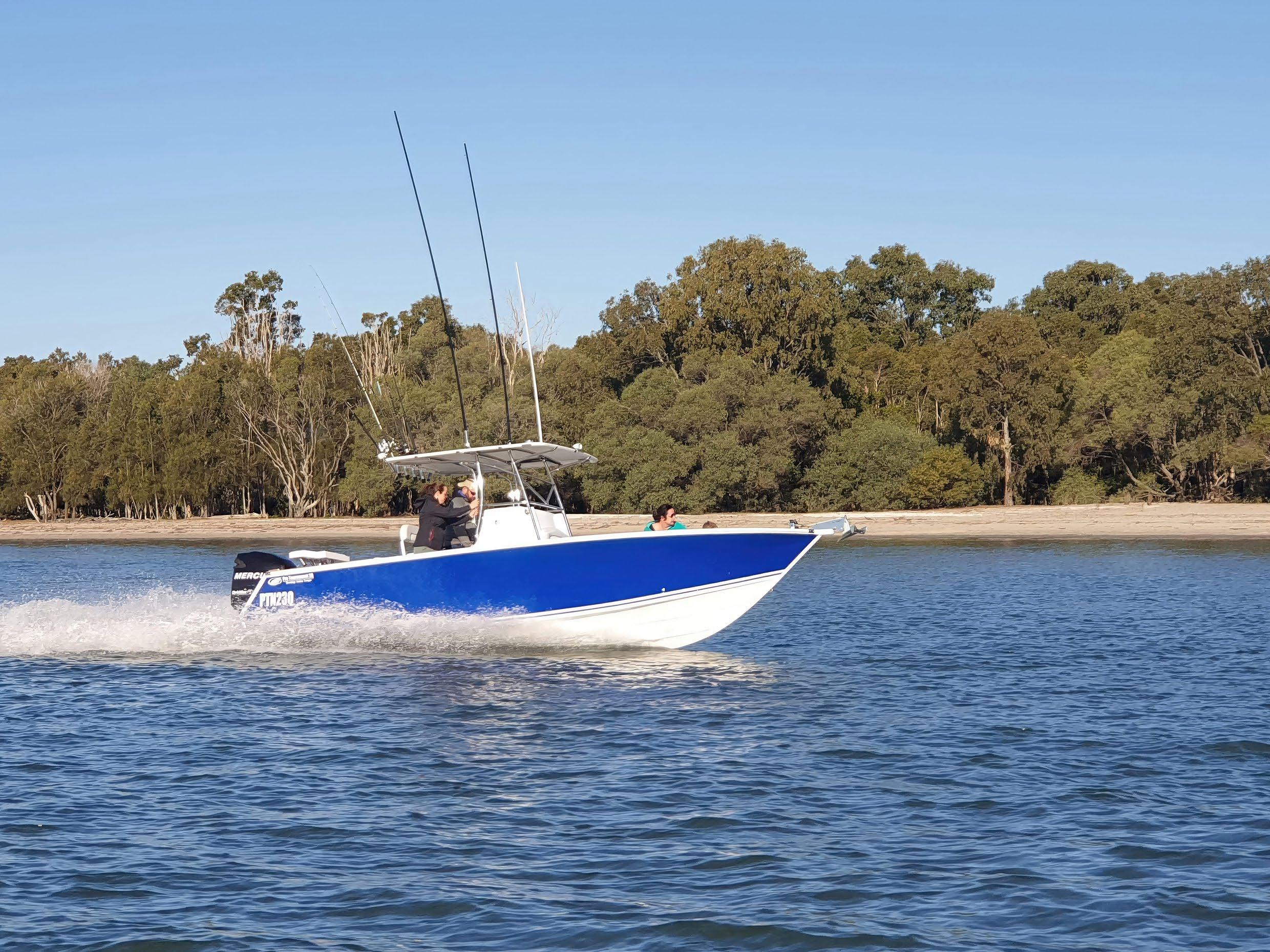











In what now seems like another lifetime, I lived in an idyllic location at Wategos Beach, Byron Bay. The year was 1979/1980, and I had ventured away from life as a young boat builder in Melbourne to take my gorgeous lady for a life of sun, surf, sex, freedom and debauchery in paradise as was the done thing in the era.
I surfed and fished everyday living a wonderful life in the upper level of a house that looked east to north-west offering million dollar views of Julian Rocks, Brunswick Heads and glimpsing the evil of the skyscraping Gold Coast.
Every humpbacks tail has different markings, some are so distinct that they have been allocated an identification number or even a name.
I do not recall having ever seen whales during that time.
During the same period, my brother worked firstly as a commercial trap fisho, then on the prawn trawlers making Brunswick Heads home port. In his own words, “In my six years at sea from 1979 to 1985 we only ever encountered two pods of whales, although as my bunk was below the waterline, I do recall listening to the mystical whale songs more regularly.”
Many marine species were hunted to near extinction during a terrible period in Australian fisheries.
Thankfully, in most circumstances we Aussies, and many of our visiting nations, eventually saw the light and changed their methods and practices, and today we see the priceless results of such an effort, especially with whales.
We now see entire tourism industries thriving on whale watching expeditions, especially on our south-east coast. From the deep cold south right through to their migration destination in the protected waters of Queensland’s Hervey Bay, there are terrific south coast portals such as Portland, Warrnambool and right around the Great Australian Bight leading back up traditional paths in the West.
I personally say thanks to the undeniable results forged by the front line battlers such as the Sea Shepherd Foundation. Yes, their methods were often those of pirateering, but it was certainly a case of fighting fire with fire whilst the rest of those “responsible” cowered behind their political shields.
As a result, we have experienced a massive increase in the migrating whale population. My beautiful lady Alison and I spend many hours just sitting on our south coast balcony watching whale after whale feeding, breaching and frolicking as they pass by our view during their migrations. They often dwell and play surprisingly close to shore, providing spectators with heart warming displays of nature at its finest, especially when they have young joining in the festivities.
Yet the increased population is also sharing the water with the vast number of vessels on similar paths. We get to see the majestic whales from a distance, but now and then you find yourself amongst a herd, or even approached by a seemingly single mammal that pops in to say g’day!
In the last twelve months alone, I have packed up and moved from fishing spots a number of times as I find myself unwittingly in the course of a herd of broaching whales as they frolic up the coast. The last thing I want is some 40 tonnes of live blubber accidentally tail whacking me, or landing on top of my boat like what happened tragically at Narooma only recently.
As much as we love and celebrate these magnificent mammals, they are an increasing safety consideration for all offshore boating activities. In the following article, Alison takes you through much of the life and habits of our returned populations of whales. We hope you enjoy them as much as we do...
IMAGES – Sapphire Coastal Adventures, John P Goodridge, Alison Kuiter
Alison Kuiter shares the excitement, thrills and dangers that come with watching these magnificent mammals of the sea.


Every year between April and November, the Pacific Oceans nutrient rich East Australian Current becomes a Humpback Highway with whales migrating north to give birth or mate, and then returning south later in the year to gorge in frigid, yet abundant Antarctic oceans.
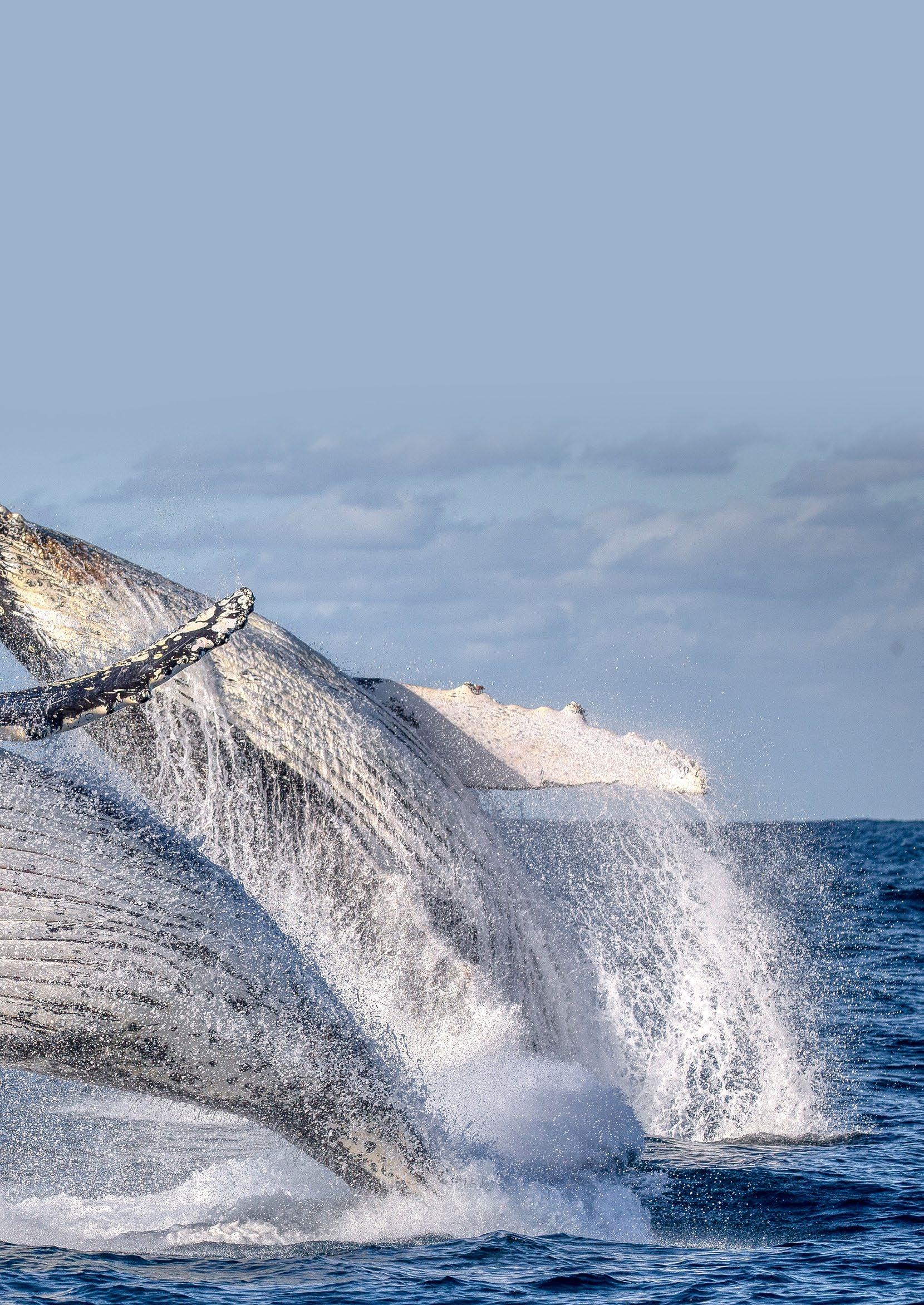
Their scientific name, Megaptera novaeangliae, meaning “big wing of New England” was originally named by European whalers in the prolific Atlantic Ocean off eastern USA. The title refers to their giant pectoral fins, each of which may grow to an enormous five metres long, whilst their common name refers to the fatty hump on their back that is accentuated by their flexibility when diving.
Can you imagine the power needed to launch 30 tons of blubber out of the water.
They are rorquals, which means they don’t have teeth and rely on a set of baleen brushes in their mouth which filter out the water after they have gulped up a school of krill or fish. Between their lower jaw and navel is a row of pleats which expands to allow them to engulf thousands of litres of food laden water which is then expelled through the baleen brushes, leaving just fish or krill to be swallowed down a rather small oesophagus.

Humpbacks feeding, showing the row of baleen used to sieve their food from a mouthful of water.

Humpbacks are chunky whales and move quite slowly compared to most other species. This led to them being easy targets for whalers with their numbers on the east coast dropping to no more than 100 animals when whaling was banned in the 60’s.
Thankfully, with careful but often confrontational management, their numbers have returned dramatically with an estimated migration of 40,000 humpbacks alone on the east coast migration. Which provides great opportunities to observe their behaviour and appreciate some of the funnier side of these animals. Even adults enjoy scooping a
large piece of kelp up on their rostrum (top of the head) and bobbing around till it slides down their back. They will often play with seals and dolphins after they have shared a fish feed together, chasing and rolling around. Sometimes a few mothers and young will congregate for a play session with the kids breaching, slapping and rolling around together, then they separate and continue their journey.
Two adult whales played with a large piece of sea weed to the amusement of all those watching.

Dolphins often feed alongside the whales and enjoy a game of tag with the whale watching boats.

The east coast of Australia is a fantastic place to view the whales with many high rocky headlands and a whale watching company in most ports. On the more populated east coast, Queensland’s Hervey Bay is a very popular northern whale watching destination, yet many humpbacks travel as far north as the Great Barrier Reef. Others will travel from Antarctica to a similar latitude in the west, somewhere around the Kimberley coast, completing their four to six months round journey of around thirteen thousand kilometres.
The first to head north in April are the young males that are typically eager to get to the breeding grounds. Then come the pregnant mums, single females and the potential fathers. Females who are ready to mate produce estrogen, which can attract several males who pursue her in the hope of being the chosen one. Humpbacks are not monogamous and may mate with several partners over the season. The northward migrating whales often use wider currents further to sea but can nevertheless put on a great show, with males breaching, fin/tail slapping and general shenanigans.
As with many species in the animal kingdom, females are bigger than their partners, weighing up to 40 tonnes and 18 metres in length. Humpbacks reach a relatively early sexual maturity at about four or five years, which has helped the population climb out of near extinction. The mothers need to carry a two tonne calf when pregnant and accumulate enough fat for themselves and to produce milk for a youngster.

Once they reach the northern coral reefs, females give birth to the calf they have carried for eleven and a half months and start expressing fatty yoghurt-like milk for junior to gulp up. Female calves need to consume about 500 litres of milk daily and put on about 50 kgs a day to prepare them for the long journey south into the freezing waters of Antarctica. The smaller males eat less and hence don’t grow as quickly. Adult males compete to woo the female with love songs, often mating with more than one female before heading back south in search of food.
Males and now pregnant females head south between September and November, first skirting the coast and feeding on schools of small fish. Sometimes there are large bait balls of fish off the south coast of NSW and the humpbacks either “bubble net” these or, more commonly, plunge feed by coming up under the school and taking huge mouthfuls. Bubble netting is a group of whales working together to herd a school of fish by circling them and constantly blowing bubbles to form an imaginary wall.
There is nothing more spectacular than seeing an adult humpback clear the water.
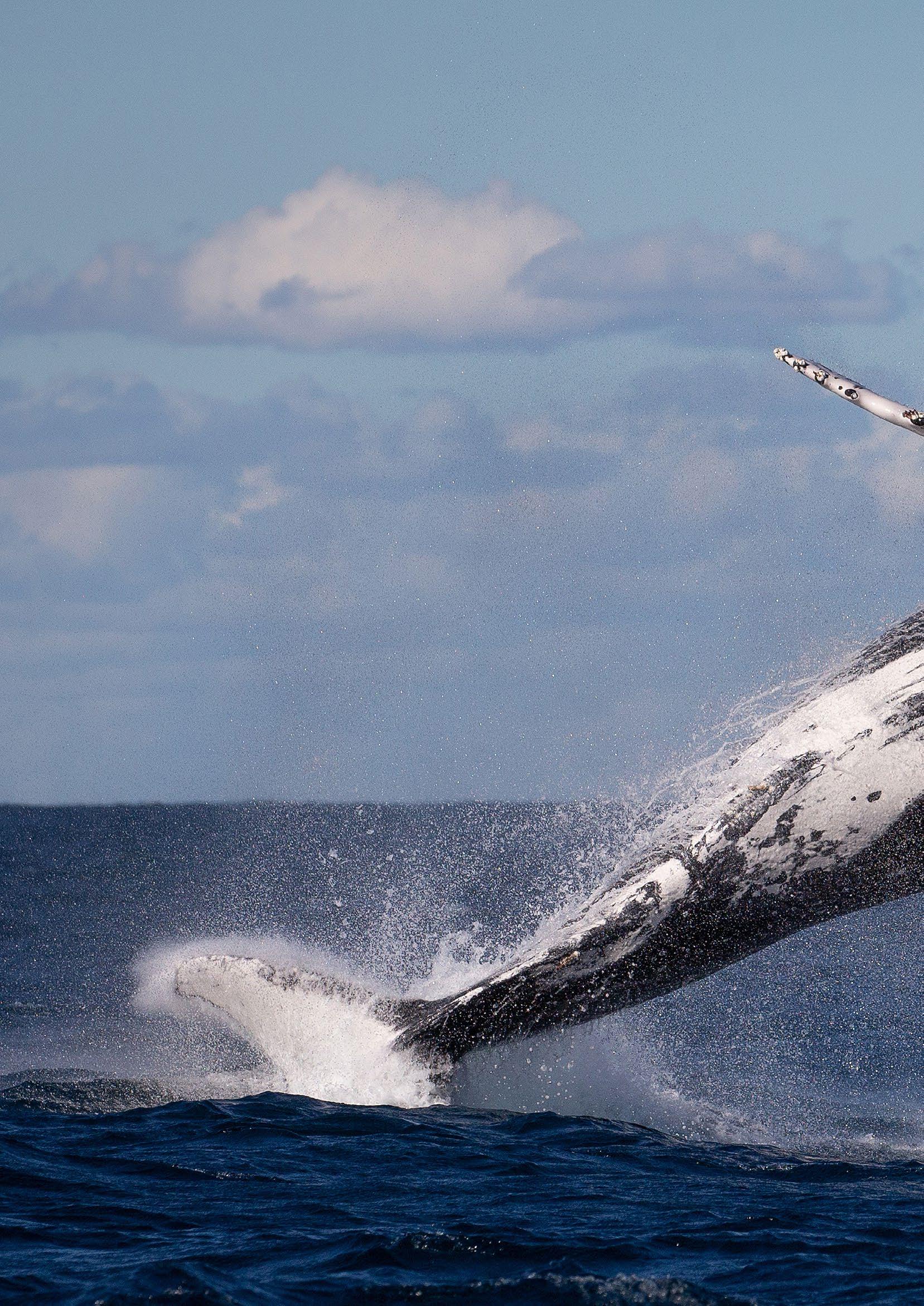
In 2020 & 21, large congregations of Humpbacks gathered off Bermagui, forming a huge feeding pod, bubble netting bait balls of small fish. These bait balls often attract Brydes Whales and dolphins all working together for a feed.
Mothers and young, often with an escort male, make a slow but steady journey southwards quite close inshore often stopping along the way for a feed or lessons in how to become a successful whale. Junior must learn how to breach and tail slap and this often becomes a prolonged play session until worn out and needing another feed. The mother will keep the young in shallow water on the southern migration as most of their predator’s approach from underneath. When humpback numbers were low, the Killer whales started hunting other prey, but now they have been regularly seen following the migration in the hope of catching a calf or injured whale.

The east coast migration takes about three months each way with a stop in the tropics for birthing and mating and leaving about four to five months in Antarctica to feed and build fat supplies. Young are suckled during their first migration south and then must start feeding for themselves on the rich stocks of krill under the ice.
Being warm-blooded mammals, adult Humpback whales often flap their huge pectoral fins around in the air or water to help cool themselves, and often make huge slaps on the surface to communicate with others or remove barnacles. The bumps on the humpback’s head and fins are sort of large hair pores, but they also have a bunch of barnacles hanging on in various places. Breaching can also be used for protection from a predator. Males also breach as a show of strength and possibly just a way of just letting off energy. On very windy days when the ocean is choppy, the whales obviously enjoy breaching and tail slapping, putting on a fantastic display.
Some humpbacks carry scars from encounters with ships or killer whales, but each one’s tail is different and can be used to identify individuals. Humpbacks in the northern hemisphere have darker bellies, whilst ours have mainly white underparts. Recently we are seeing more dark bellied whales in the south as interbreeding occurs in the tropical waters around the equator, although it is uncertain if some of the northern hemisphere humpbacks are migrating south into Antarctica.

Whale watching tours have often provided the opportunity to observe other species of whales that share the waters with Humpbacks. The Brydes (pronounced, broo–dees) prefer warmer water, but will come south to feed along the coast of NSW, often chasing fish with the agility and speed of a dolphin. They are also rorquals with two nostrils, a long slender body and growing to a similar length of a Humpback. The appearance of the Southern Right Whale – Eubalaena Australis, that usually don’t venture too far north up the coast, completes the baleen whale trifecta.
Whether on a boat or a rocky headland, one never tires of seeing these huge animals cruising up or down the coast on an annual 10,000 kms migration.
Orcas or Killer Whales will often follow the humpbacks in the hope of catching frail or young whales.

It must be noted that the dramatic increase in whale numbers has provided many opportunities for recreational boats to get up close and personal to these majestic mammals. Every State has distance regulations that should be strictly adhered to and thus protect these mighty whales. However, increased stock coinciding with boating growth has led to more and more interaction. Often whales will surprise you by breaching close to your boat as they can stay underwater for eight or more minutes between surfacing for breath.
The Humpbacks come very close to Sydney Harbour putting on wonderful displays in the setting light.

This humpback has been hit by a ship propeller and will carry the scars forever.

In an unfortunate recent incident, a breaching whale unintentionally landed on a small half cabin boat in close off Narooma, NSW badly injuring one occupant and smashing the super structure. Our advice is that if you see breaching whales heading in your direction, then get out of their way.

The Australian government has produced guidelines for whale and dolphin watching. The guidelines describe the regulations that apply in all Commonwealth waters as well as providing additional advice on appropriate behaviour when operating a boat near whales and dolphins.
The Australian National Guidelines for Whale and Dolphin Watching 2017 have been developed in consultation with the states and Northern Territory government, industry, scientists and non-government organisations. They provide a clearly defined set of standards for all human activity around whales and dolphins.
In Commonwealth Waters vessels must not deliberately approach whales closer than 100m. Within 300m vessels must use caution and travel at low speed. Touching or feeding whales and dolphins is prohibited.

Every State has their own set of similar regulations for conservation and protection of whales and dolphins in coastal waters (out to the three nautical mile limit). For further information please see here:
www.dcceew.gov.au/environment/marine/marine-species/cetaceans/whale-and-dolphinwatching
Australian waters are home to 45 species of whales and dolphins, and all of them provide a warm and gooey spectacle to even the most hardened seadogs. We have magnificent land based platforms throughout the east, south and west coast for the landlubbers and offshore explorers are often rewarded with an up close and personal encounter with some of the words most magnificent mammals.


As John Willis reports, it’s not only important to maintain your vessel and equipment, but your composure as well.


I have just hung up the telephone from my friend Kane, who described one of the most frightening on-water experiences of his life. It’s getting onto three years since he has enjoyed a good offshore experience due to COVID, work and family considerations, however the current run of big tuna off Victoria’s far west coast was just too enticing to refuse.
With all the pressures on most young families, none of Kane’s usual deck mates were available for a day trip in the predicted ideal conditions off Portland so he turned to social media to find a decky to join him for the trek from his Melbourne home. Instead, what he found was a fellow who owned a larger offshore style rig who was also looking for crew for his freshly re-powered and re-fitted 21’ centre console, plus another member of the same social media site joined in for the journey.
However, the frustration began early in the day when the owner of the rig refused to fish around crashing bird schools because he couldn’t see any fish on his depth sounder! Instead, they set off for many unproductive hours trolling. During the day, the skipper retreated into the cabin, leaving the crew to run the boat, and conditions then somewhat worsened. They considered the weather still quite safe, however, they began taking occasional waves and spray over the bow. “Not a problem, she’s a self-draining hull with big scuppers,” they thought!
The major problem only showed its ugly and dangerous face when the boat’s handling became a bit sloppy, so the crew turned for home. As they tried to accelerate, the bow rose and the transom sank with the outboard unable to raise the hull to plane—it was full of water!
Thankfully, she was a foam filled Yankee hull, but it had just been treated to some seemingly unprofessional modifications, leaving a large deck hatch unsealed and silently seeping water. Every splashing wave was unknowingly slowly filling the bilge cavity. On inspection, they revealed some very questionable workmanship, as well as a major problem—the only bilge pump was a tiny, manually operated 360gph unit without automatic float switch. To be crude, I could piss faster than this minimal flow, rendering the pump totally unsuitable for a 21’ offshore style boat. Personally, I put twin 2500gph pumps in my last 15’ centre console, one manual and one automatic, and I was very glad I did on more than one occasion!
Upon seeking professional advice on the matter, Gareth Johnson from Maritime Safety Victoria said, “We also have issues with boats that have sealed decks and bilge pumps. There is a powerful message here to ensure your decks are watertight, and you have an automatic bilge pump, or a bilge alarm fitted to spaces you cannot monitor.”
When the problem was discovered, the owner panicked, and the crew began bailing where possible with limited access to the bilge. The hull moved quite well with a reasonably level attitude at displacement speeds up to 6 knots. However, the owner wasn’t happy at such a slow pace and began constantly forcing the throttle down to try to speed up in his frightened haste to get home. Every time he tried to accelerate further, the water rushed to the stern, consequently raising the bow and sinking the transom down to a point where the engine cowling was on, and sometimes under the water line running the risk of “hydraulicing”. (Common industry term for sucking in water) They only gained one knot extra in speed and the boat handled very badly and the rig was becoming very susceptible to swamping!
The panicked owner again displayed his inexperience by wanting to call for “Mayday.” To be clear, you should only call for “Mayday,” if: “The distress call ‘MAYDAY’ (spoken three times) should be used to indicate that vessel or person is in grave and imminent danger and requests immediate assistance.” (Ref Maritime Safety Victoria)
Kane had already contacted a competent and well-equipped shore based companion and given his position and regular updates. They agreed that if the companion had not heard from them at 15-minute intervals, he would then immediately come to their aid and alert rescue authorities. At 6 knots they were making good progress relatively safely—and only in distress when the owner tried to go faster in panic. There was almost a mutiny on board.
In my personal view at worst, they should have called a “Pan Pan”: ie “When a distress call is not fully justified, the urgency call ‘PAN PAN’ (spoken three times) should be used to indicate that a very urgent message follows concerning the safety of a vessel or person. The call details should be the same format as for a distress message except with the message beginning: ‘PAN PAN, PAN PAN, PAN PAN’.
There is a third recognised safety signal being “Securite” (spoken three times as SAYCURE-E-TAY) that should only be used when transmitting a navigational or weather warning, so probably not appropriate in this situation.
Our friends at Maritime Safety have asked me to emphasise the importance of making an early call to emergency services, rather than linking in third parties, or not making a call at all. Throughout most of Australia, marine safety service monitor VHF16 & 67 on a 24/7 basis. They will pass on Distress and Urgency Signals to the relevant rescue authority as well as broadcasting weather forecasts, navigational alerts, and offer radio checks at any time. These professional services allow a coordinated response to commence as early as possible according to the situation, and quote “also removes Chinese Whispers and allows the rescue coordinator to ask the questions they need to know while the boat is still afloat and able to communicate.”
An early response to a threatening situation is vital, especially in cold southern waters where, even with correct legal safety equipment, hypothermia can kill or permanently maim very quickly.

Which brings me to another point. VHF radios are the means of communications for most recreational boaters in Australian waters and the great majority of serious boat owners have them fitted and operational. However, most don’t know that “It is illegal to operate a VHF Marine Radio WITHOUT a “Certificate of Proficiency” (license) except in emergency situations. It is a legal requirement that you have a VHF license if you intend to use your radio for non-emergency regular use” (VBT)
“This is to make sure that you know how to use radio equipment safely, including correct marine radio protocols and procedures, as per the safety signals previously described.” (TSV)
However, all marine safety agencies would recommend that boat owners install VHF radios for safety, and it is generally agreed that in an emergency there is no requirement to hold a SROCP to operate a VHF radio as they do not want to promote safety barriers. Similarly, they do not condone non-emergency regular use and chit chat by unlicensed operators, especially on emergency channels.
There are 7 types of qualification, with the Australian Waters Qualification (AWQ) being the most applicable for the majority of inshore and offshore recreational boaters. The minimum qualification for a maritime ship station with VHF equipment is LROCP or SROCP and you must be 16 years of age or older to qualify. There is also the AWQ with which you can operate only within Australian Territorial Waters, but there is no age limit.
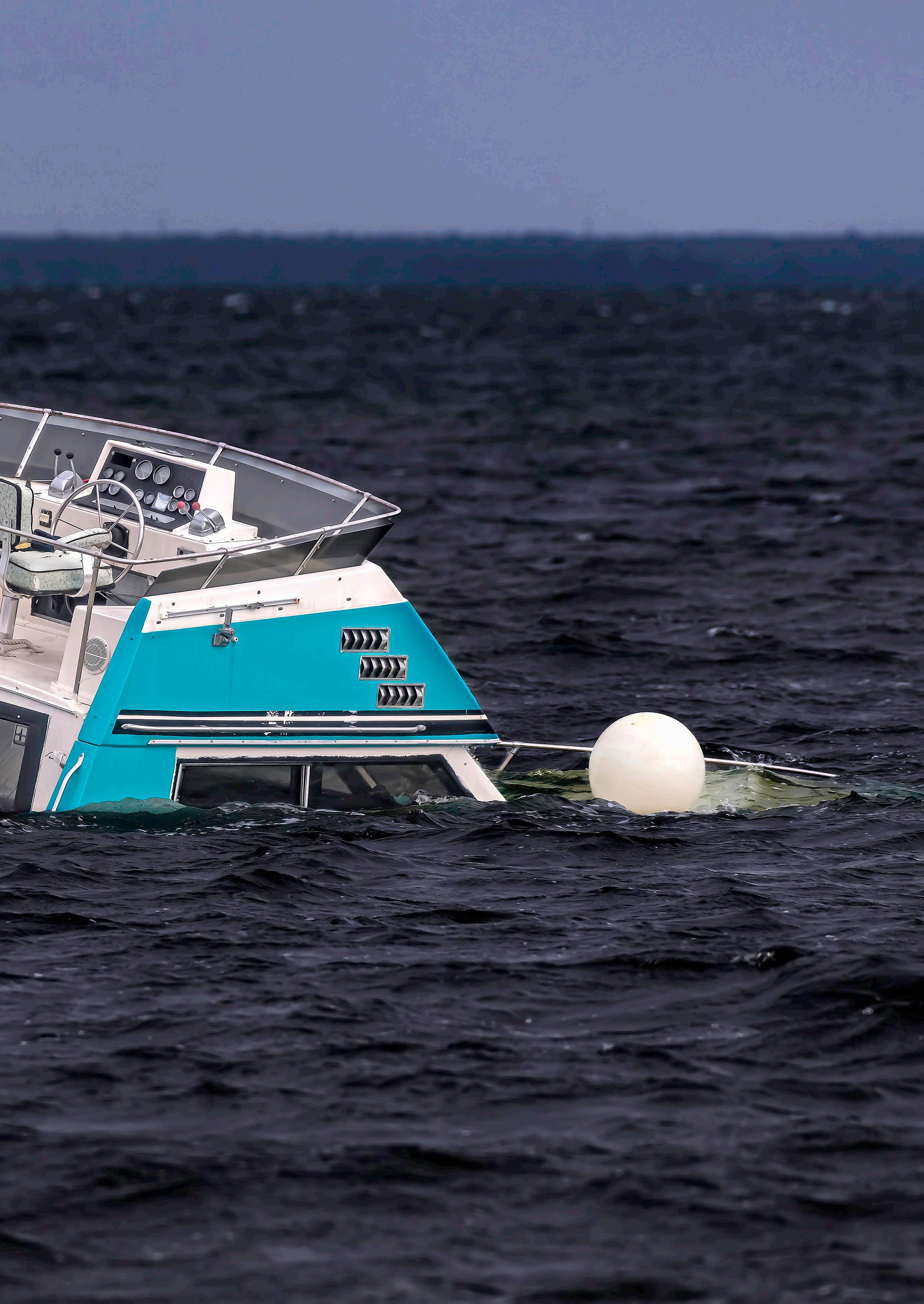
The AWQ is ideal for casual boaters who only need to operate a marine radio in Australian waters (within 12 nautical miles of the coast)” Alternatively for those travelling well offshore a “Long Range Operator Certificate of Proficiency (LROCP)” or for overseas hire of some charter boats and some commercial uses a Short Range Operator Certificate of Proficiency (SROCP) are possibly more applicable. (Quotes from ACMA—Australian Communications and Media Authority, Transport Safety Victoria and Victorian Boat Training)
There are many radio education and licensing providers around the country. Simply Google one close to you. It is certainly good practice logging in and out of your local marine safety provider on every excursion offshore. Note that an SROCP is not required for 27Mhz radios.
Was Kane’s experience an emergency? It’s not up to me to decide, however, I would certainly classify the situation as a “High Risk” scenario. This also highlights the need for recommended safety equipment for offshore use, including flares (coastal and parachute), EPIRBs, PLBs and appropriate life jackets. They MUST be quickly accessible and not stored under a bunk in the cabin, as was this scenario. I personally take my own fully serviced life jacket and PLB on every offshore outing!
Thankfully, Kane and his companions made it home under their own steam but with a good many lessons learnt. Kane said, “I will never trust anyone that I don’t know to go fishing with ever again. This idiot nearly killed us.”

Marine technology, like other fields, has been advancing at a crazy pace for the past few decades. The upshot is what used to be expensive boating toys are now reasonably priced. None more so than thermal and night vision cameras. So, let’s turn off the lights and have some fun deep diving into three go to entry-level night vision cameras.
First things first, let’s address the difference between night vision and thermal. Thermal cameras, sometimes mistakenly called night vision, are also effective during the day and in varying lighting. They detect reflected heat signatures against background temperatures. On the other hand, night vision cameras work with visible and near-visible light spectrums. Remember the footage from the first Gulf War (or second) featuring helicopter gunships in a bright green and black hue? That was light amplification night vision, which takes available light and enhances the camera’s vision. However, just like fashion, night vision technology has come a long way since the ‘90s and night vision now comes in colour!!
But why would you buy a camera, over a radar for example? Well, there is no denying a radar is a fantastic piece of tech as well, however radars will only show you something if it’s within its beam, so you don’t know what it’s NOT showing you.
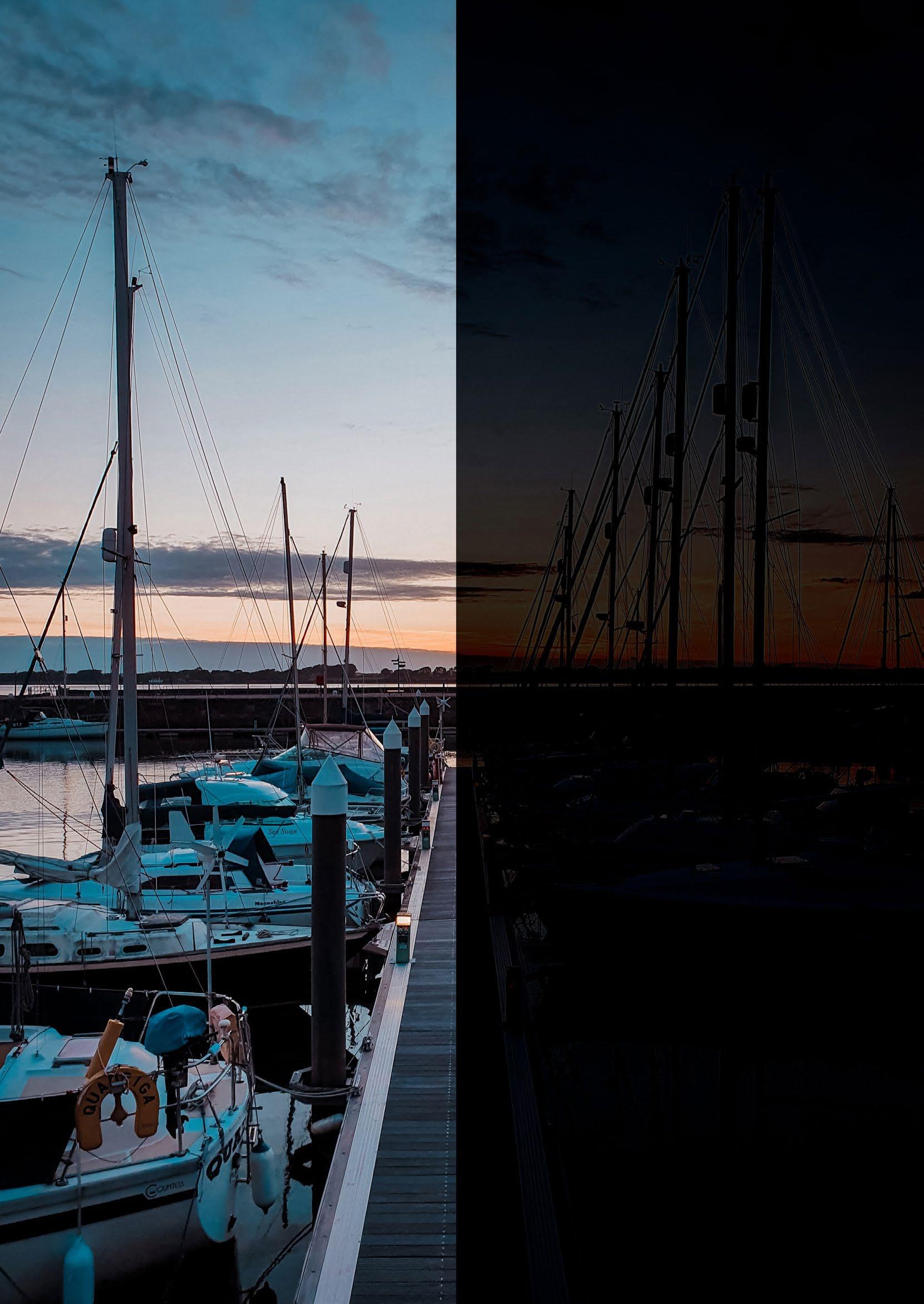
Whereas a camera just shows you whatever it’s pointed at. There is the uncomfortable truth that radar for the majority of recreational boaters, can be tricky to learn and read quickly, so when travelling at night in congested areas, referring to a camera display is often as easy as if you were looking at it with your own superman vision. Same, same, but different. Cameras can often be an easier way to see what’s around at night.

Let’s start with the cheapest option,
Nightwave night vision camera priced at approx. $3000 from the team at Sionyx. Known for their militaryfocused technology, Nightwave is their first entry into recreational marine cameras. This compact camera features a colour low-light CMOS lens with a wide field of view, making up for the fact that it doesn’t tilt or pan but is fixed in place. However, it can be adjusted to suit different mounting positions. Despite not being able to move, its wide field of view compensates for this limitation, considering that most of the time we want to see what is in front of us.
The Sionyx Nightwave connects to most MFDs (MultiFunction Displays) with video inputs via a thin BNC video lead (supplied). Alternatively, it can connect to a smartphone or tablet via the WiFi app, allowing you to run a separate tablet on a mount without sacrificing screen real estate on your MFD.
Being in colour and full HD at 60fps, this camera offers the sharpest image movement and clarity on this list. However, it requires a modest amount of ambient light for a good night-time image, which can be provided by starlight, moonlight, shore-based lights, or onboard IR lightbars. If you’re looking for an addition to your boat to help you navigate back to a marina or boat ramp in the dark, this would be a great camera to consider.

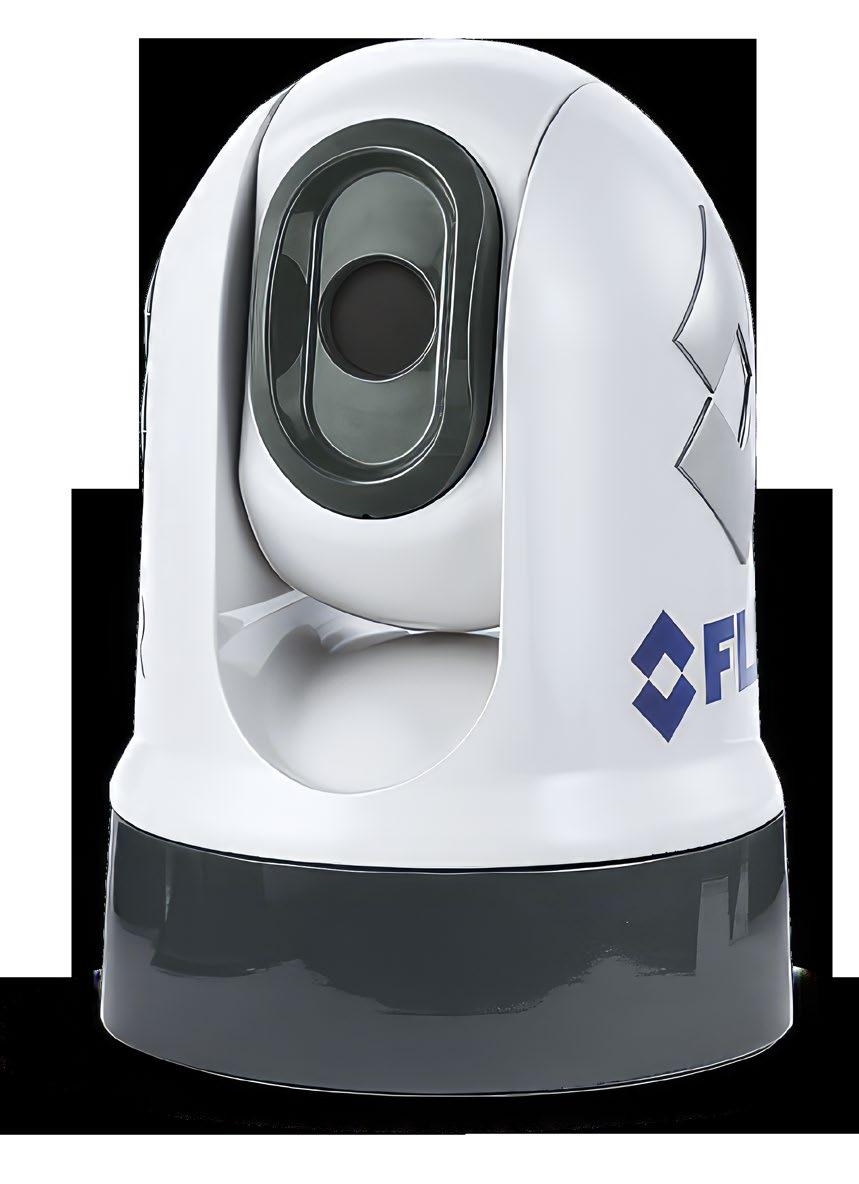

FLIR M232 priced at approx. $5999 from Teledyne FLIR. This thermal camera has been the go-to standard for those wanting to enter the thermal market for quite a few years now. It features full pan/tilt movement, providing real situational awareness credibility. With a 9hrtz 320x240 resolution core, it may appear a bit shaky and dull compared to the latest iPhone, but being thermal it has no issues looking out ahead even when faced with a setting sun that blinds the naked eye or when it’s pitch black.
Its most notable feature, however, is when paired with a Raymarine Axiom series MFD, unlocking the ClearCruise feature. This groovy setting automatically tracks targets on the screen, identifying them with a yellow box and beep sound. It’s like having a second set of eyes that can see in the dark, watching out ahead as you zoom back to the ramp, trying to avoid stealth anglers in boats without anchor lights.

Ulysses Micro. Prices at $6299 from Omnisense. Hailing from Singapore, Omnisense has established itself as a major player in the thermal camera market. For those unfamiliar with the brand, they offer an impressive range of cameras, from the high-end $50,000 mega machines to the humble Ulysses Micro featured here. The Ulysses Micro shares similar overall proportions with the FLIR M232 but sets itself apart with a 30hrtz refresh rate, delivering a remarkably smoother image.
However, its standout feature lies in its ease of installation and control. With just a single Ethernet cable connecting the unit to a module box, it can be effortlessly integrated with an MFD or any monitor using analogue video. Onscreen touch controls come as standard, and optional joystick remotes are also available. Let’s not forget the illuminated logo - a seemingly small detail, yet one that adds to its appeal.
Setting silliness aside, the Omnisense Ulysses Micro thermal camera boasts a slightly wider field of view and a higher refresh rate, making it an excellent choice for those seeking a higher-spec system.

So, there you have it. Three of the best performing entry level, low visibility cameras available at the moment. But like anything, for a few dollars more, a whole new world can open up for you. But that’s an article for another time!
Safe boating!
Marine biologist Sheree Marris has quick look at the rocky relationship of the Adelie penguins.


spending a week trekking across 100 kilometres of frozen wilderness, all in the name of love. You’d freeze your bits off or have some serious shrinkage issues.
Spare a thought for the male Adelie penguins who waddle all that way to the rookery for a little “nookery”. Once there, they make preparations for the multitudes of ice maidens coming their way.
Forget the chilled champagne, candles or soft sensual music; there’s only one way to get a female penguins rocks off. And that is to get some rocks on. Males rush about gathering rocks for nesting platforms that will keep a females eggs high and dry when the ice melts.
When the girls arrive, the guys puff out their chests and strut around – sound familiar? It’s the classic “hey baby, look at me” behaviour.
Then the male makes his killer move, rolling a rock to the female. If she accepts (and what girl can resist a guy in a tux?) he’s just scored himself six years of hot penguin sex.


His new mate is willing to do anything to ensure the safety of her eggs, including secretly putting out to loveless batchelors in exchange for more rocks. She’ll lay belly down to let some male jump on her back to do the deed. It’s all about the rocks….. because when it comes down to the future of her children, a girls gotta do what a girls gotta do.
Adelie penguins; women of the world salute you!
